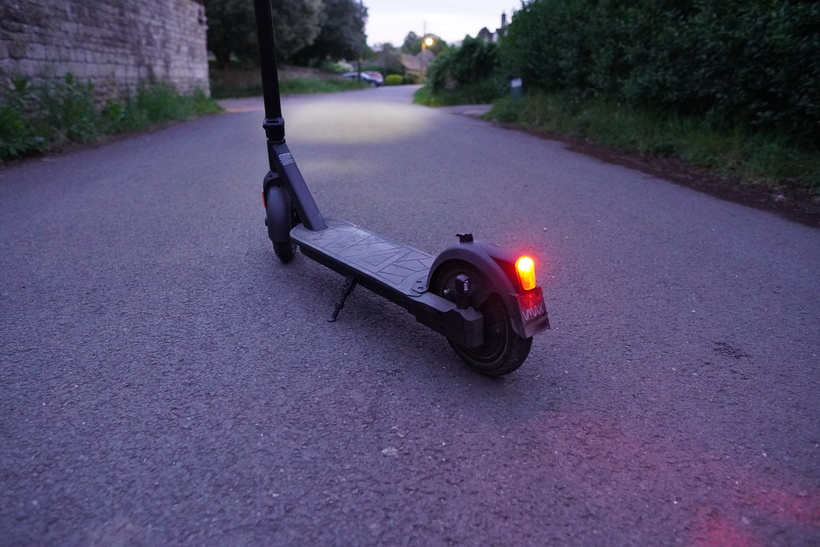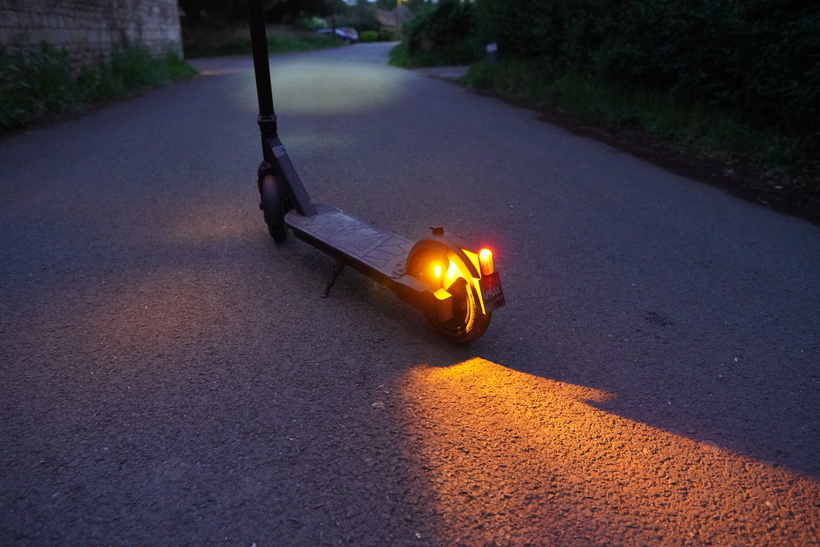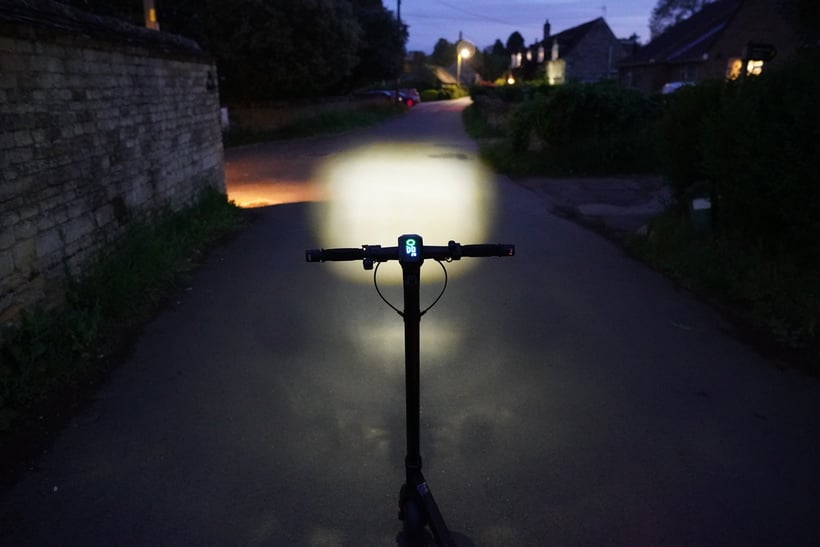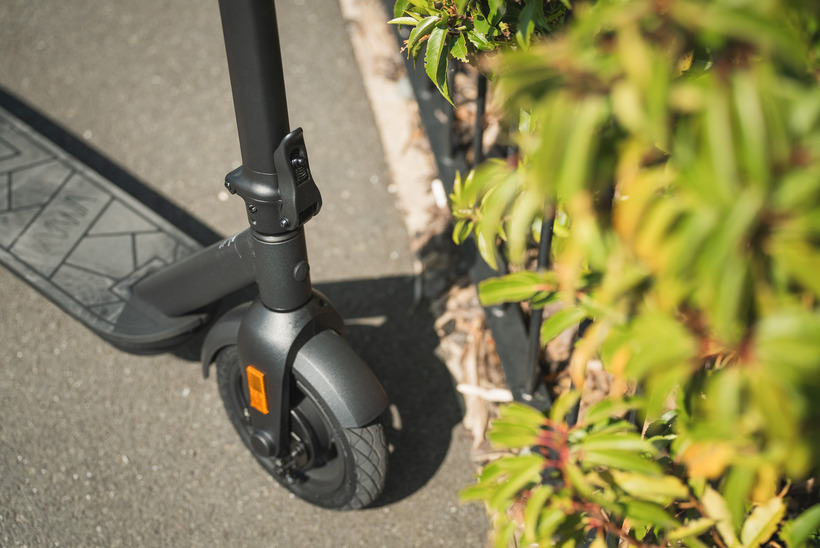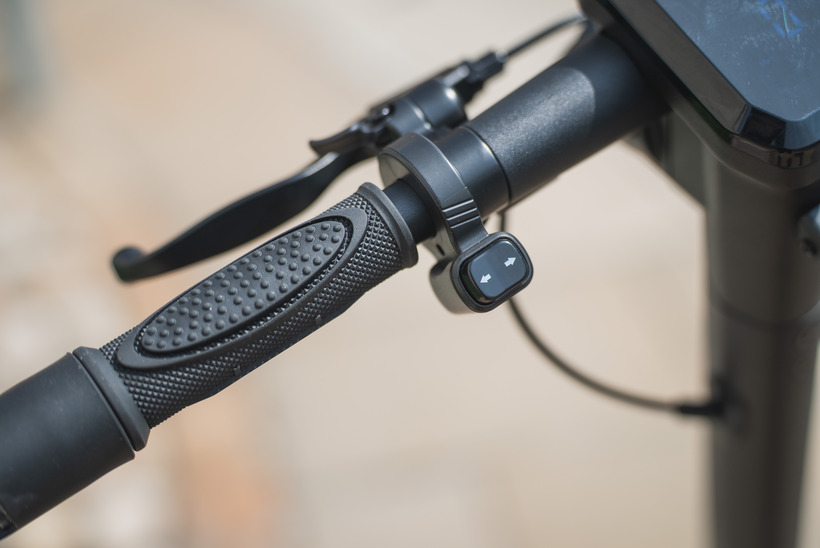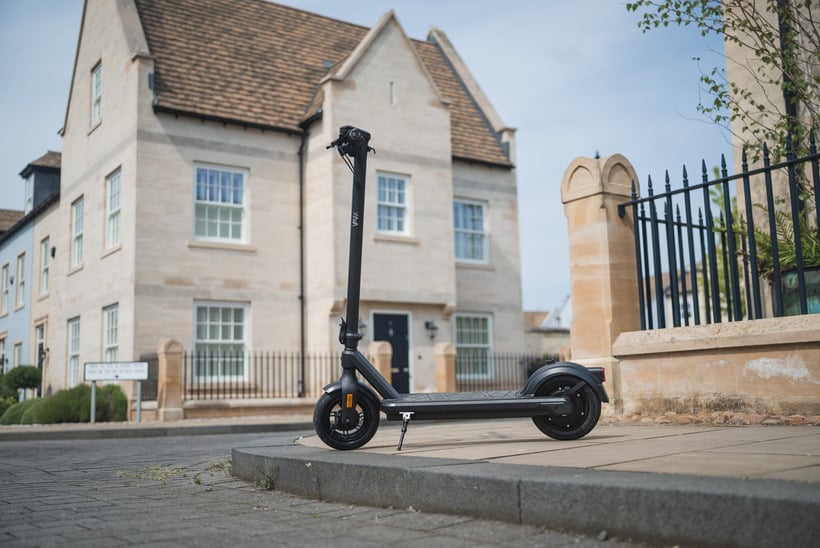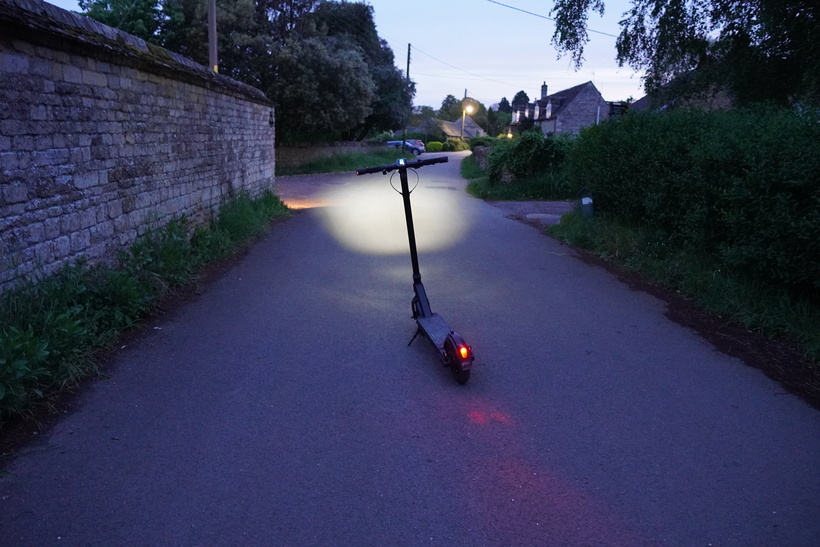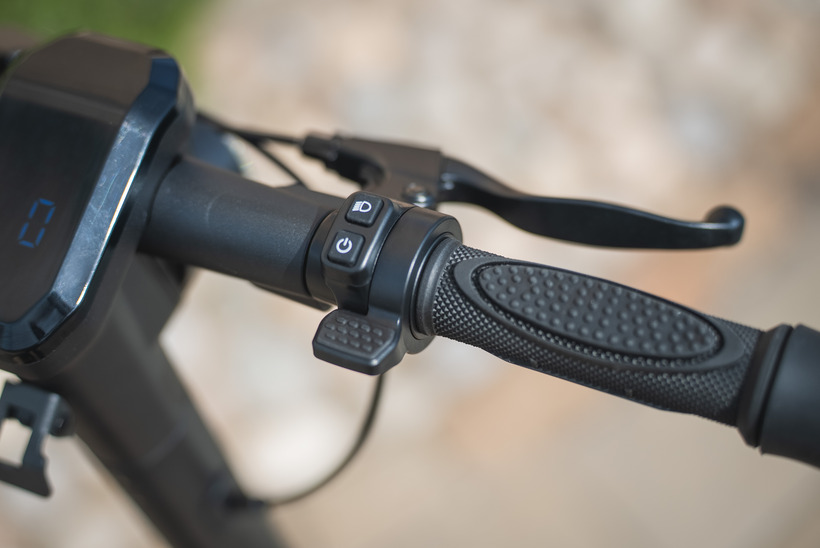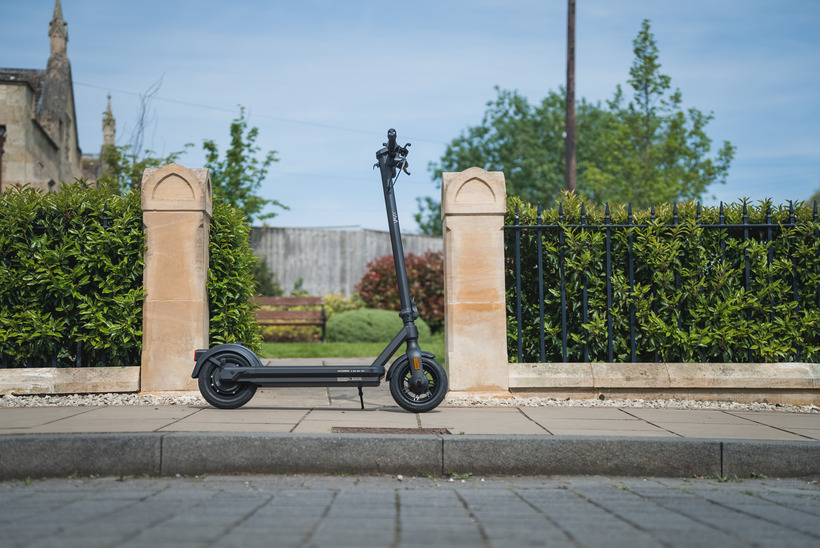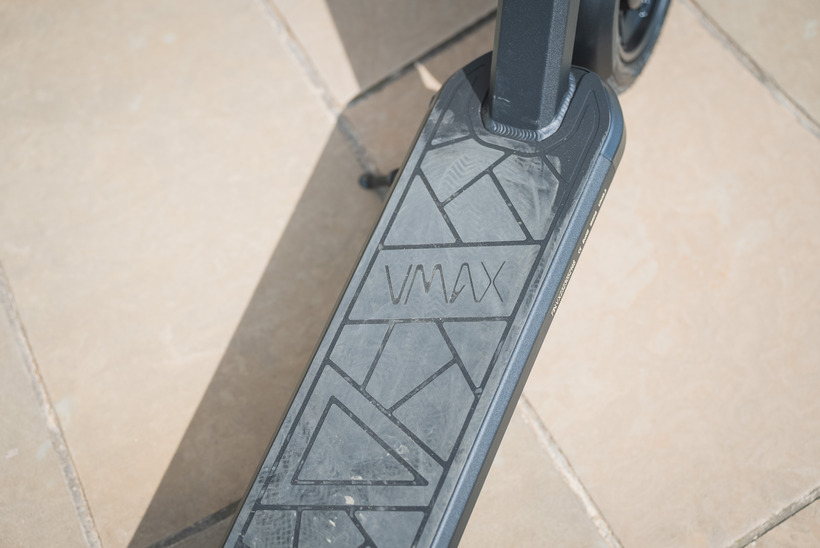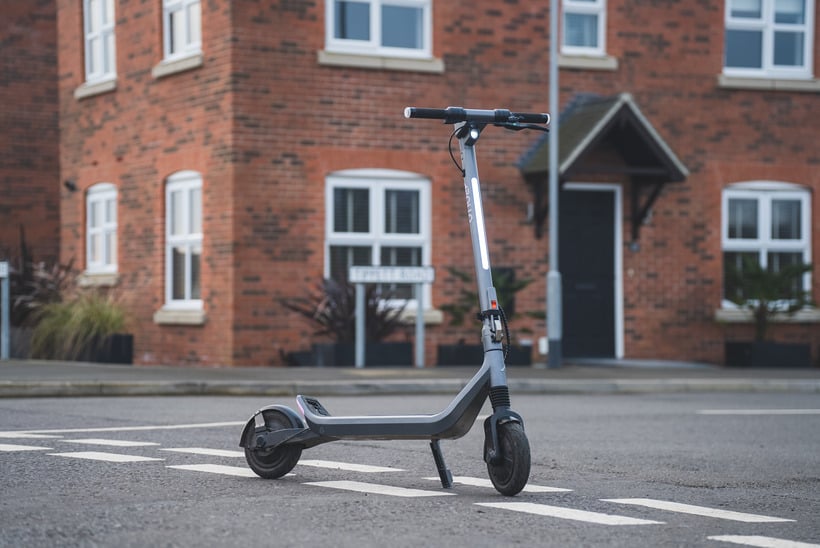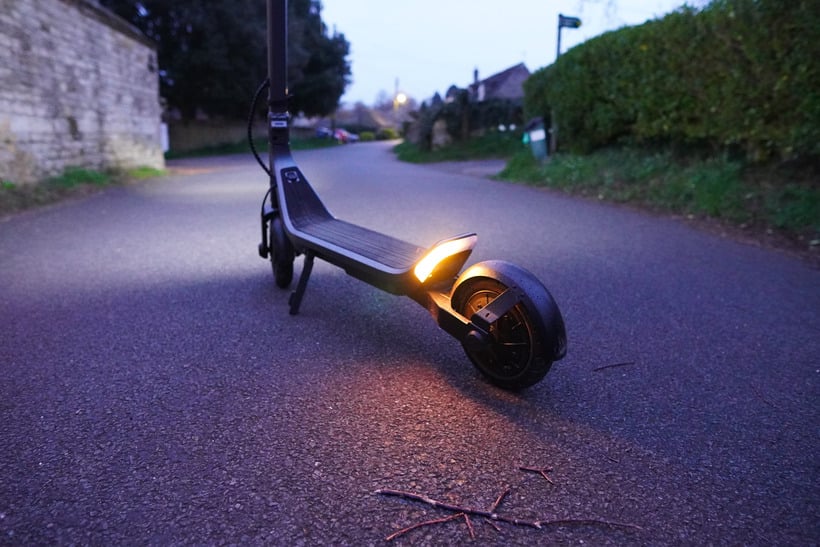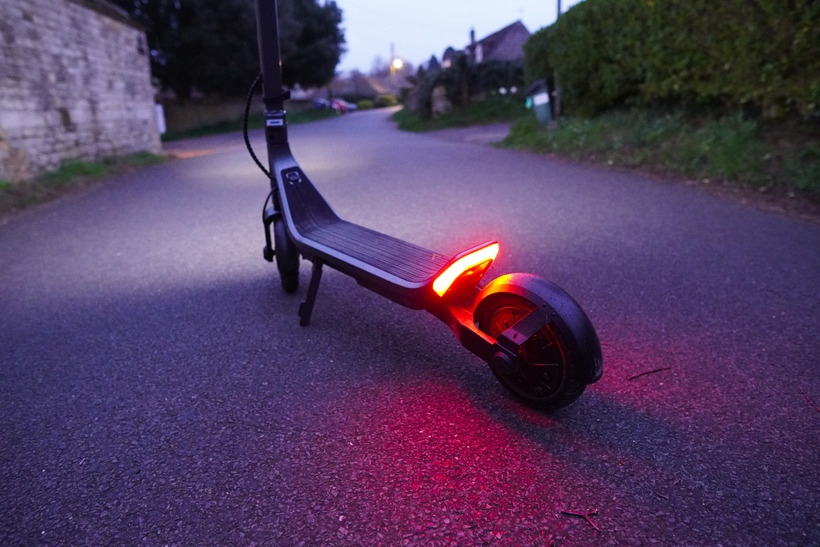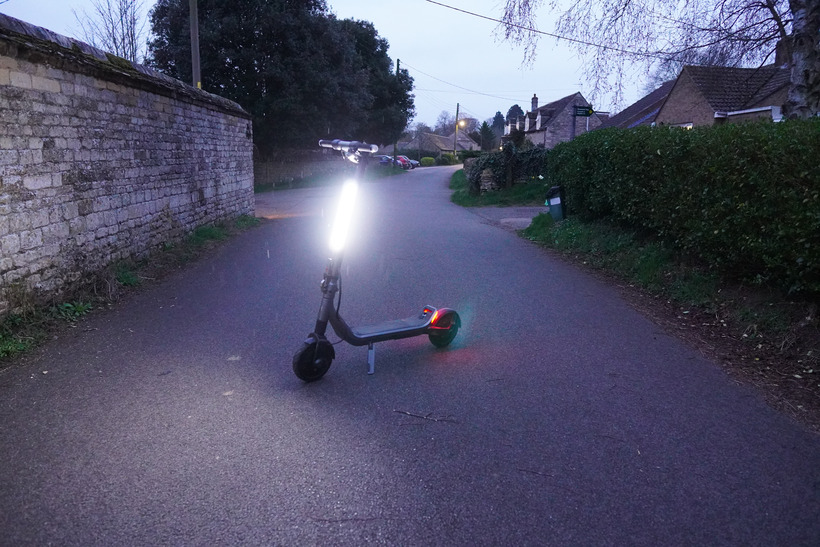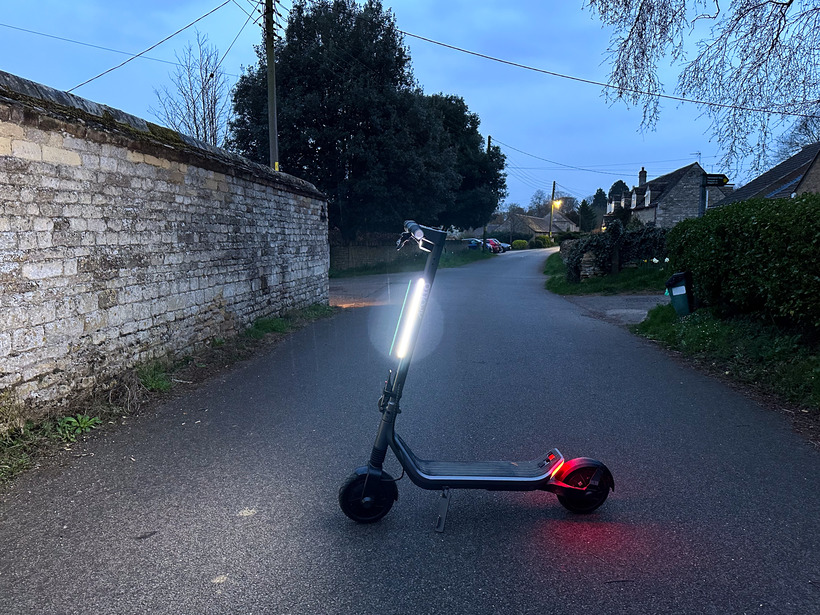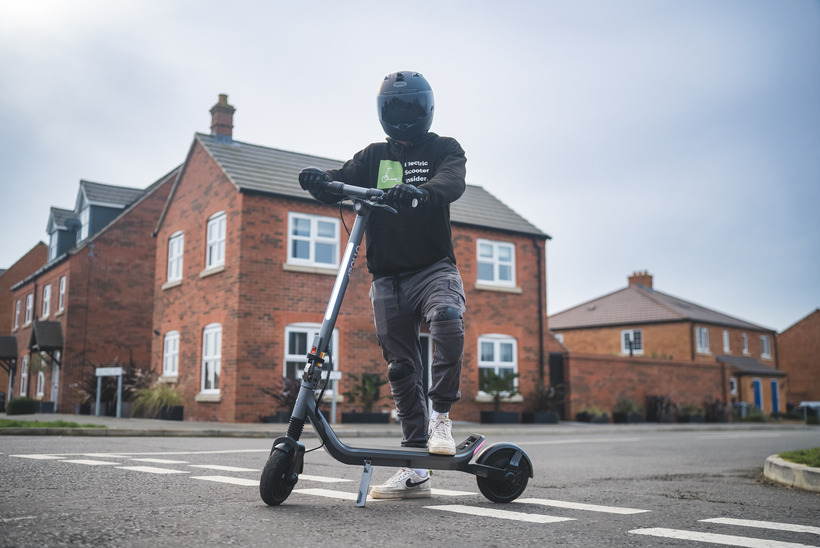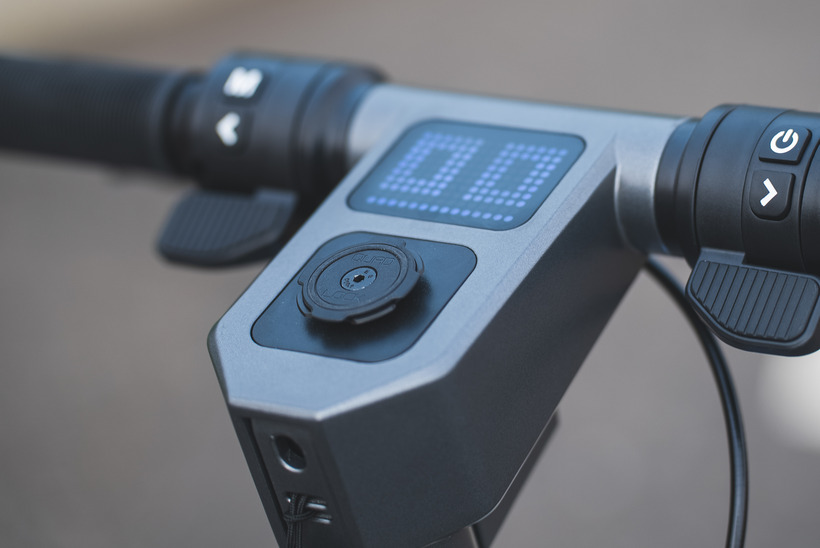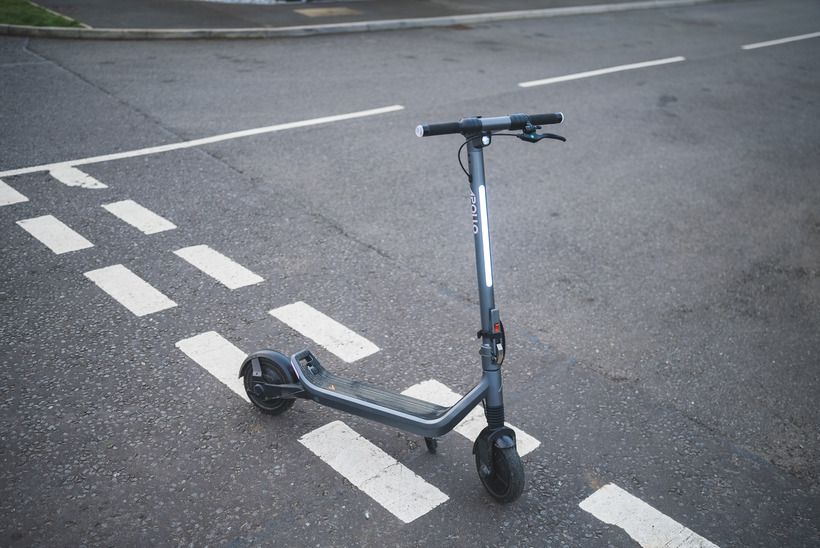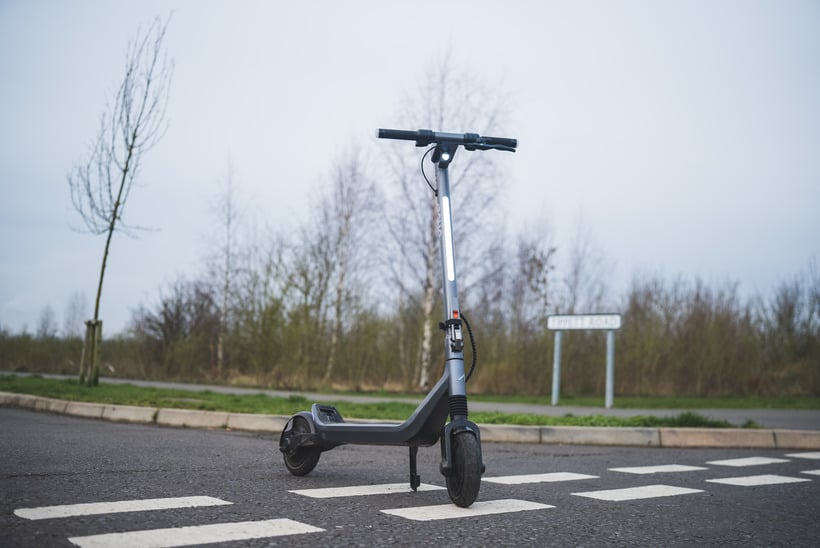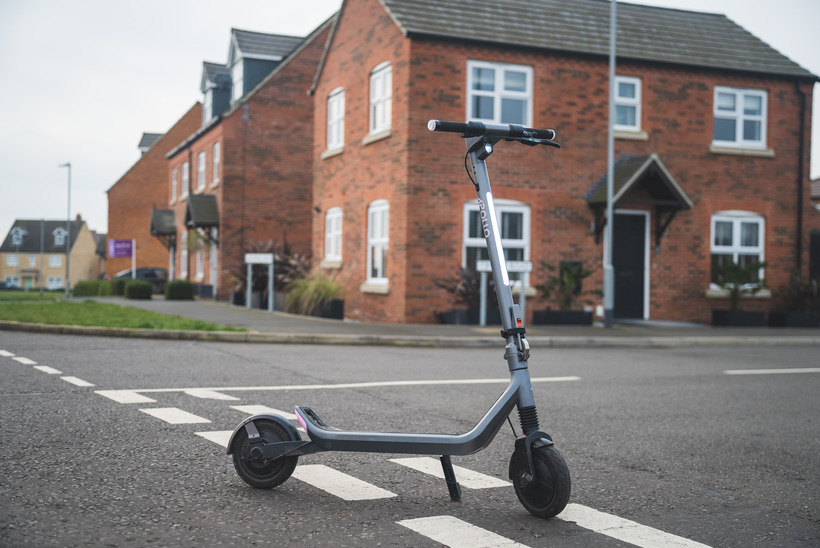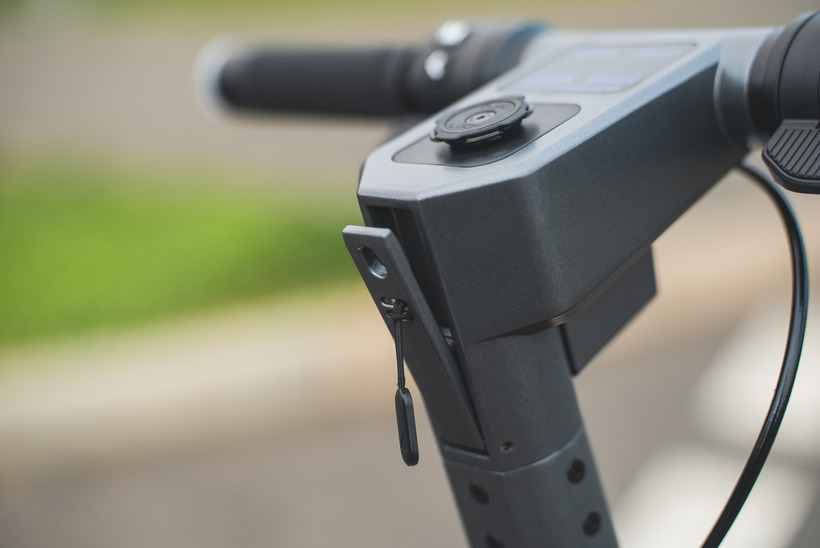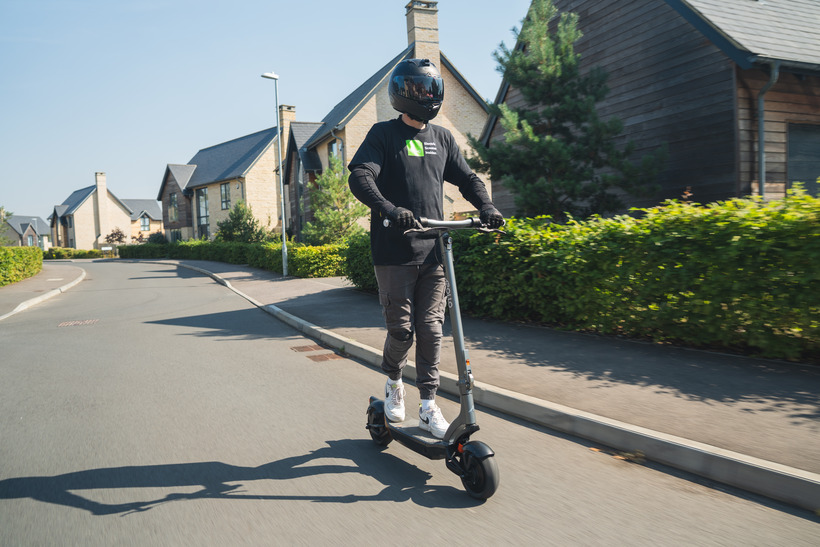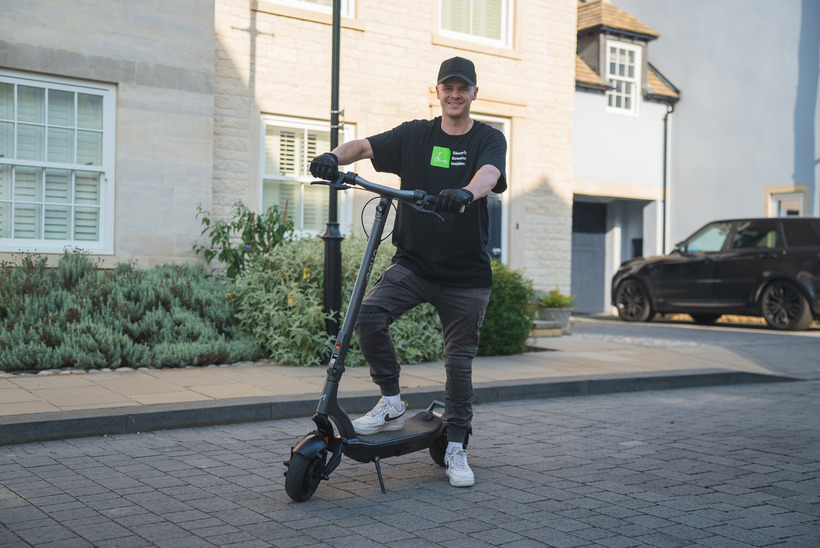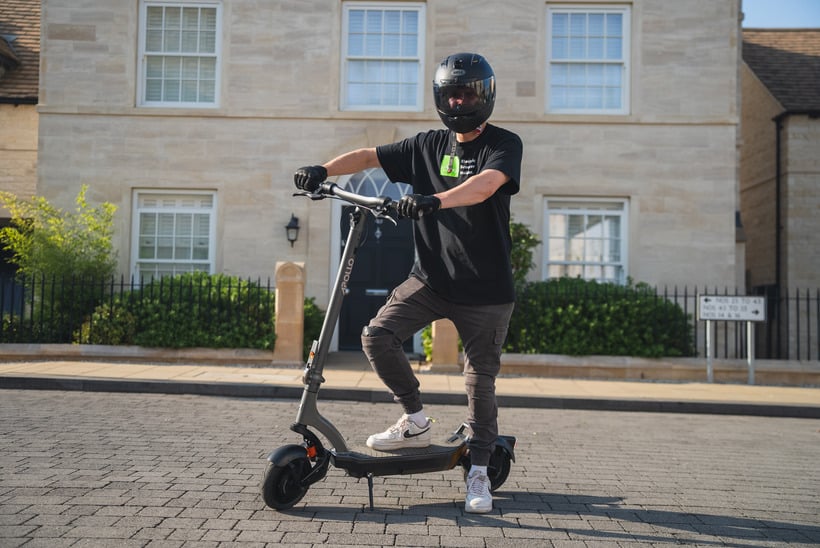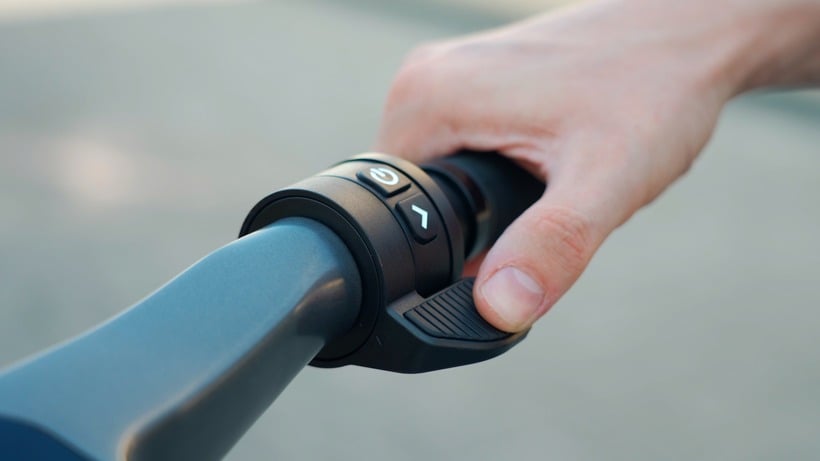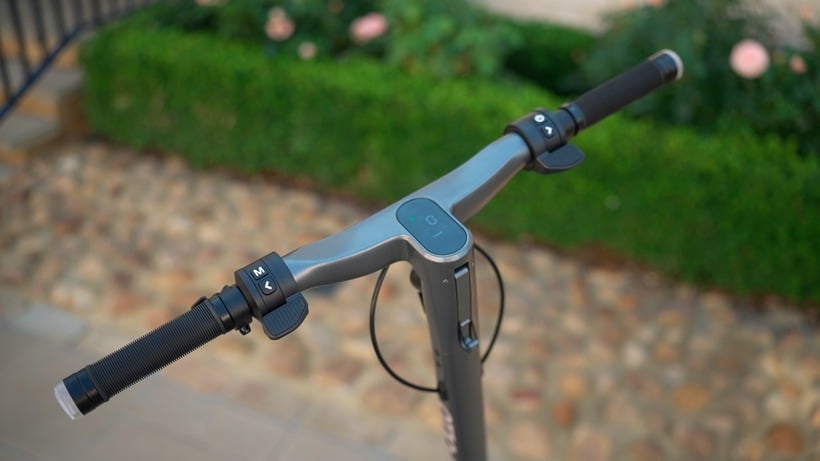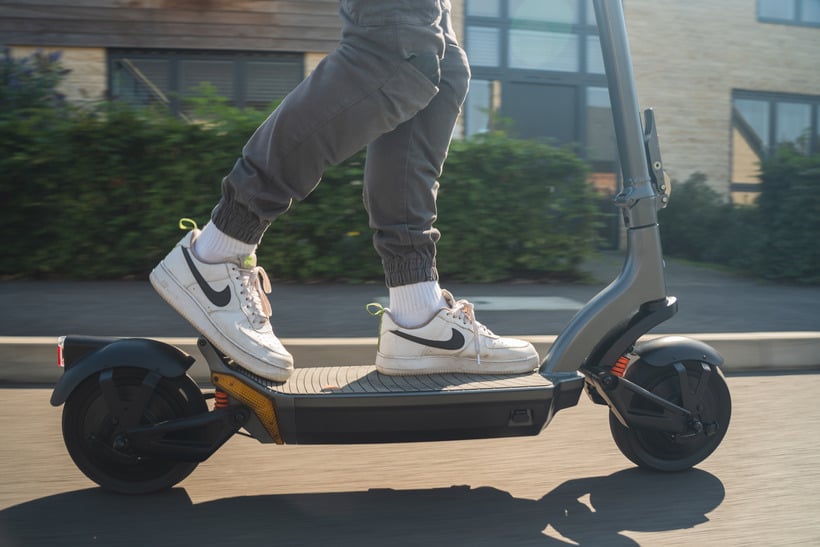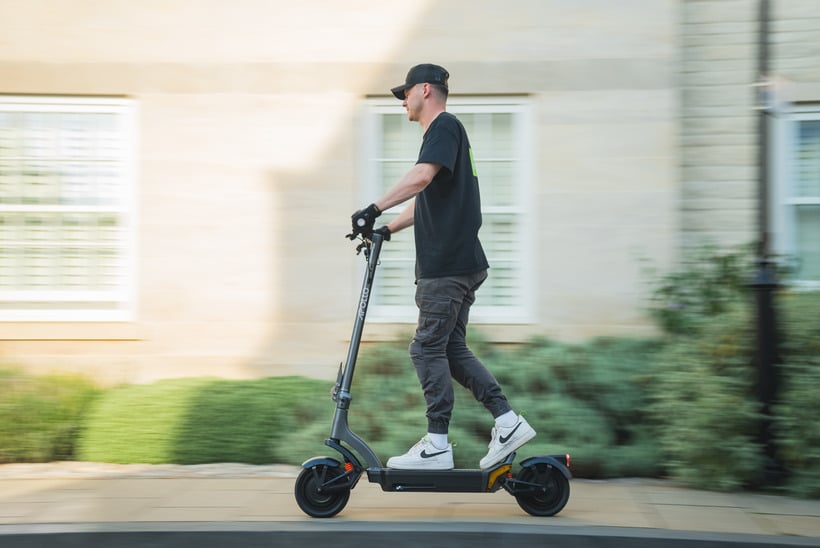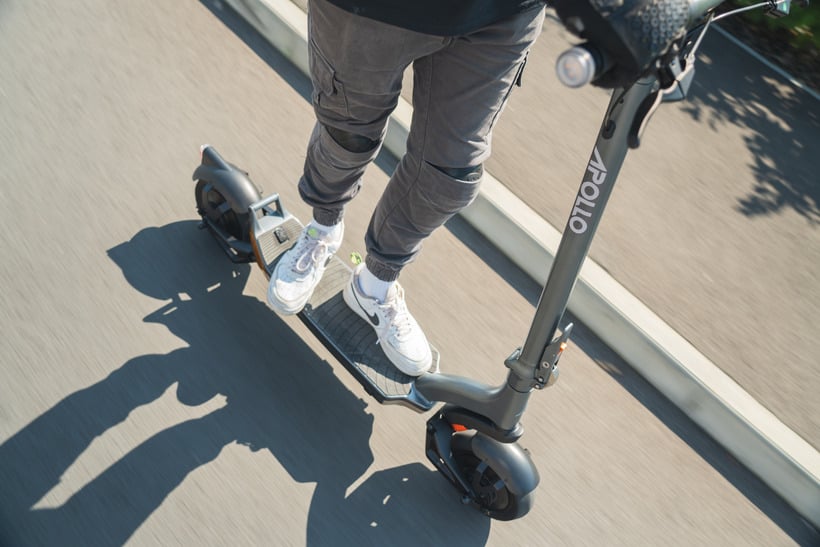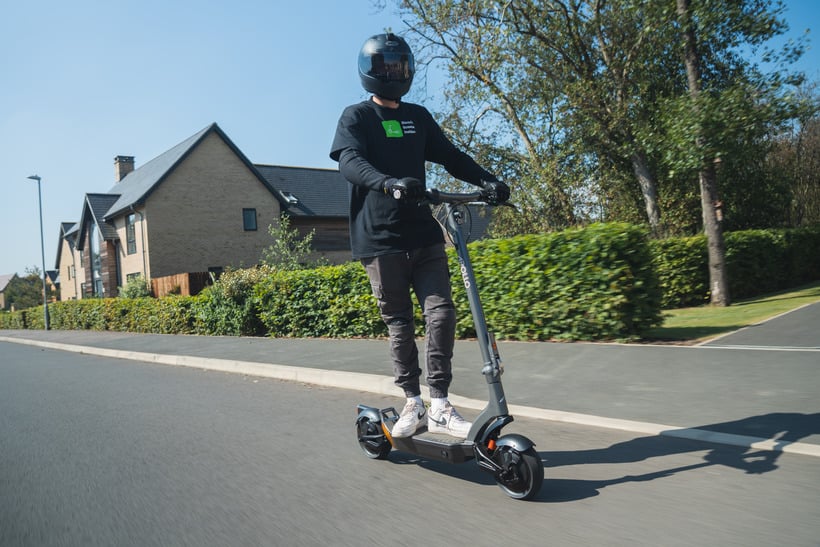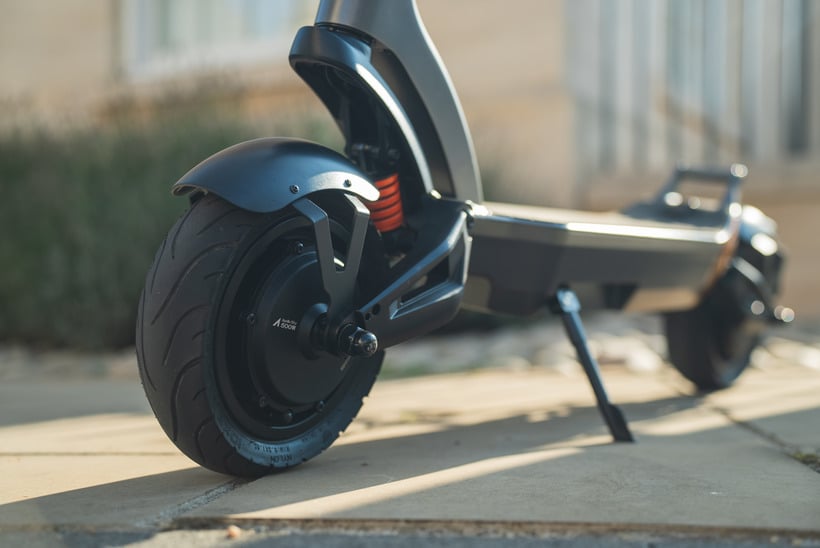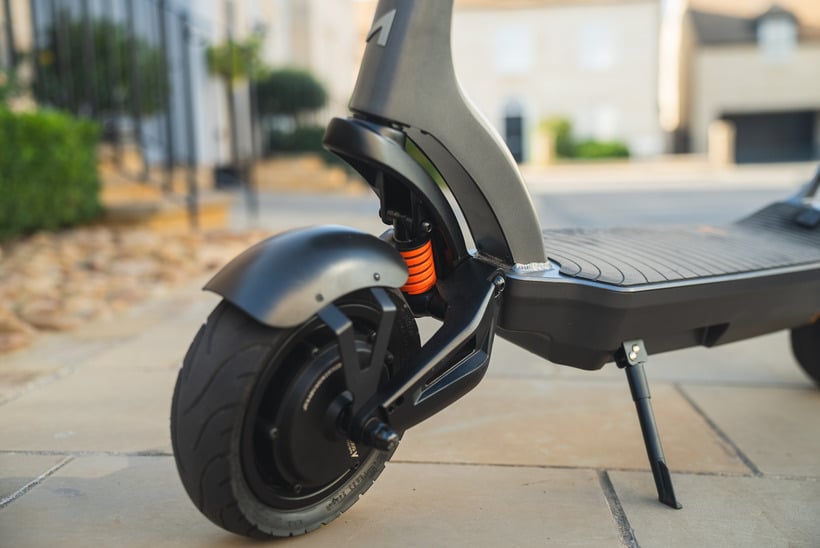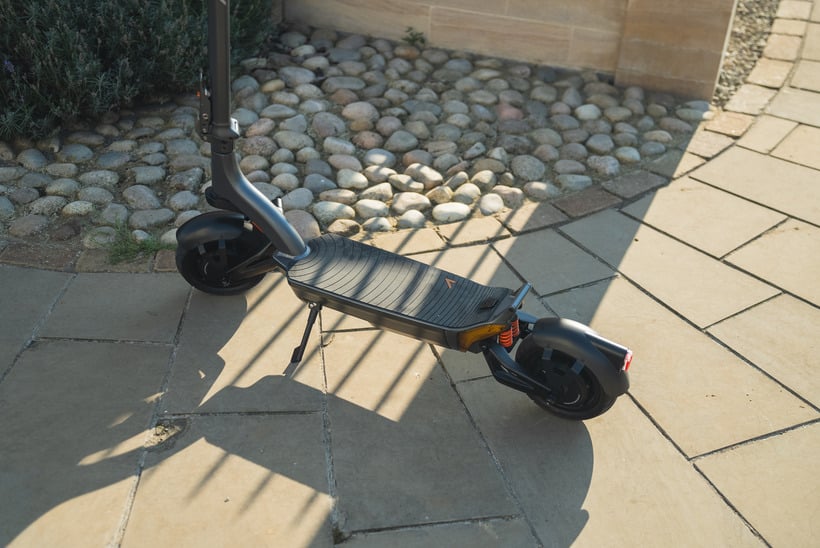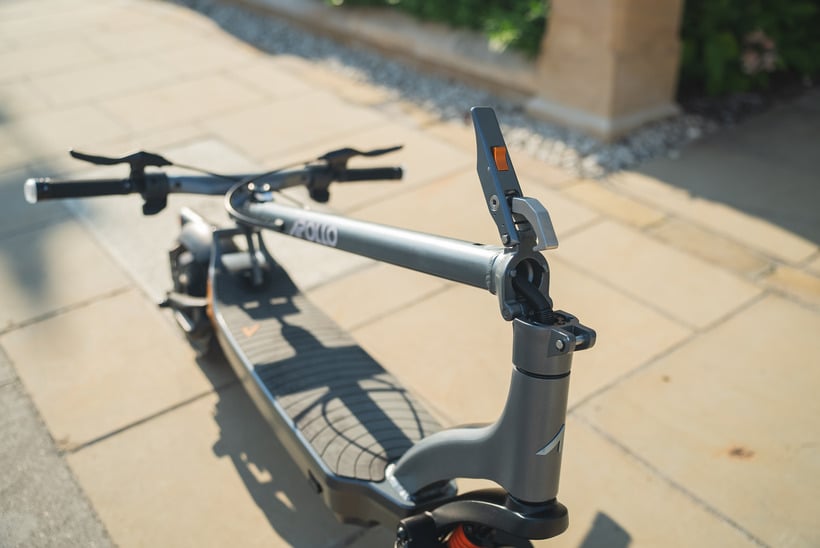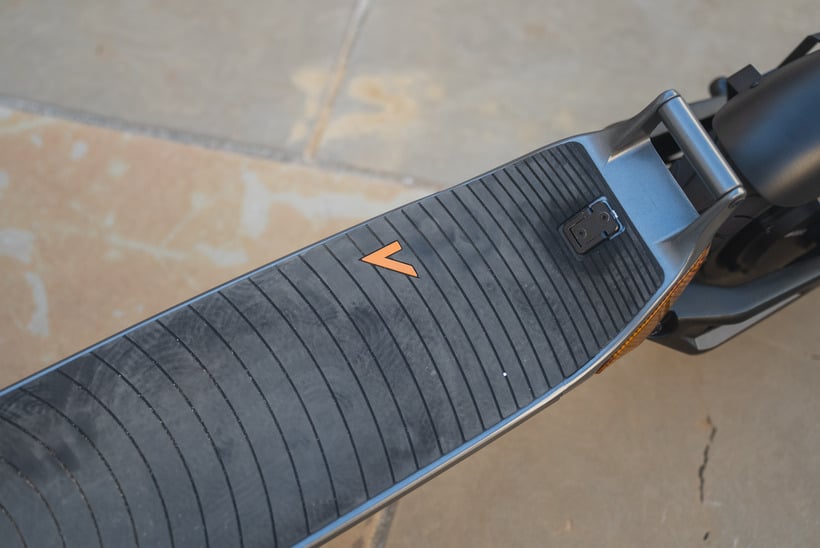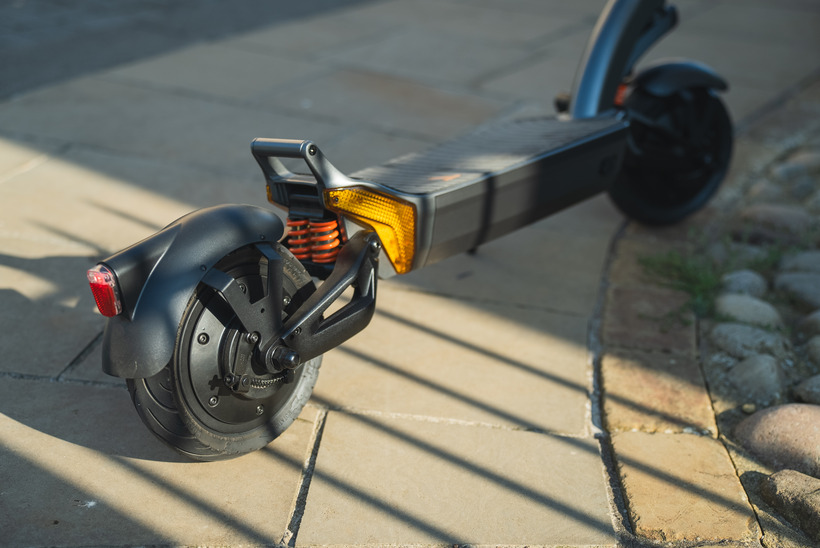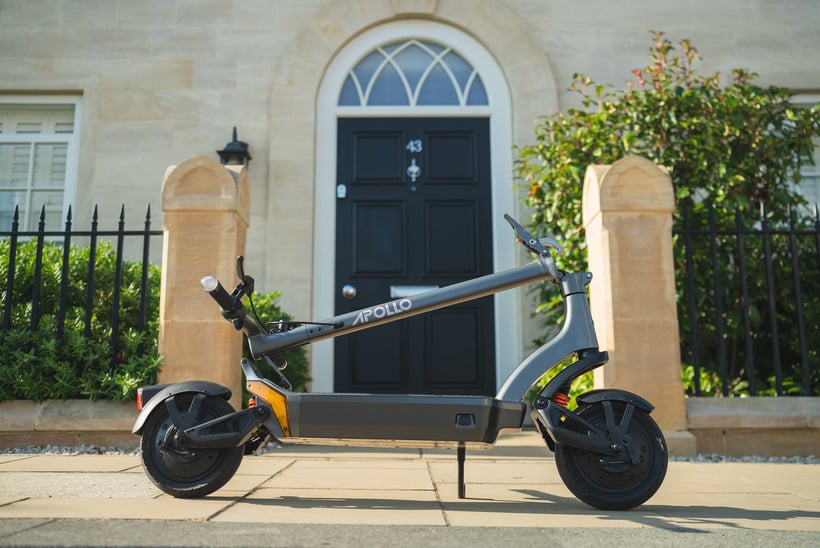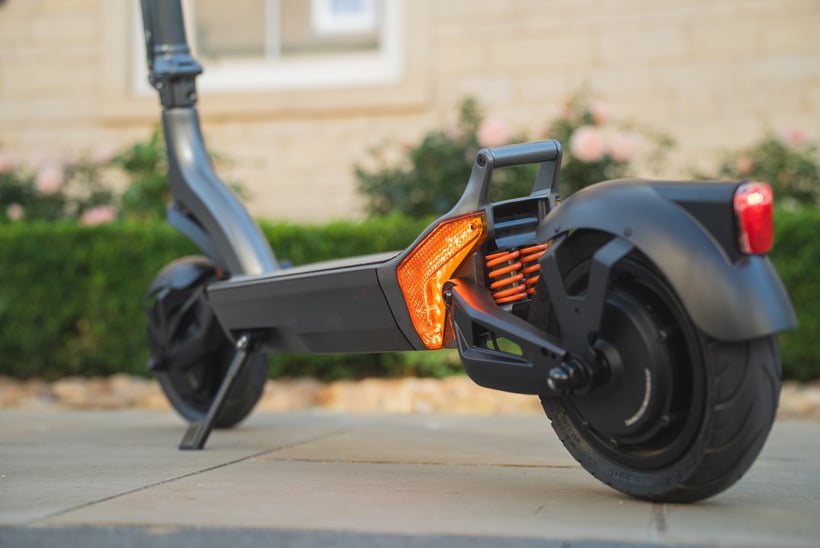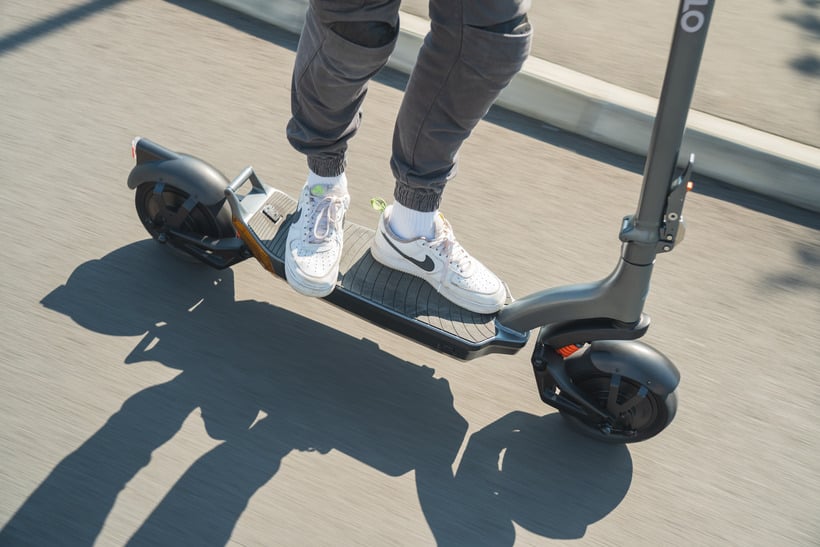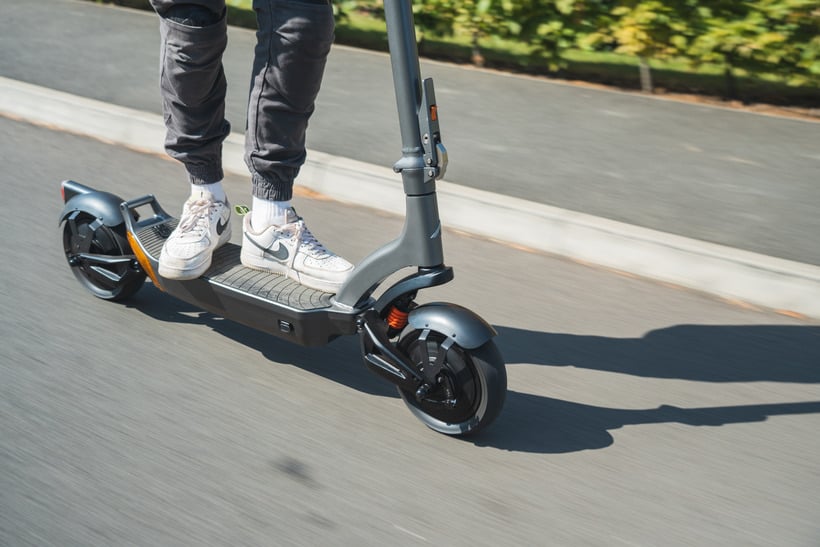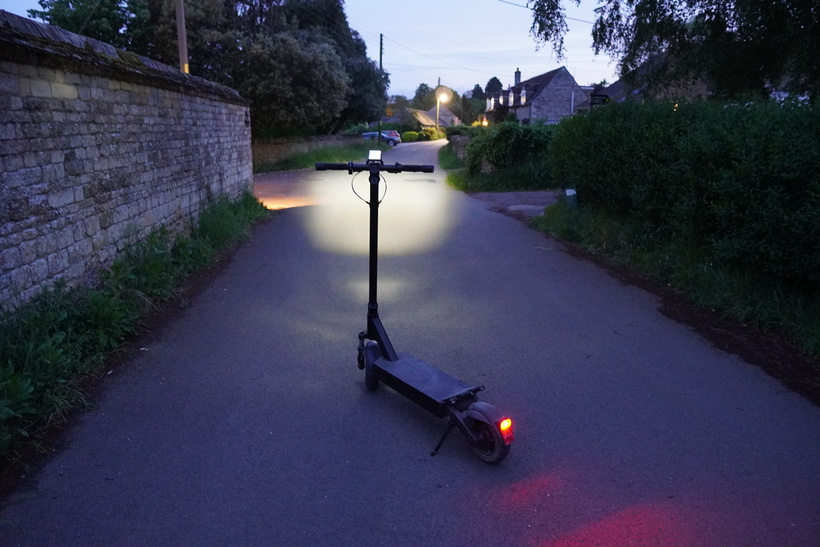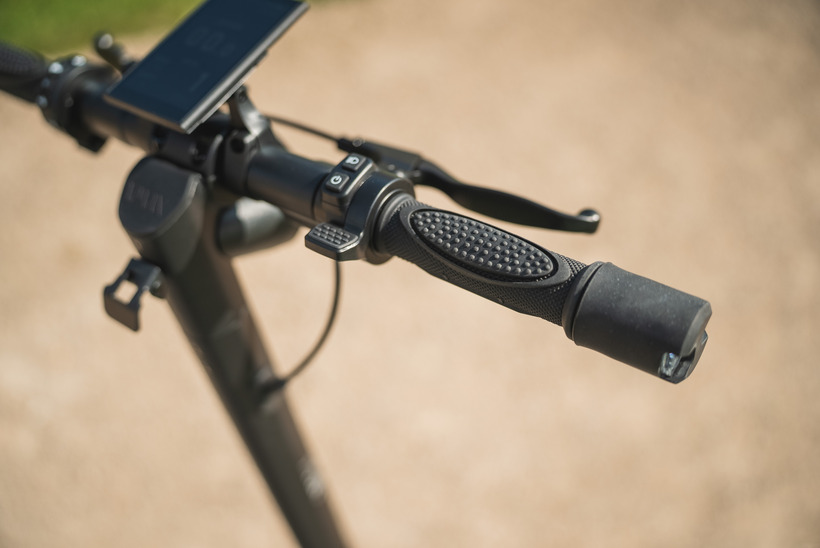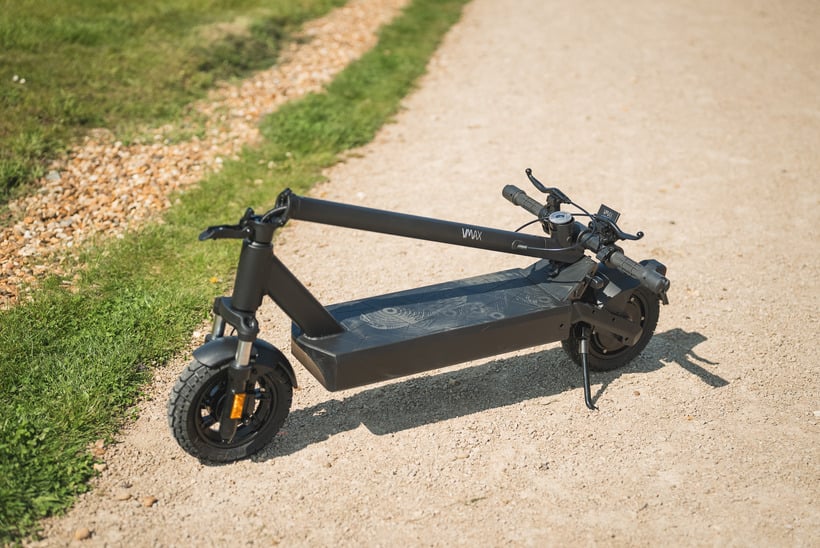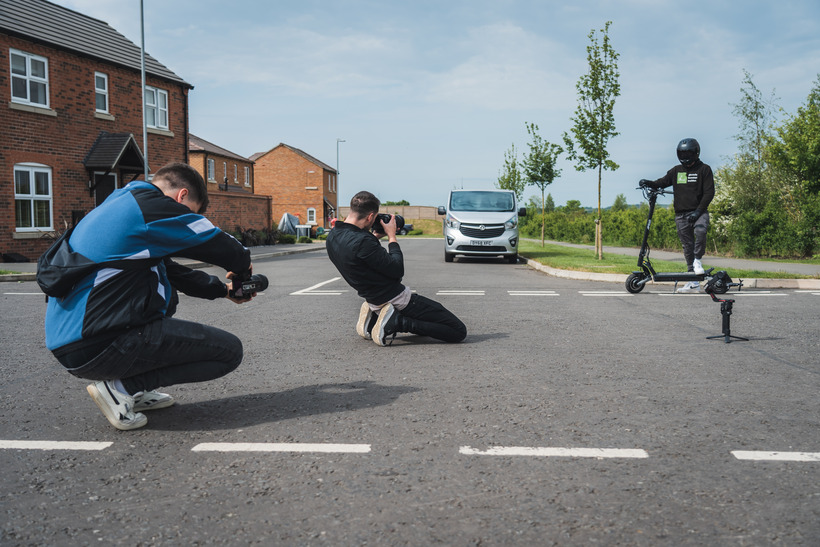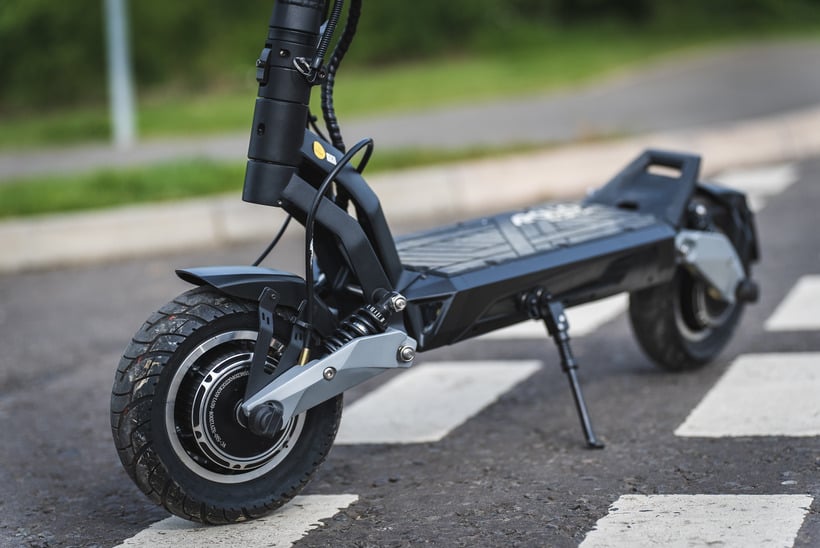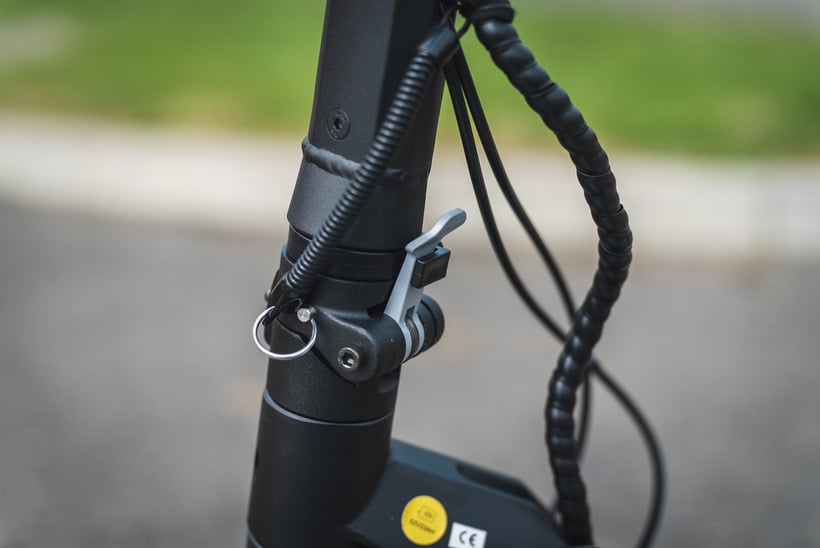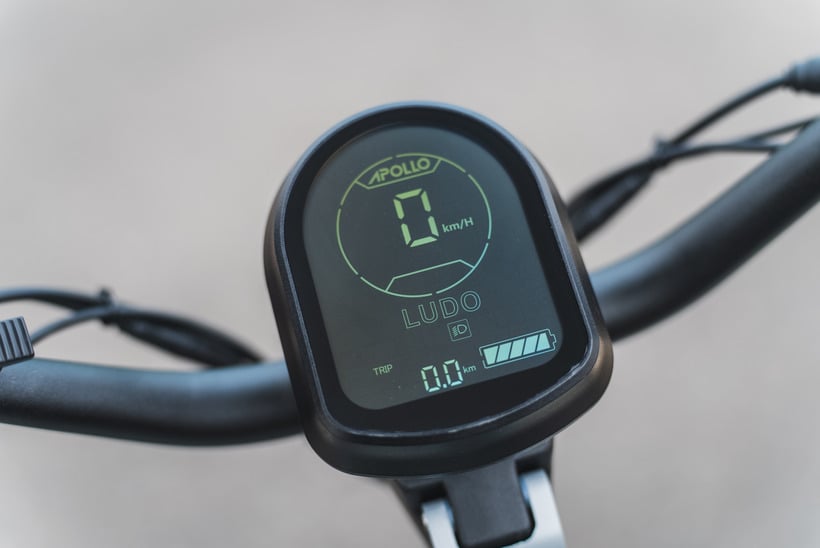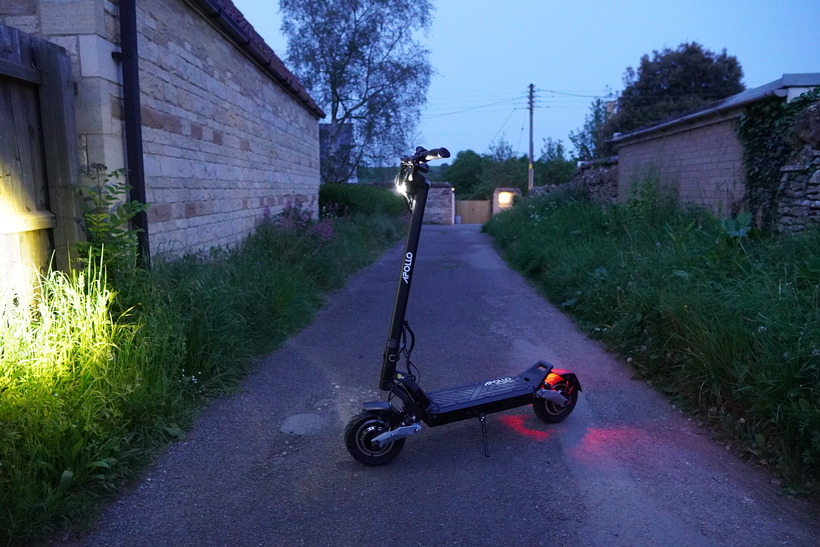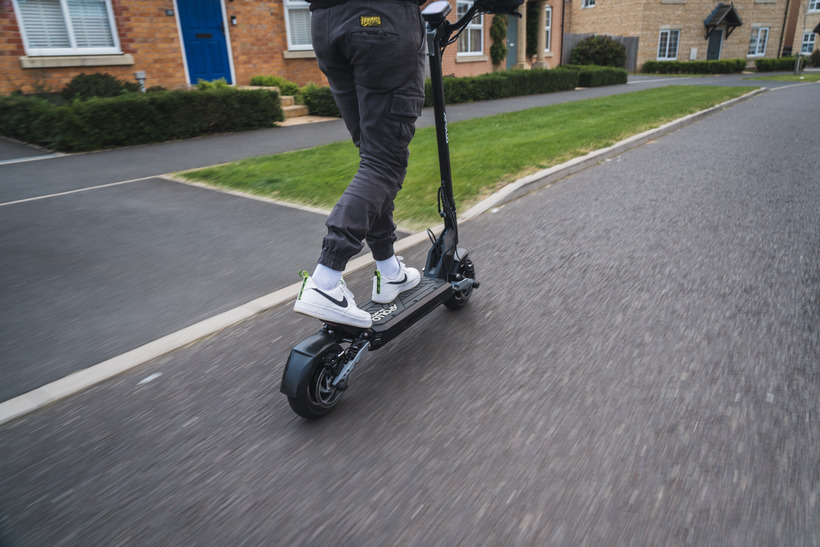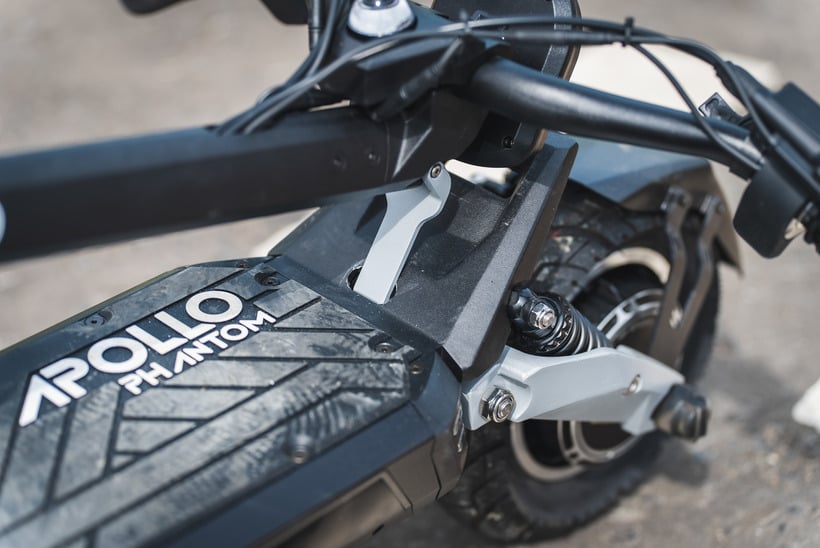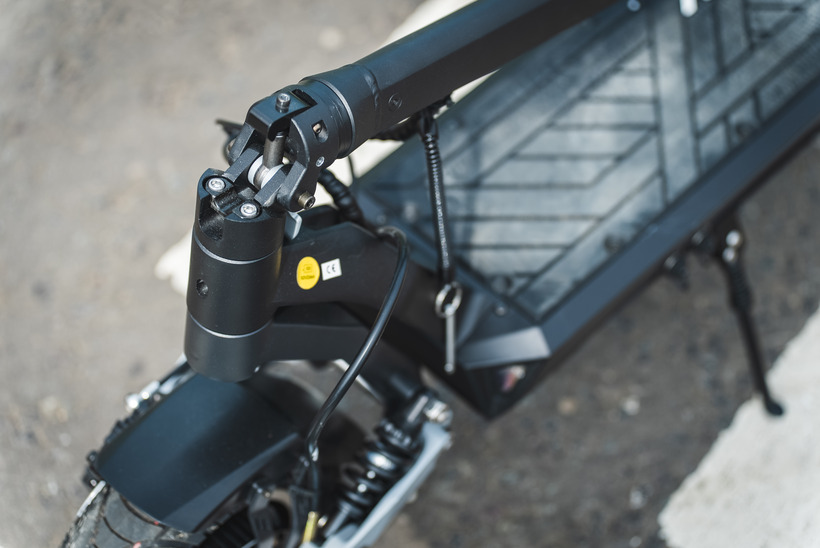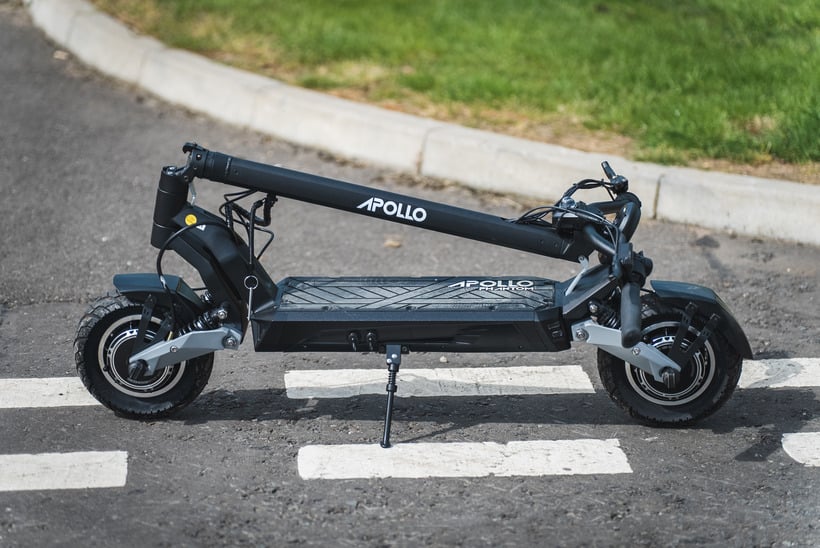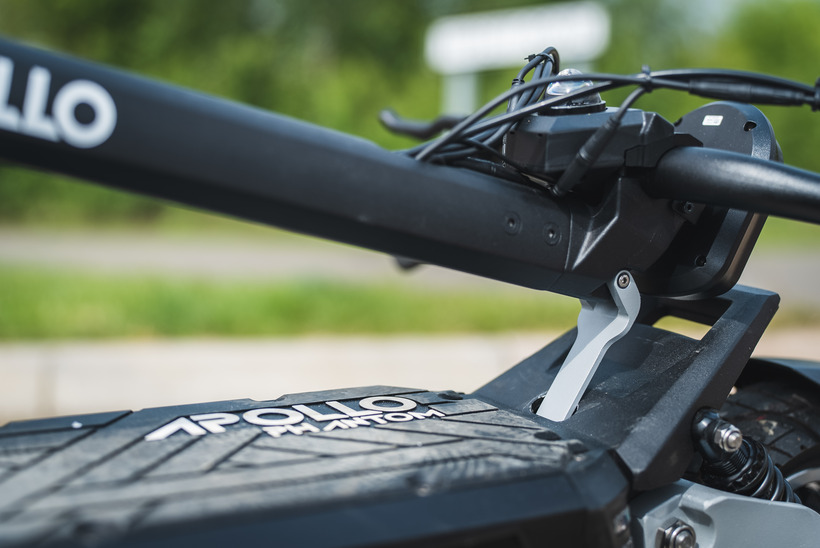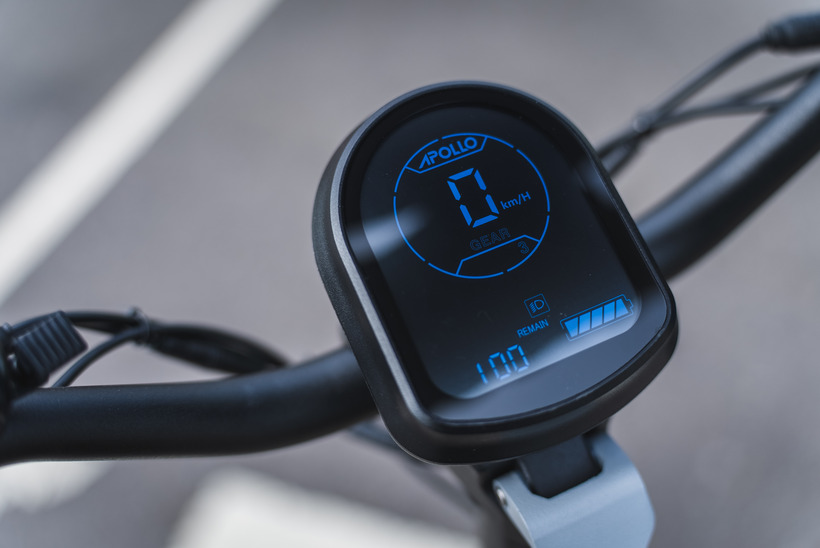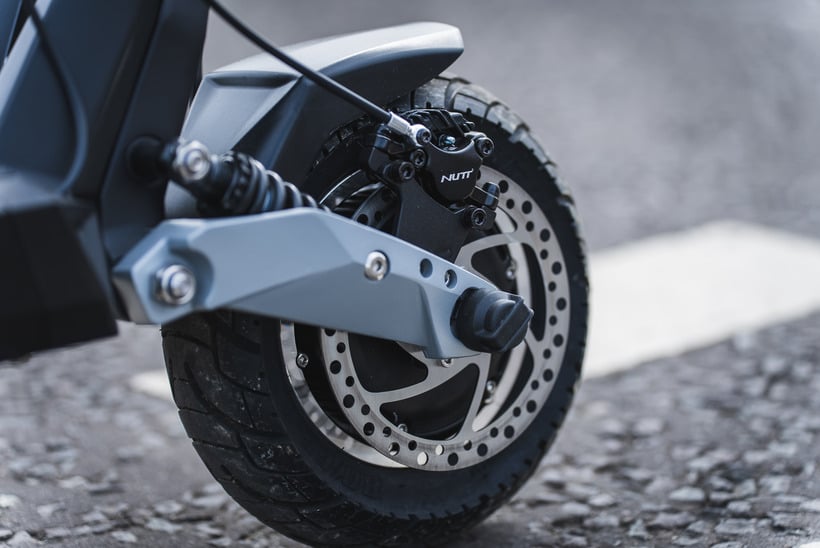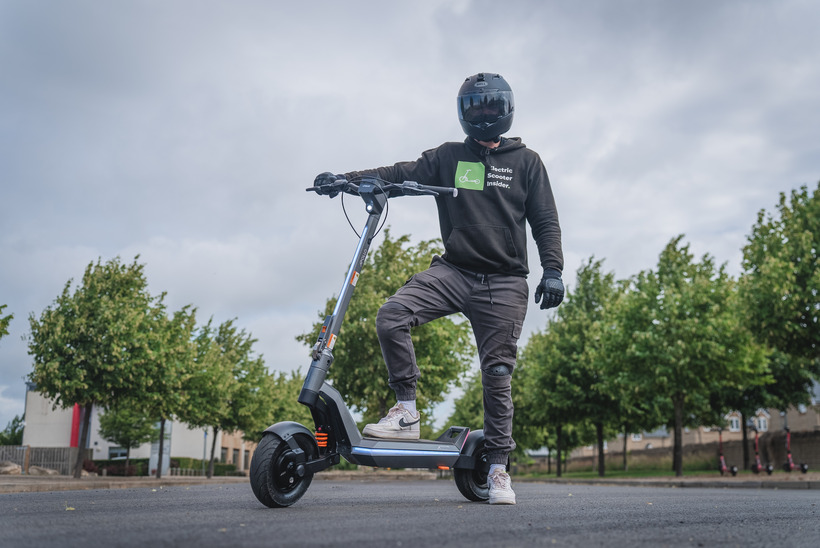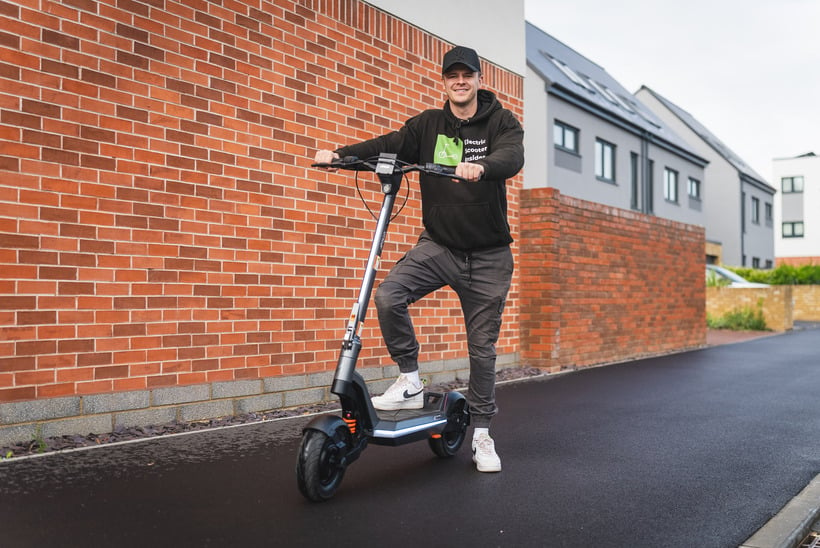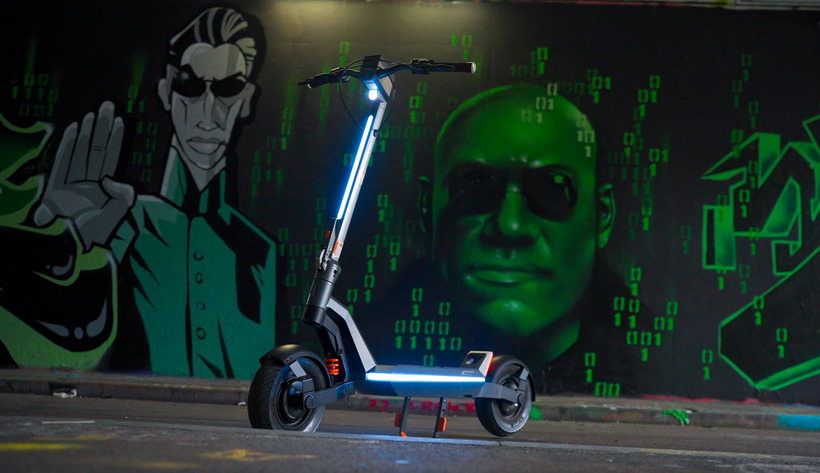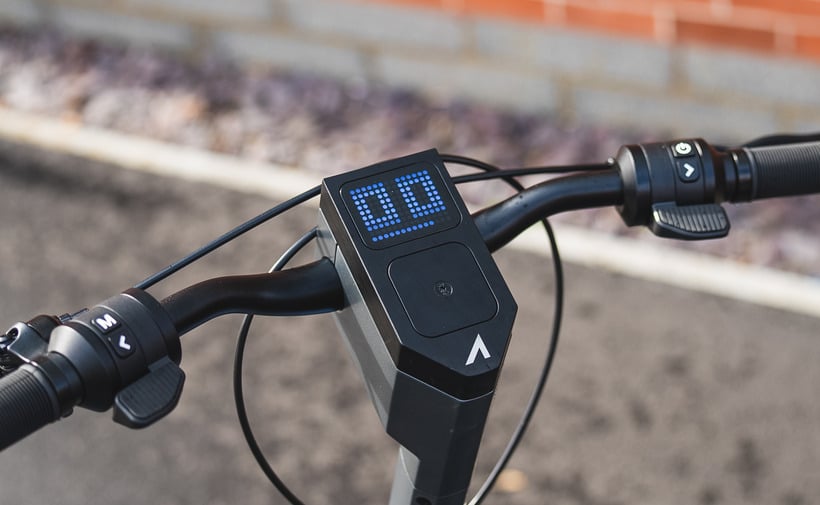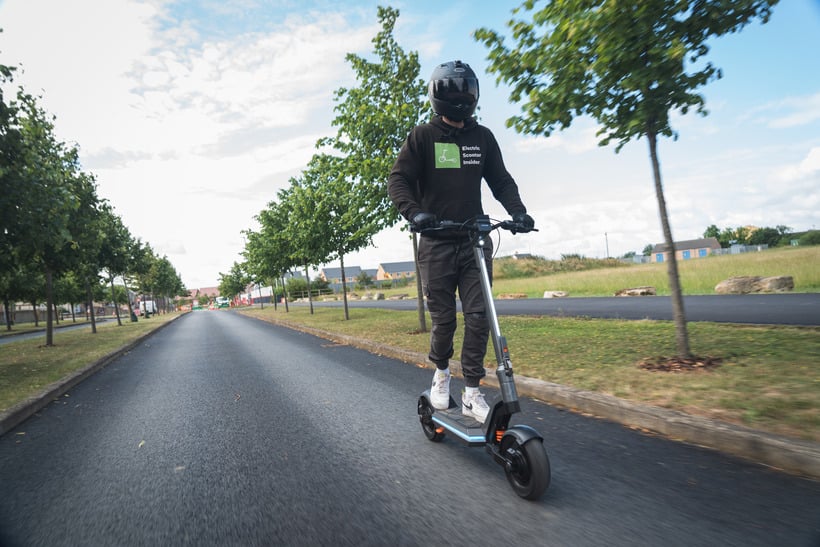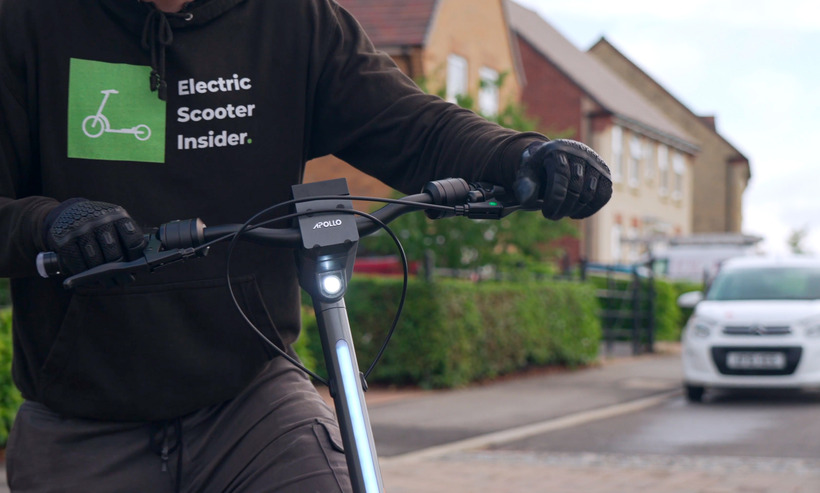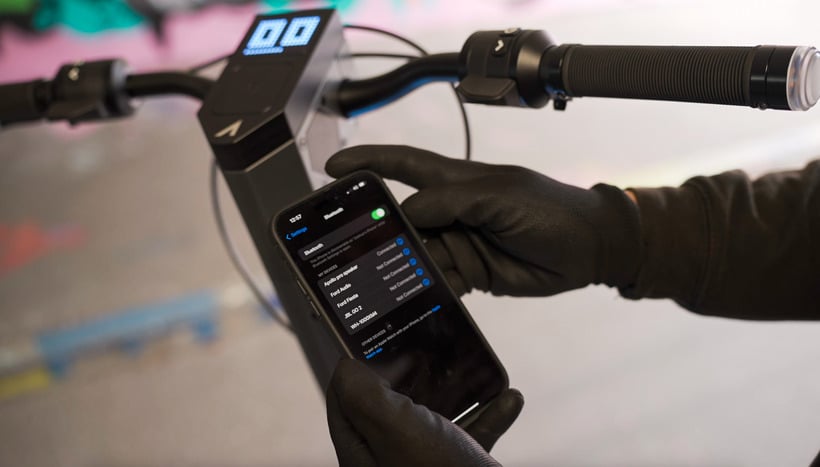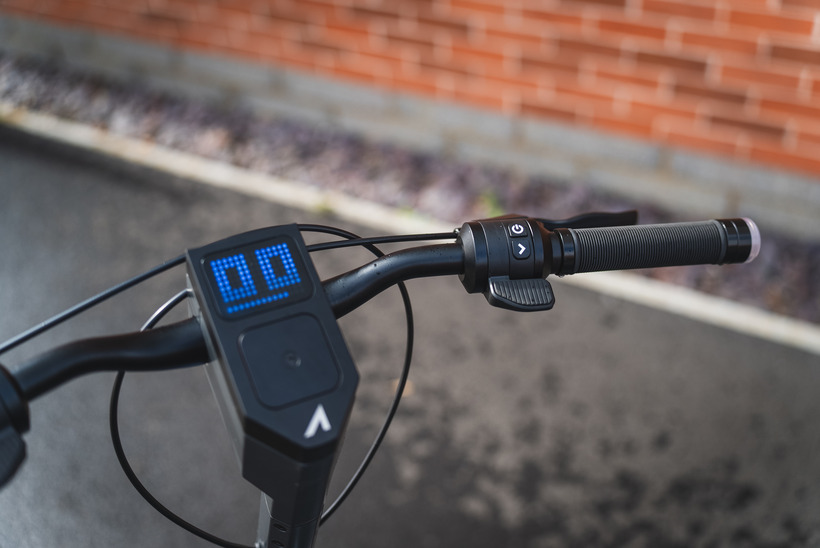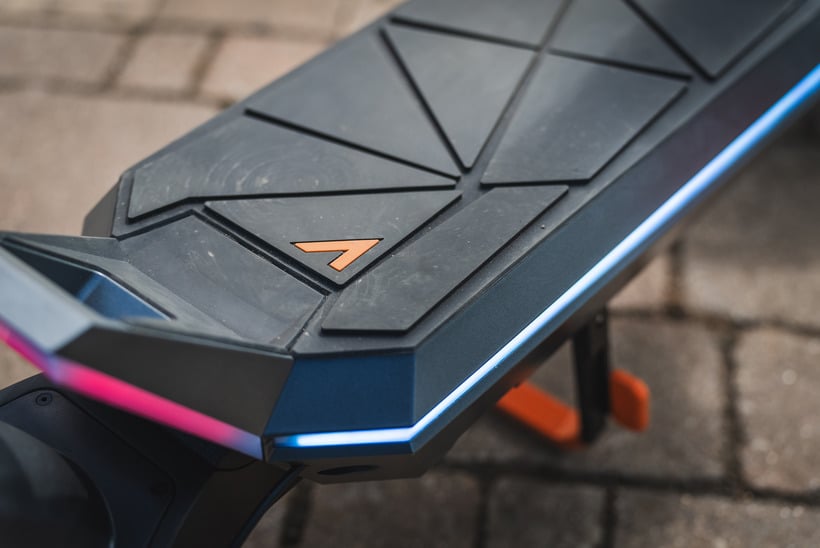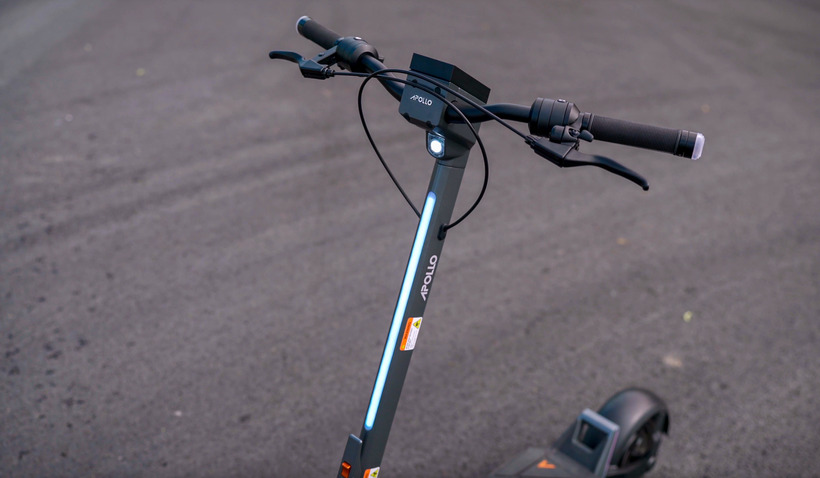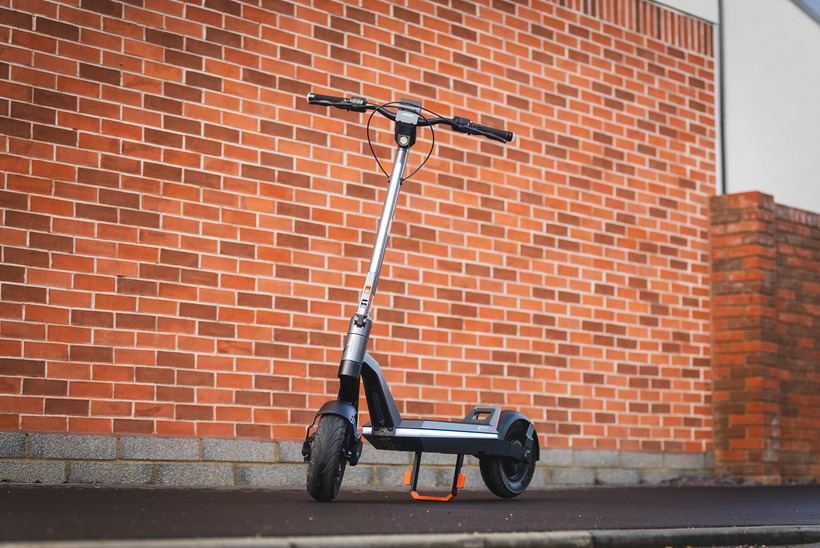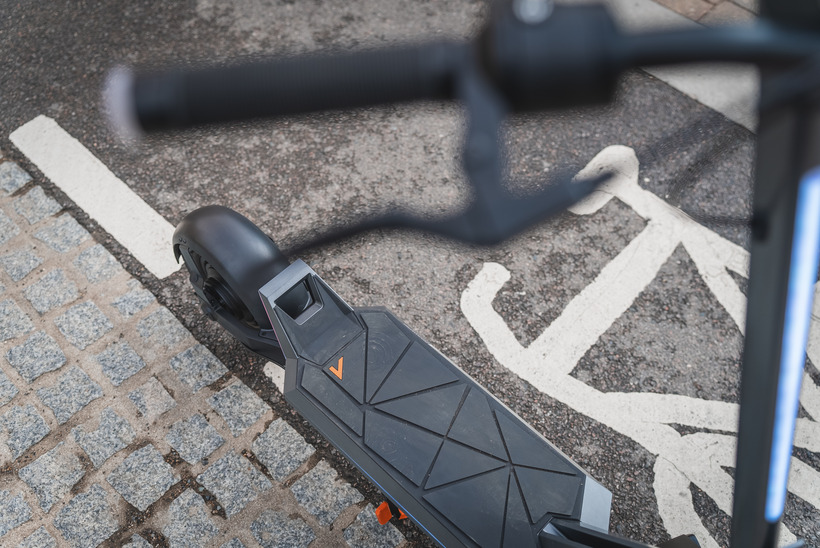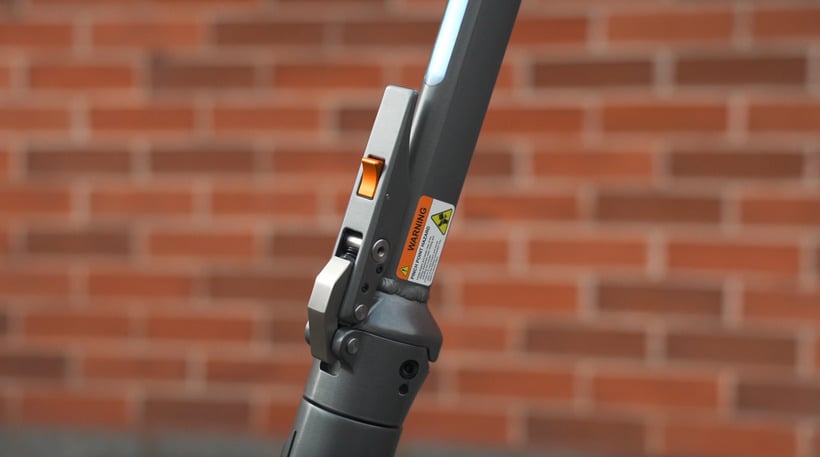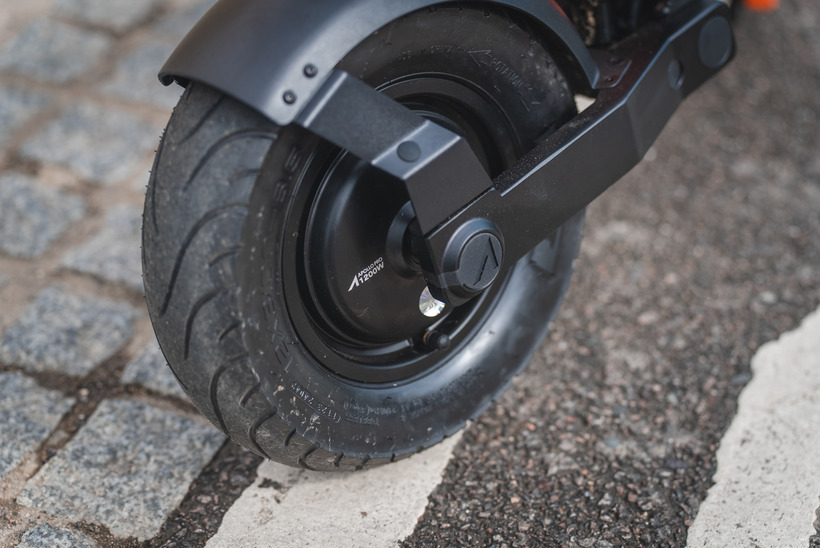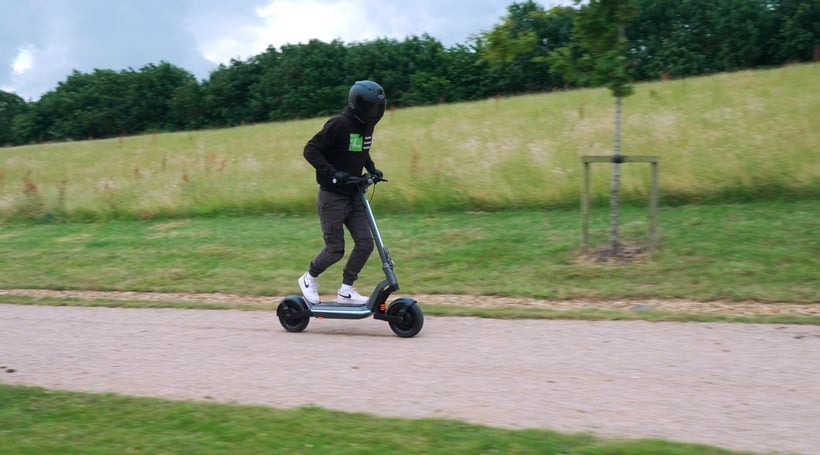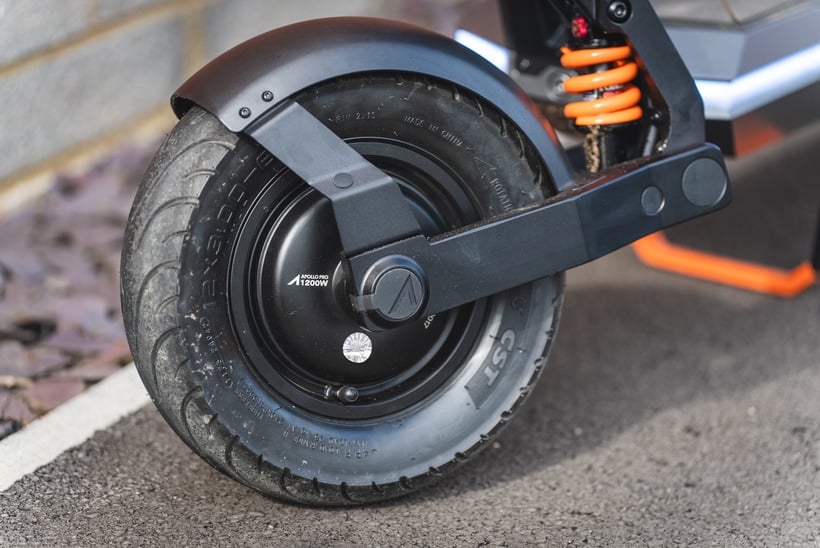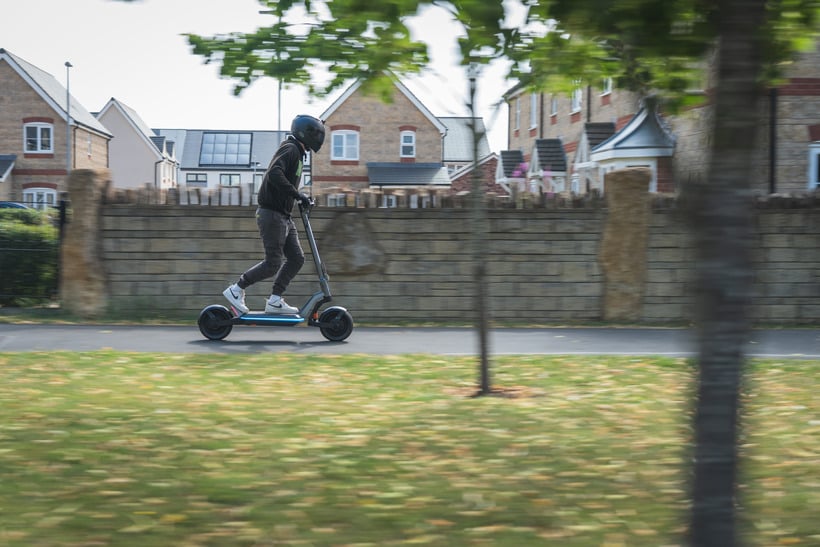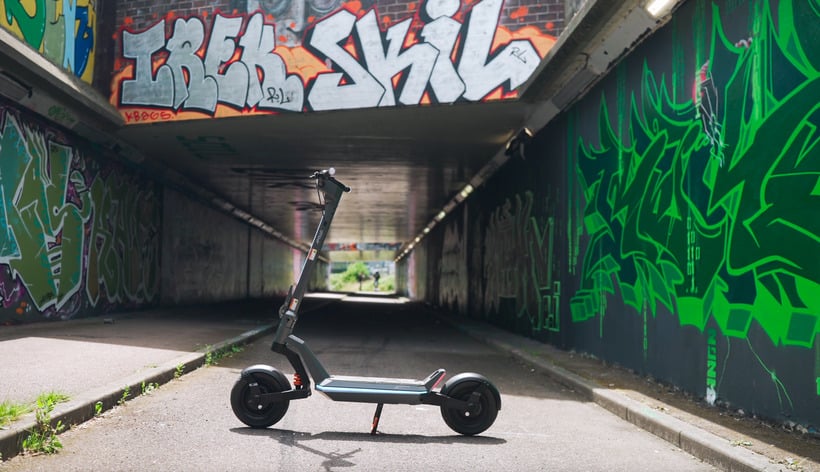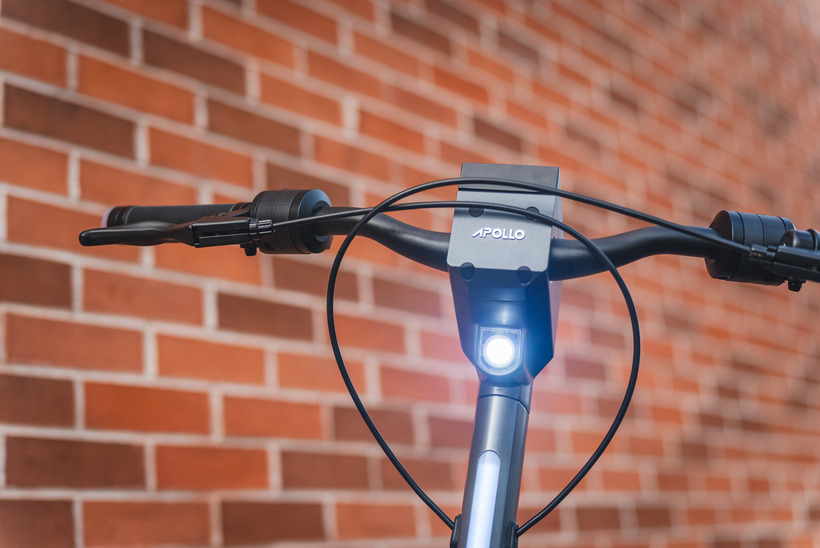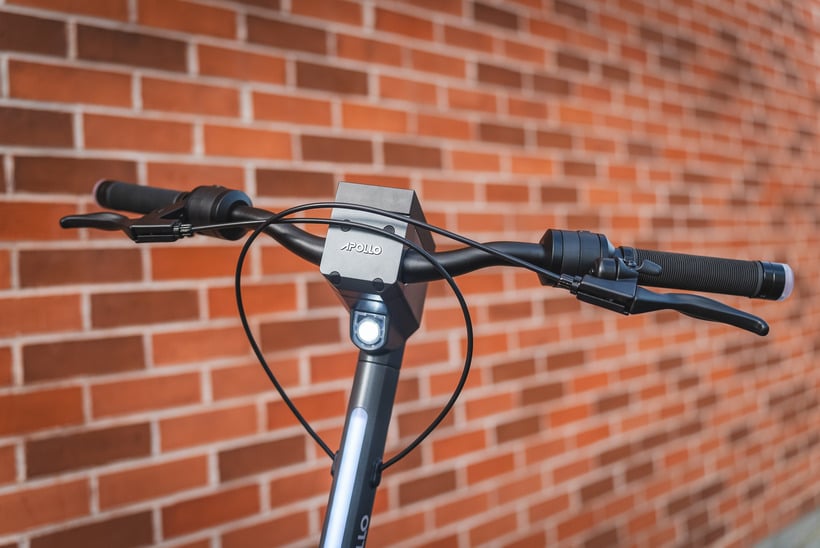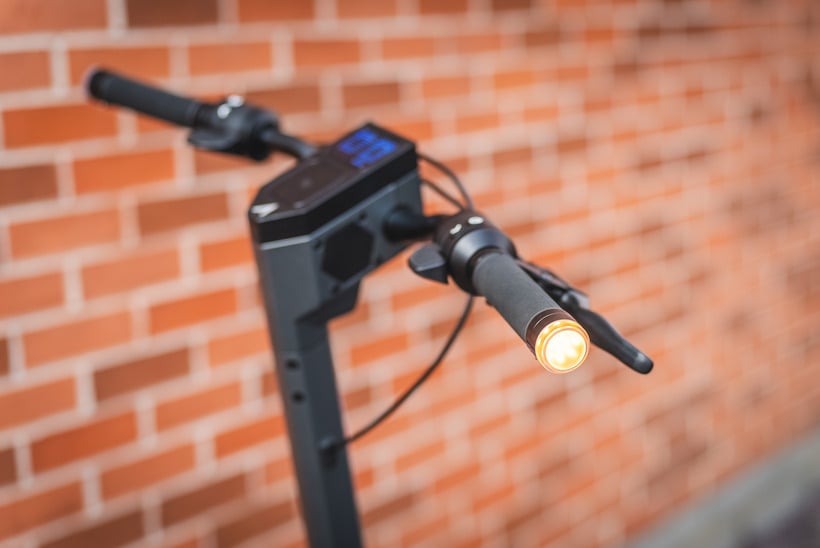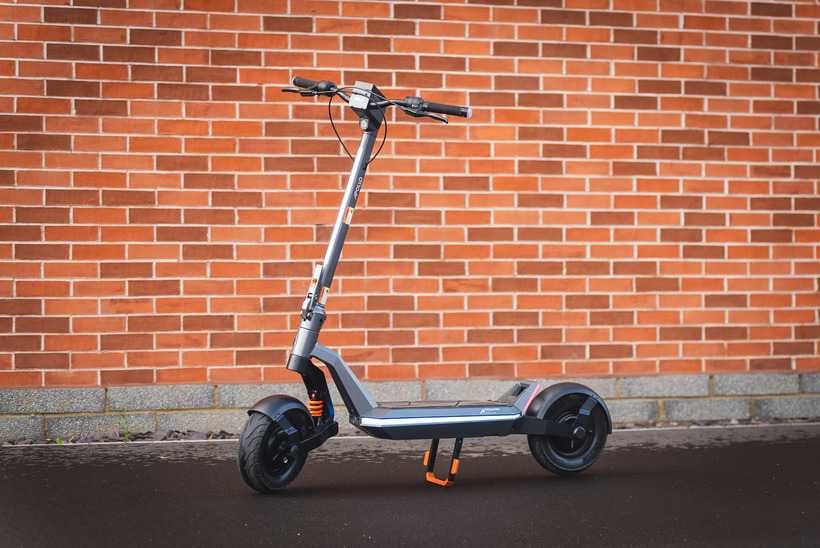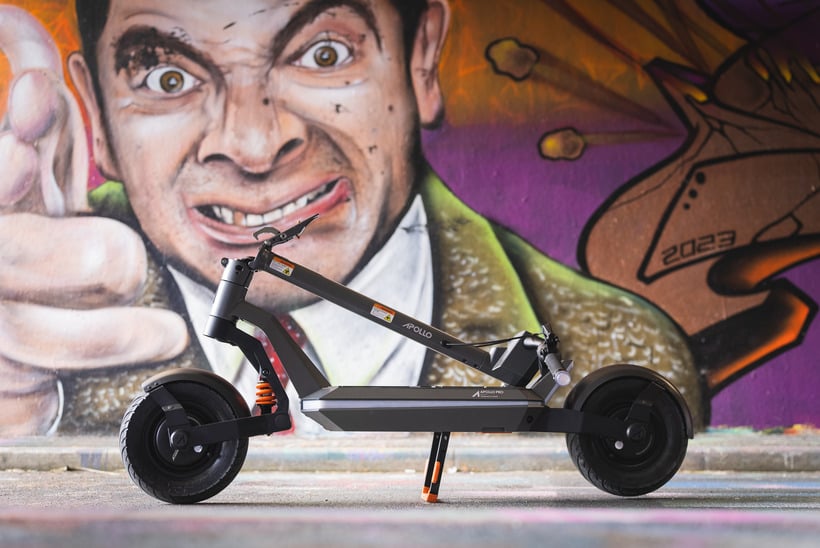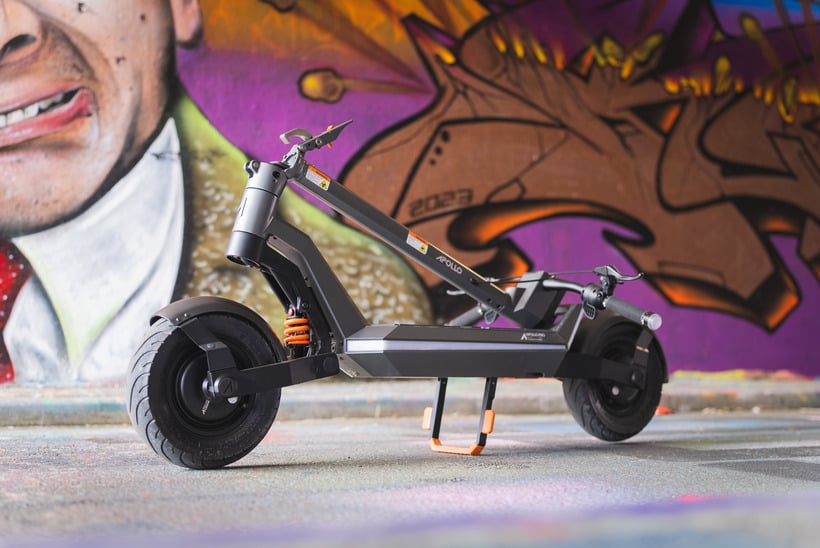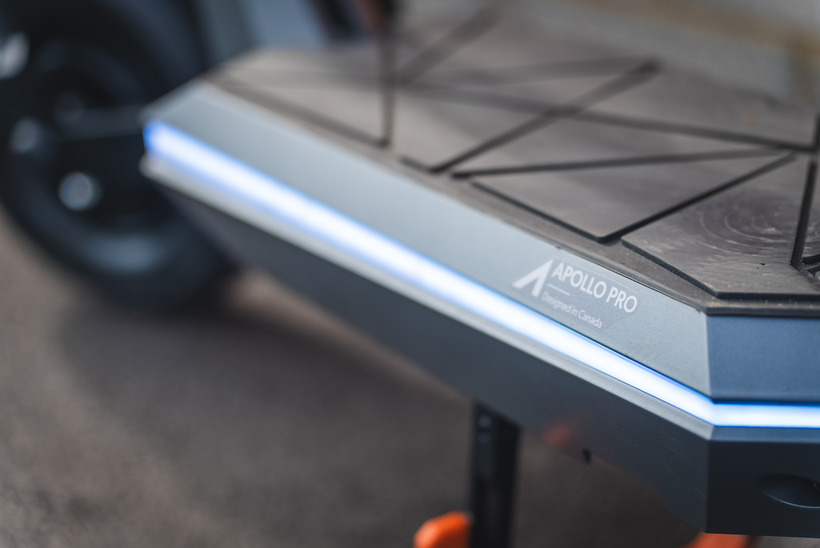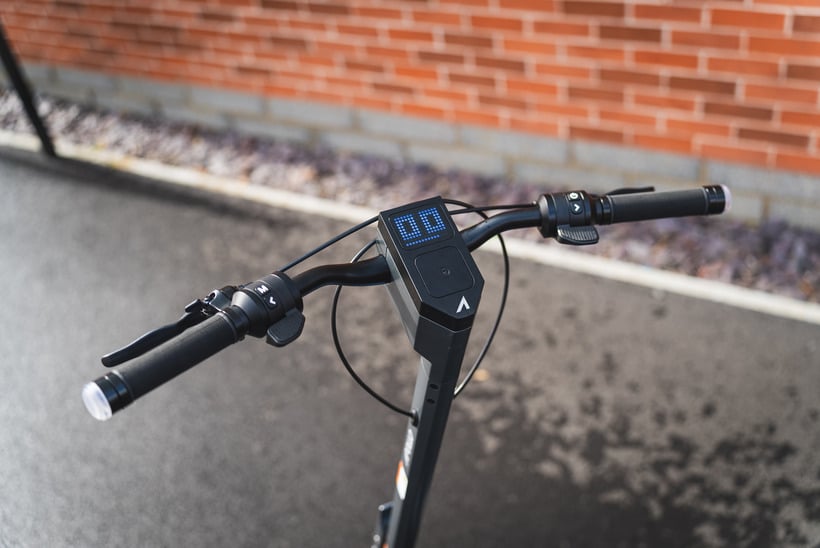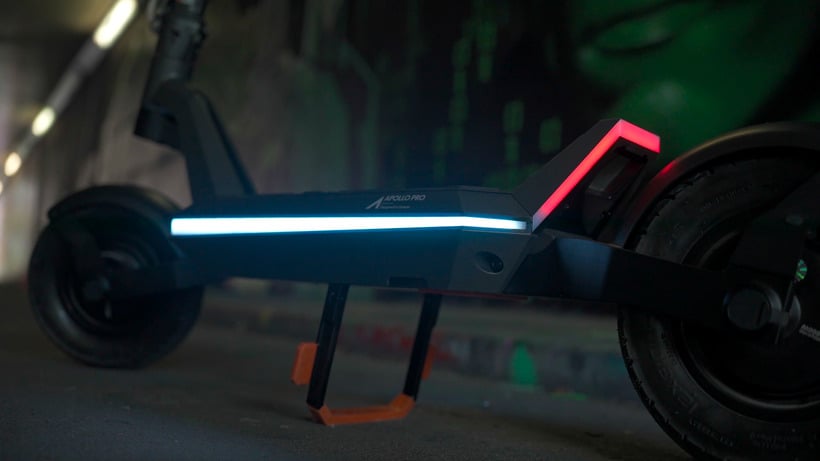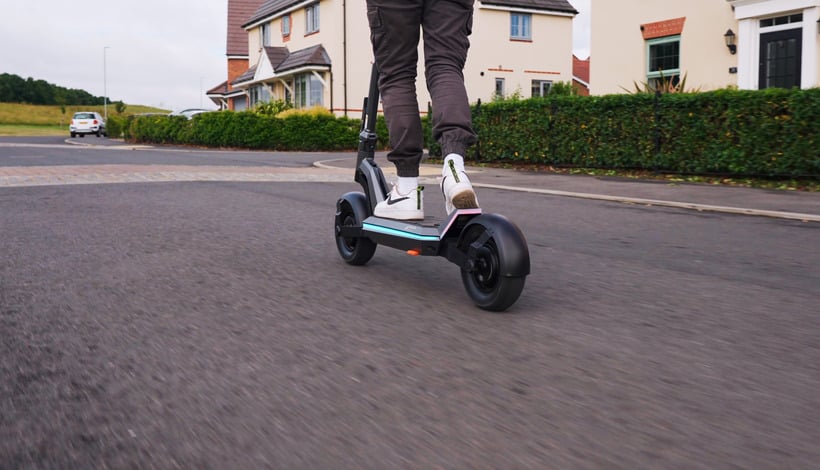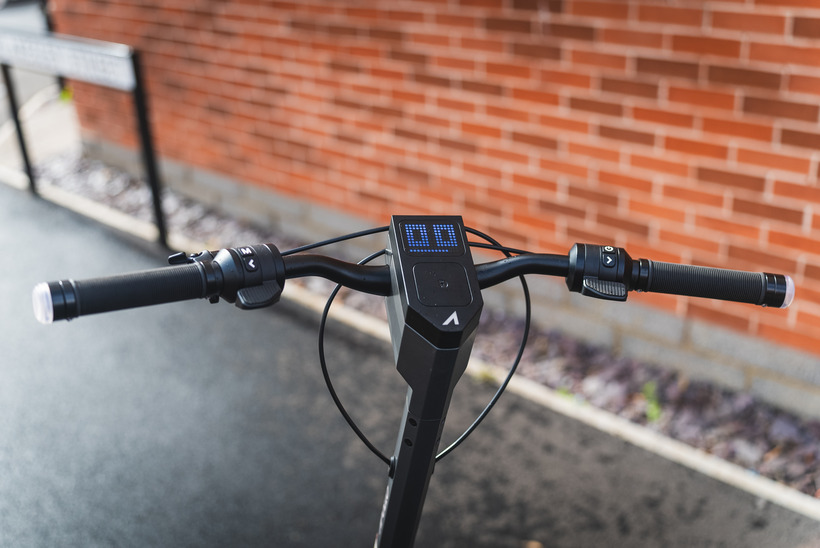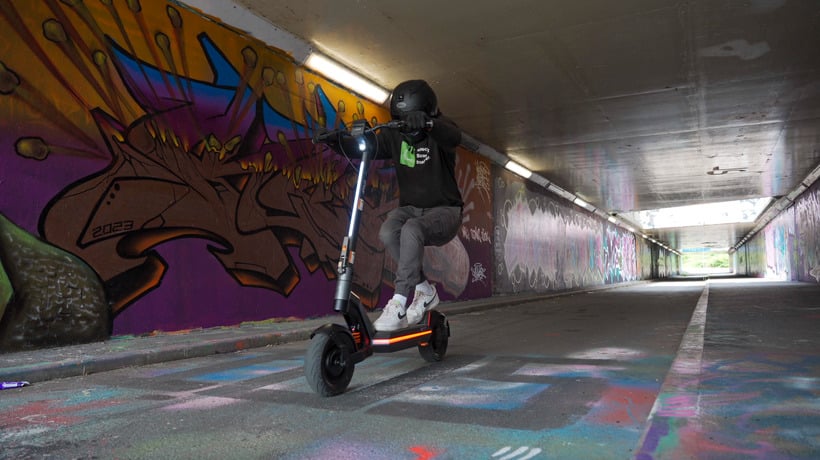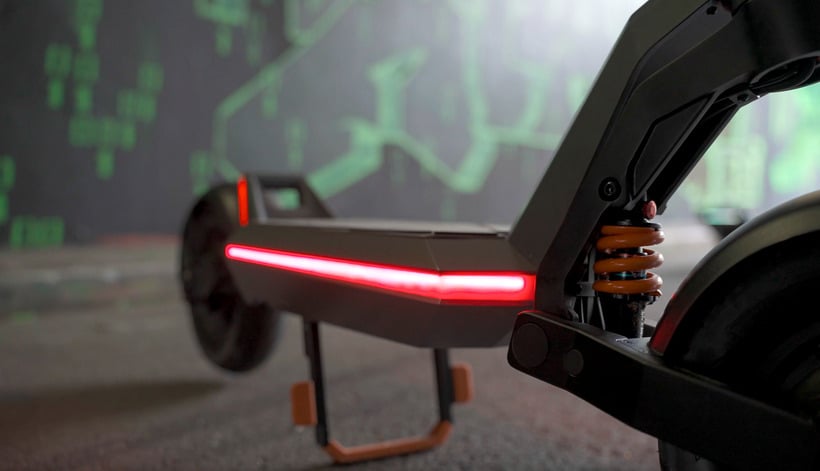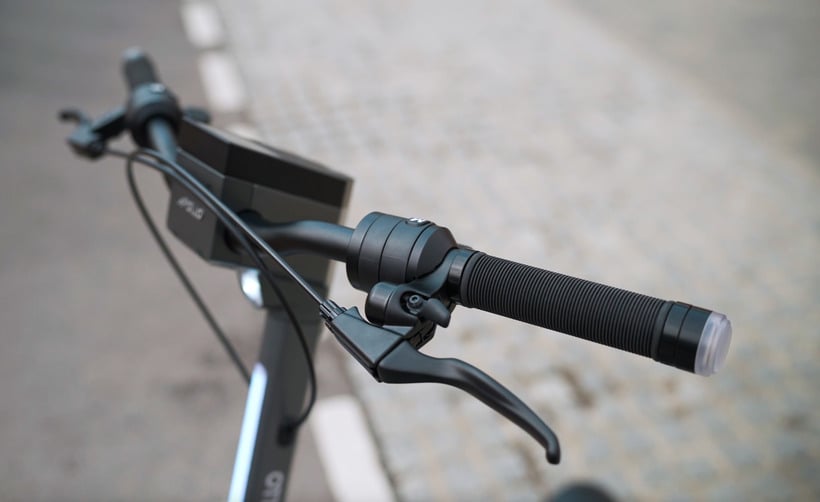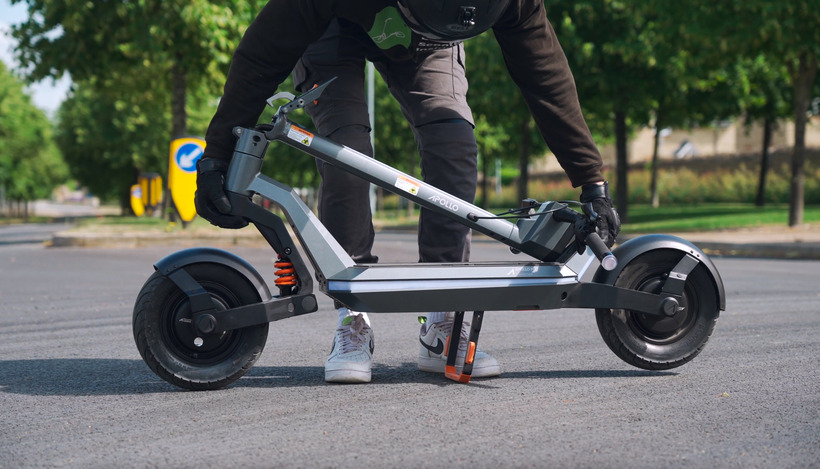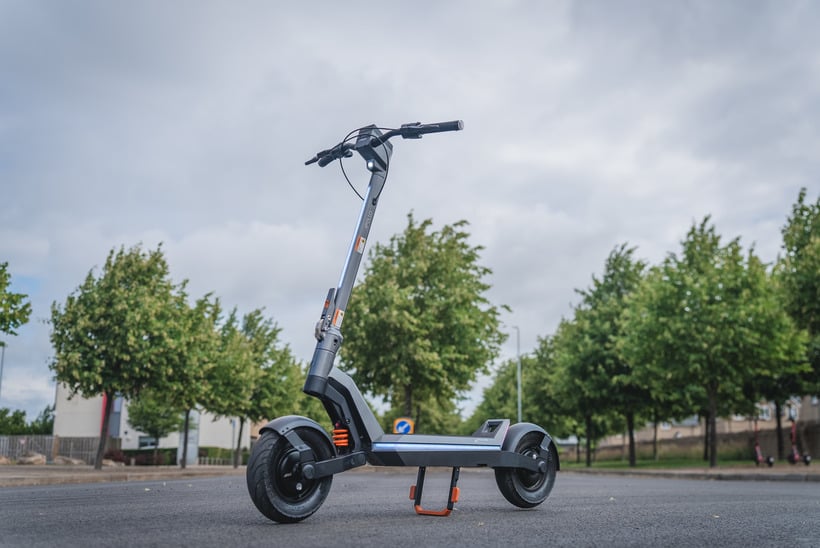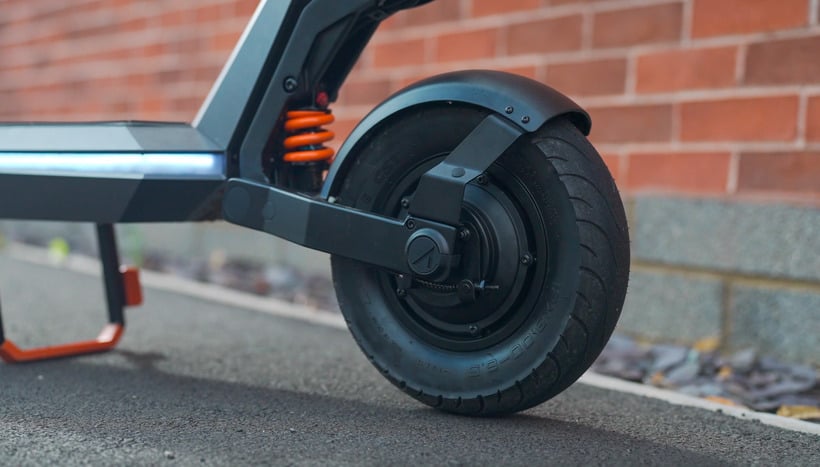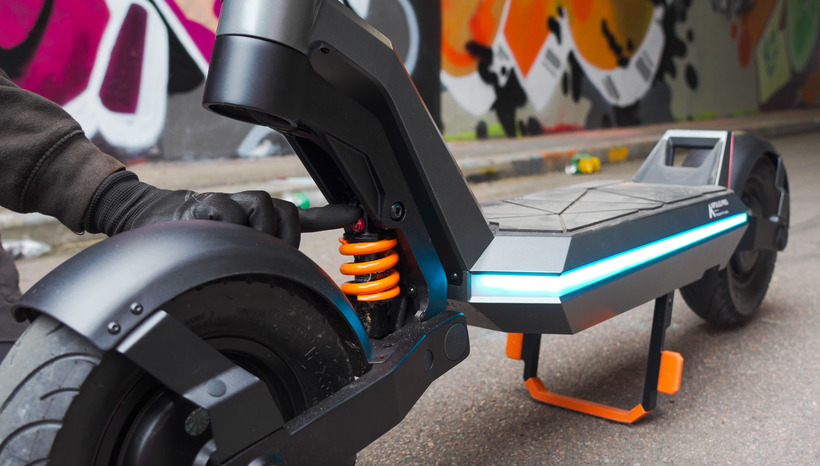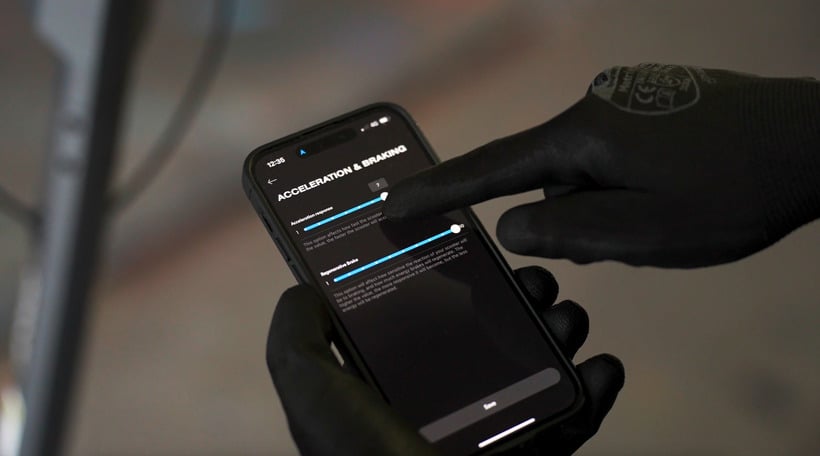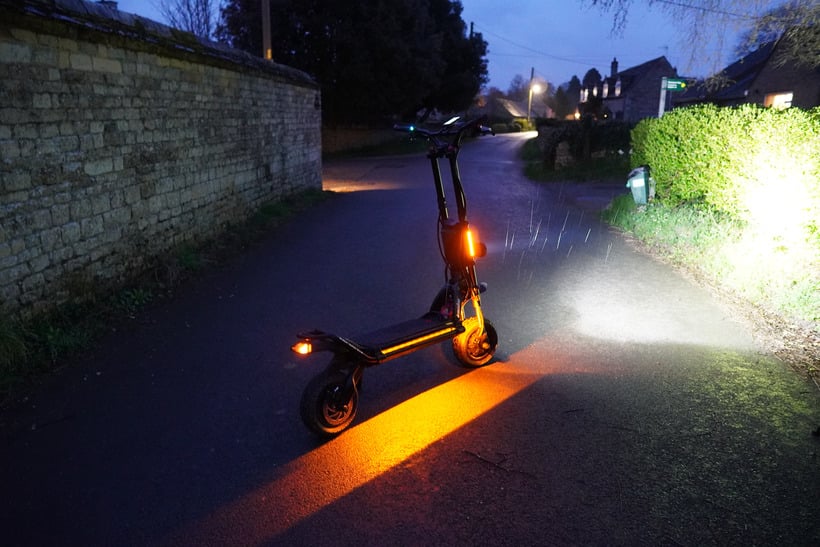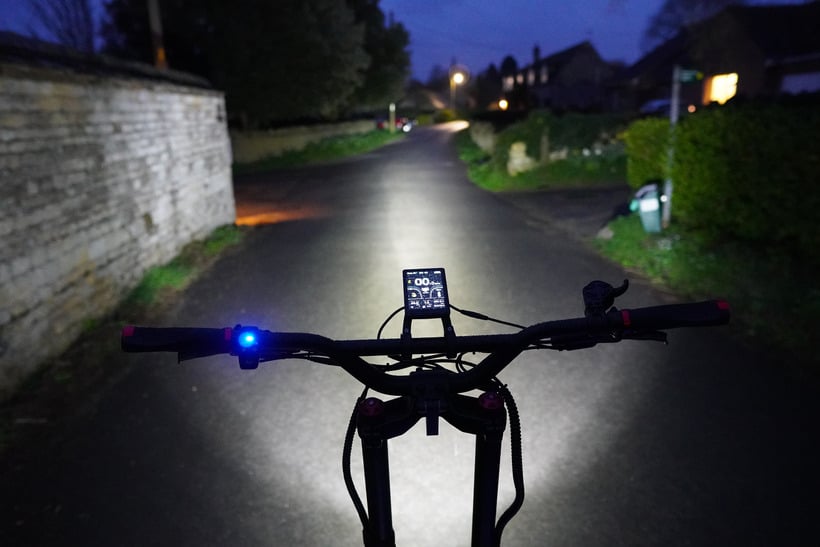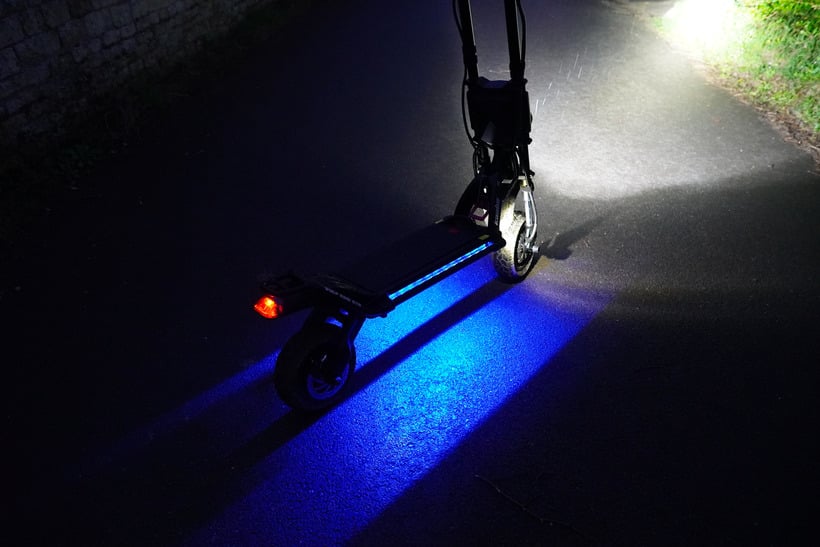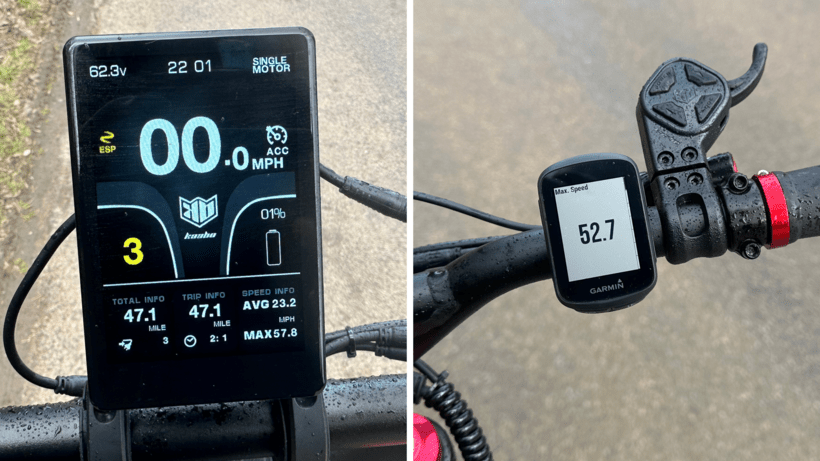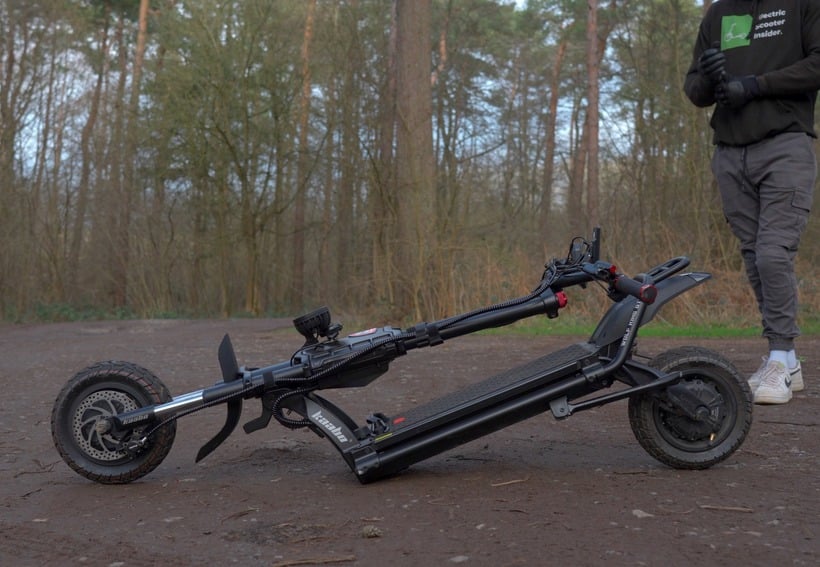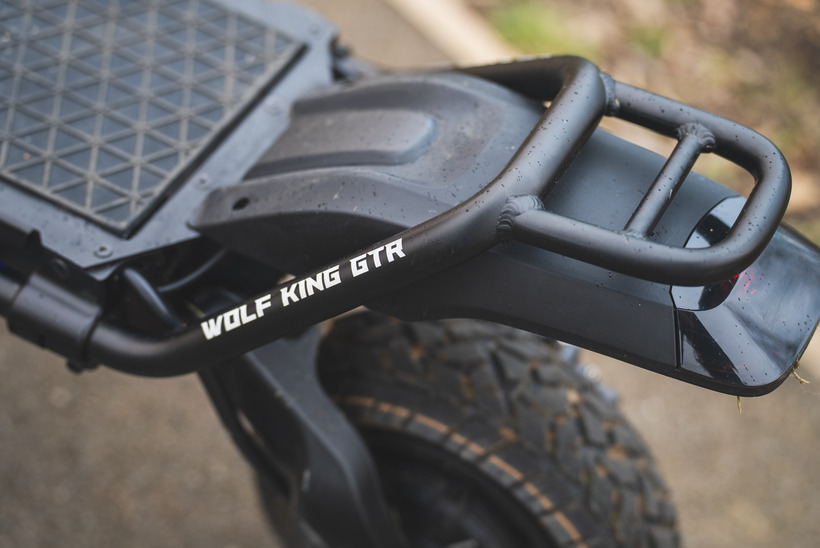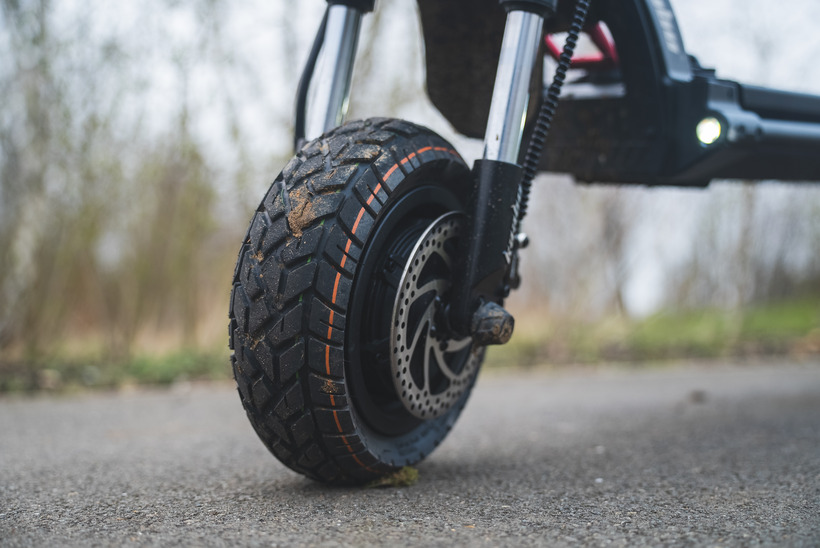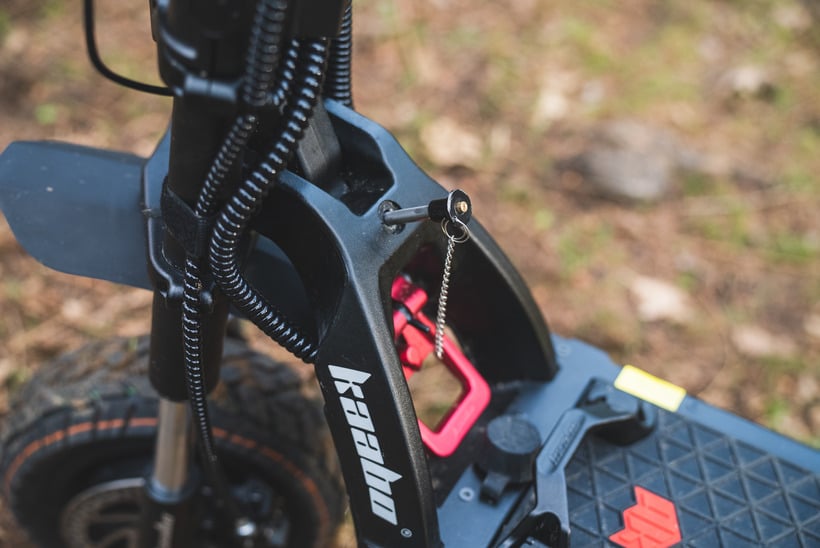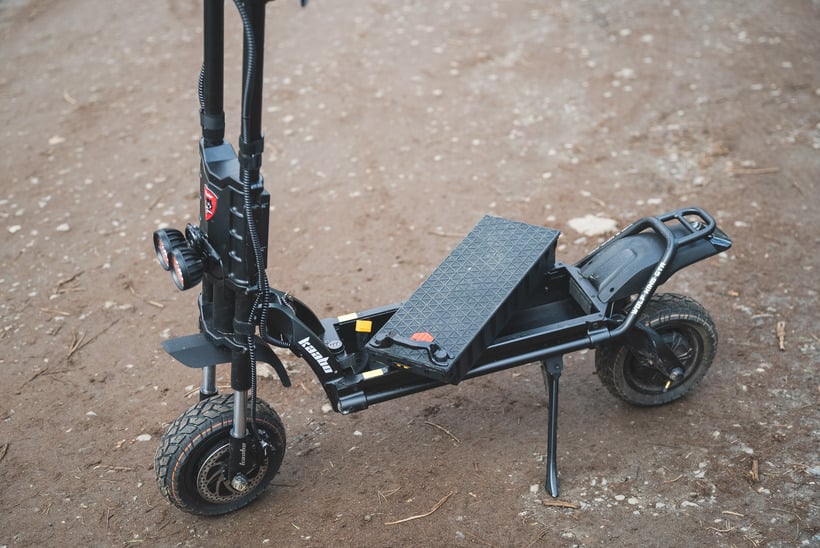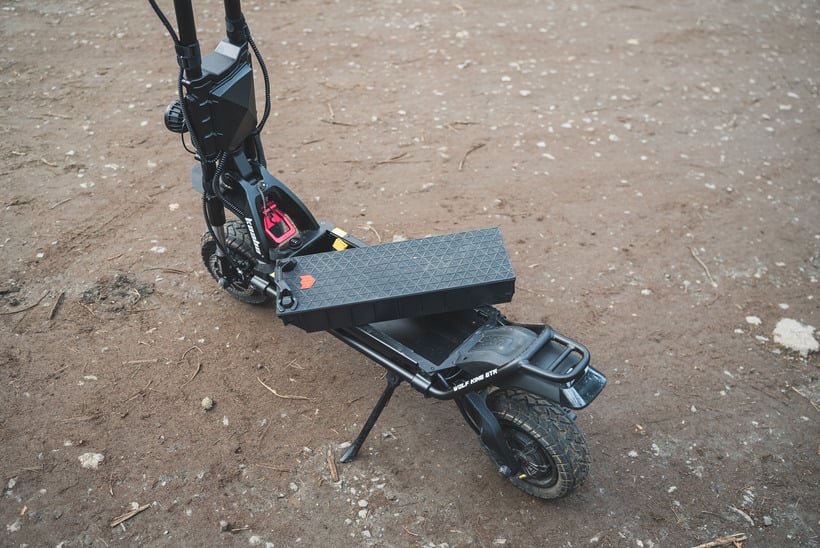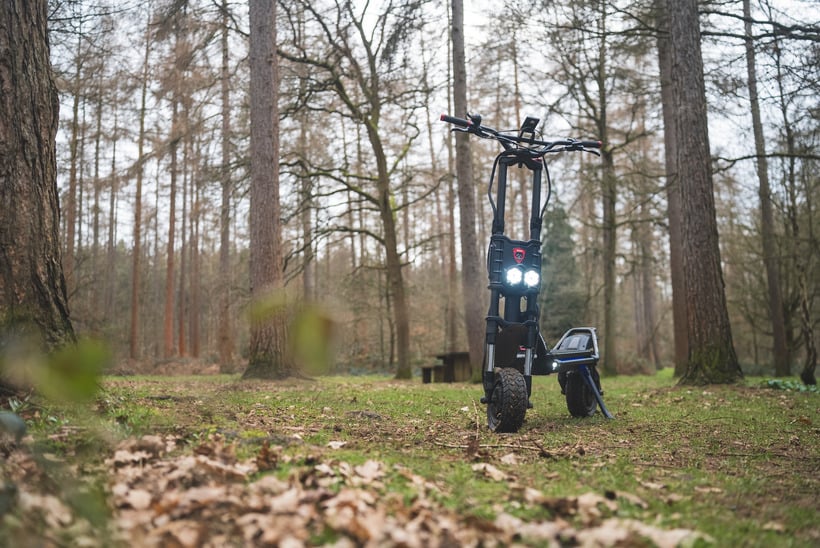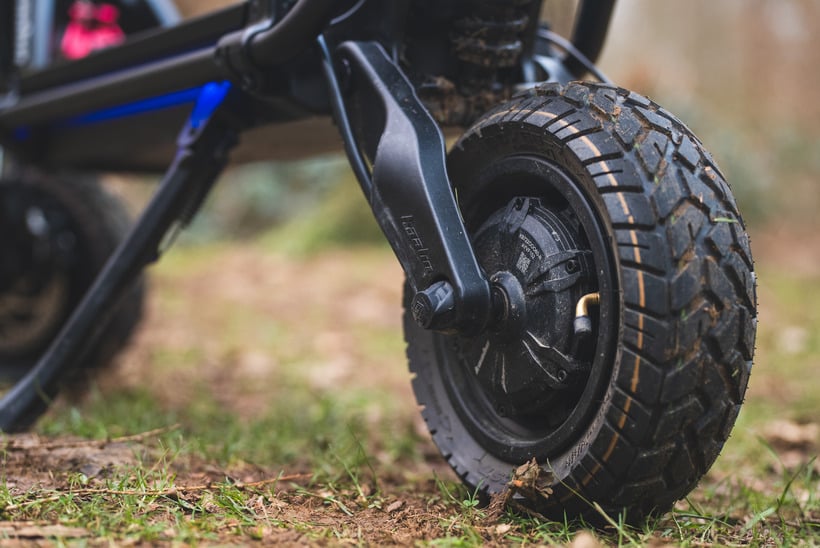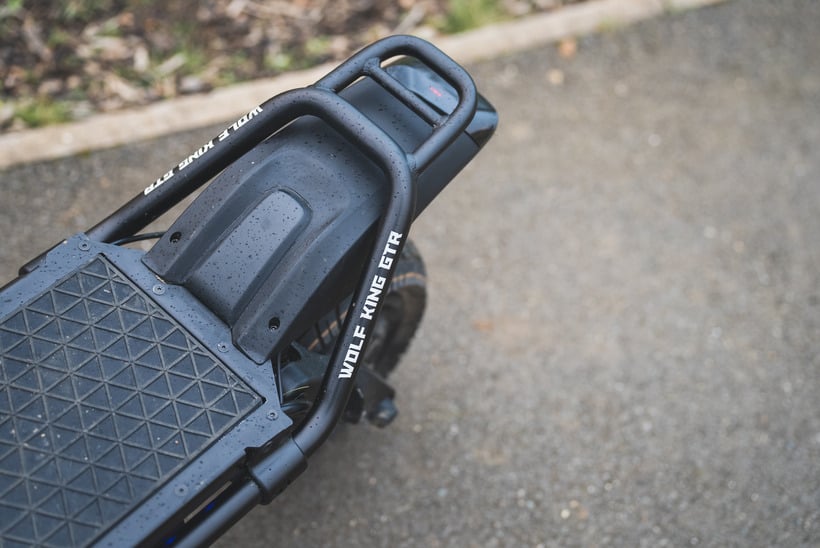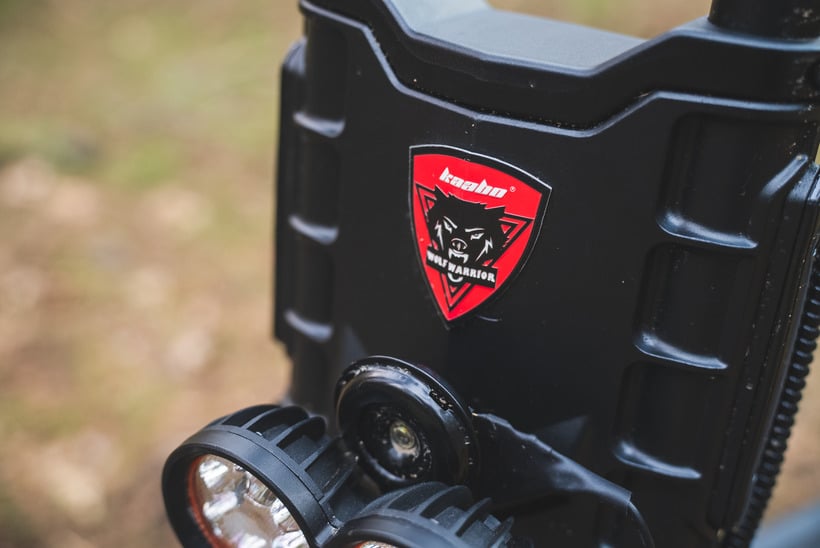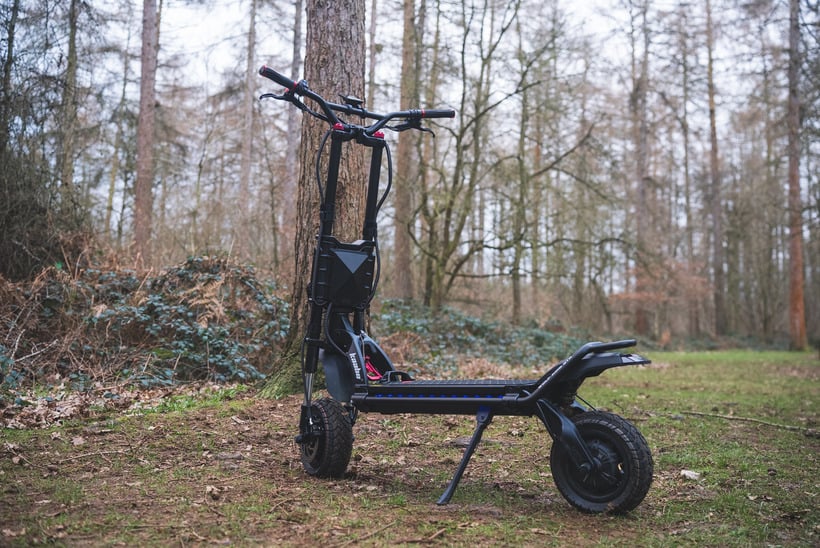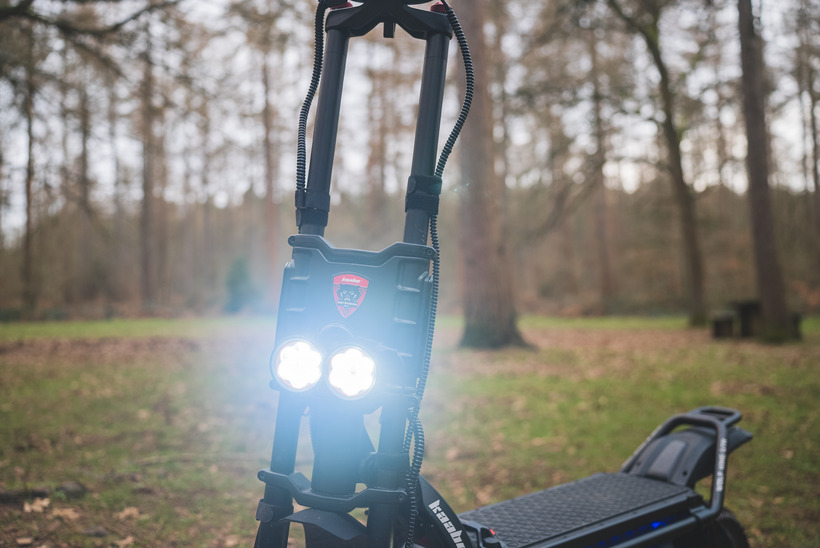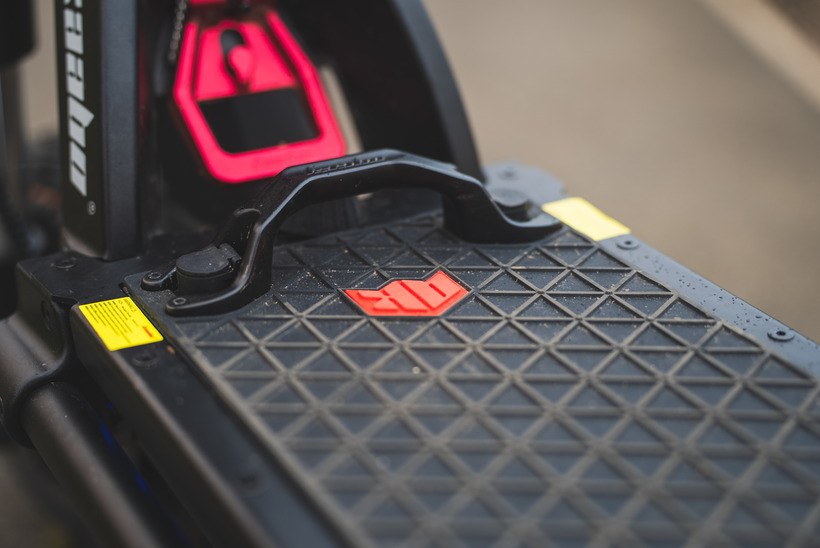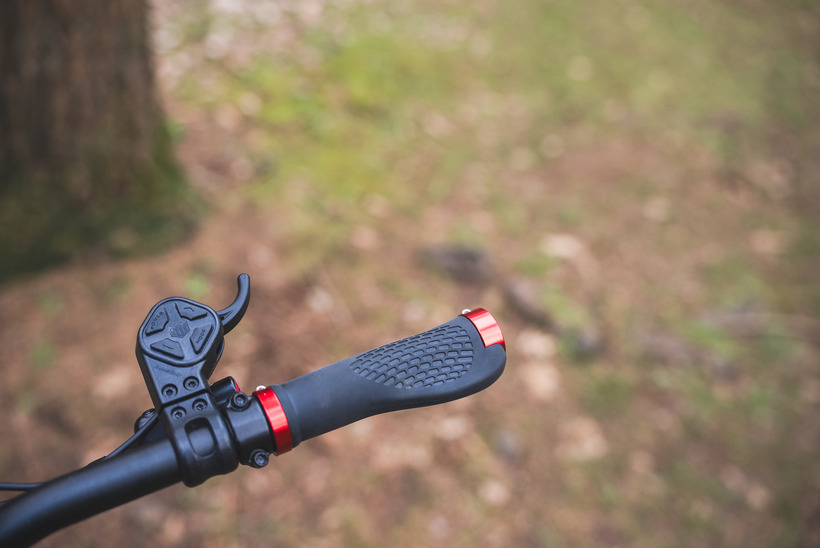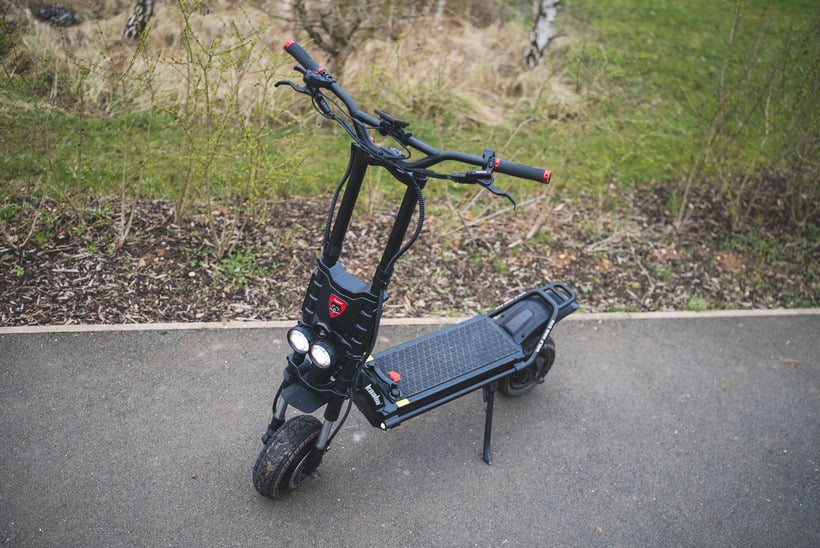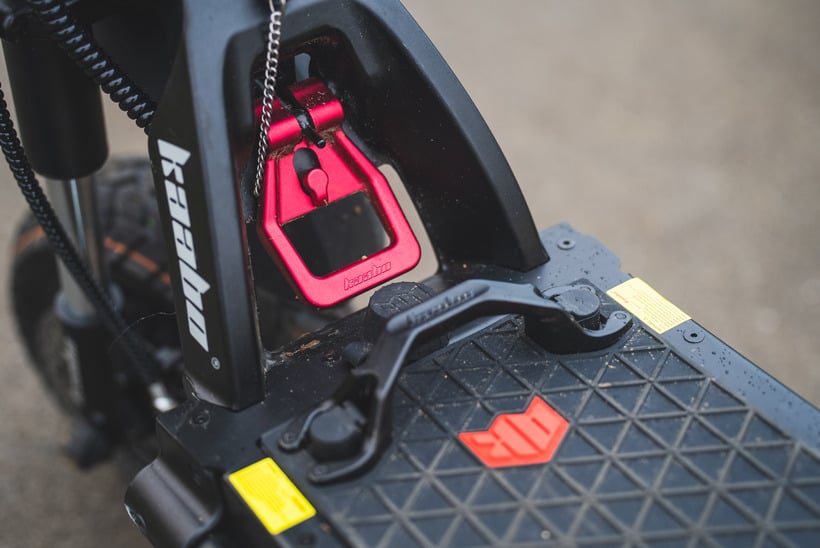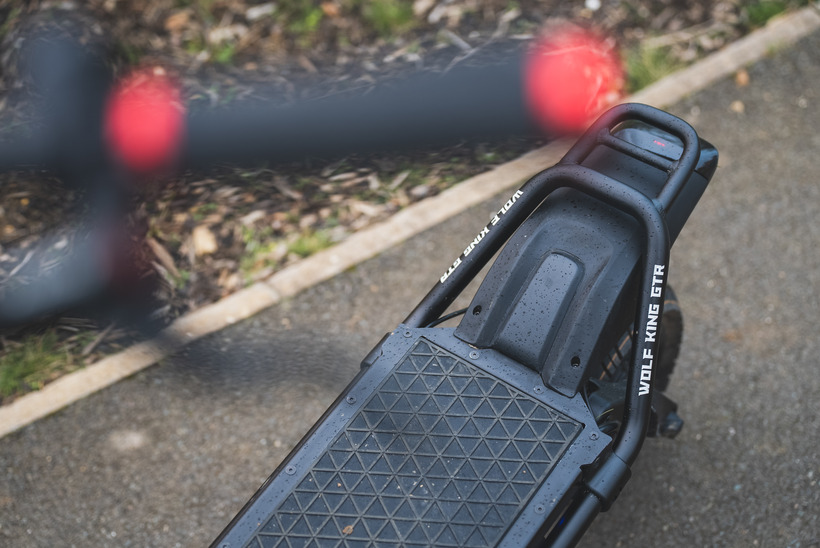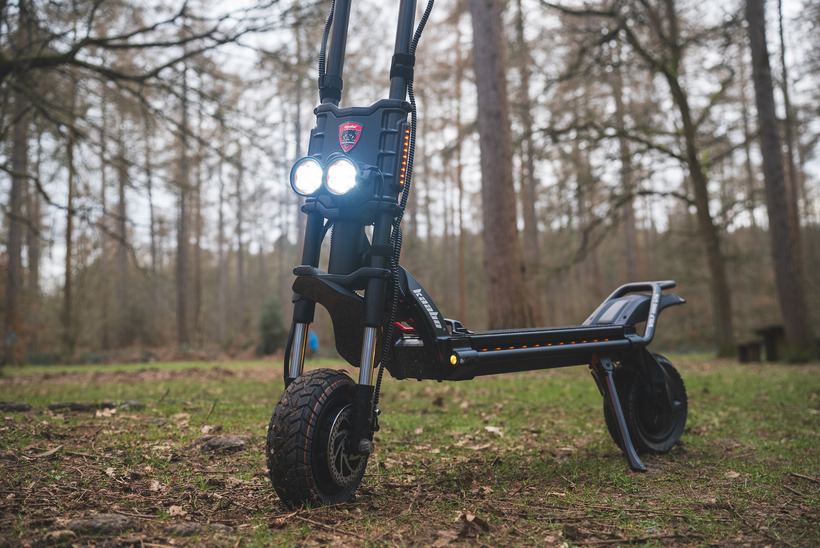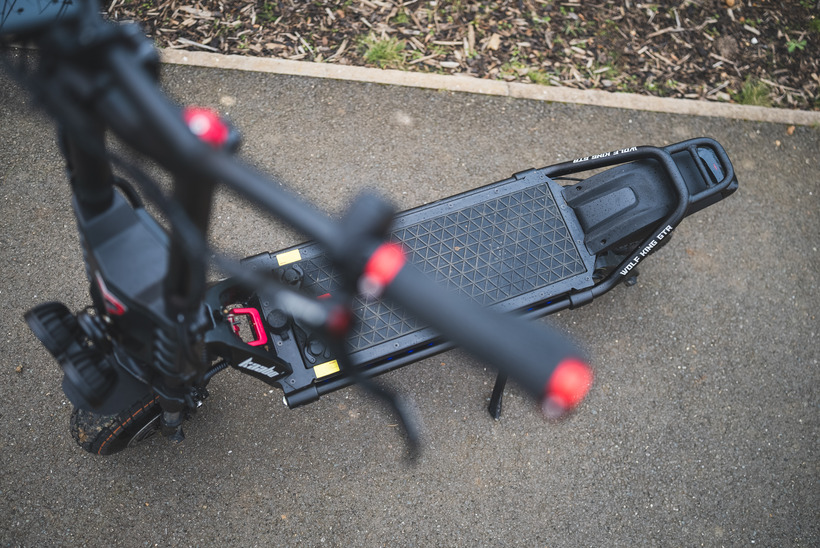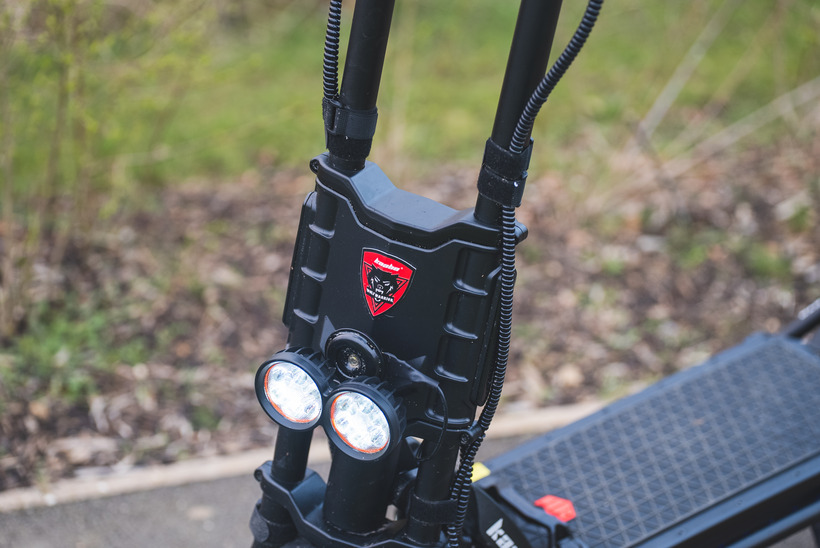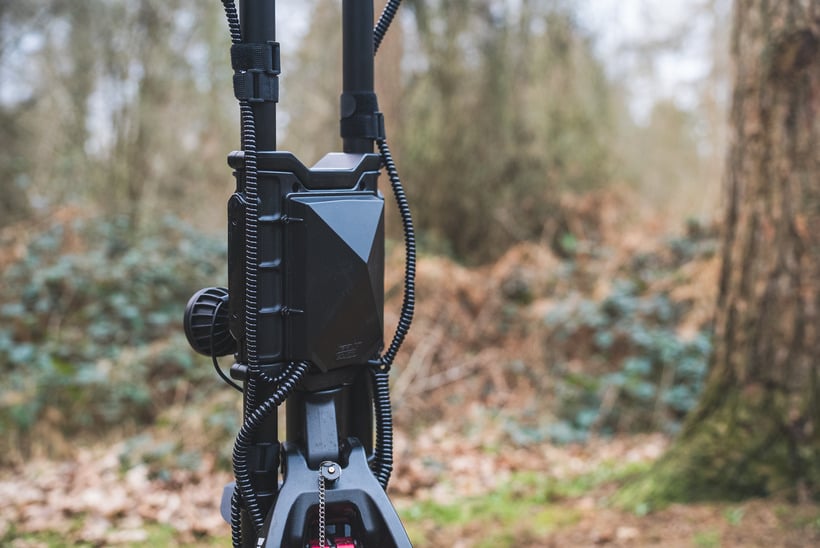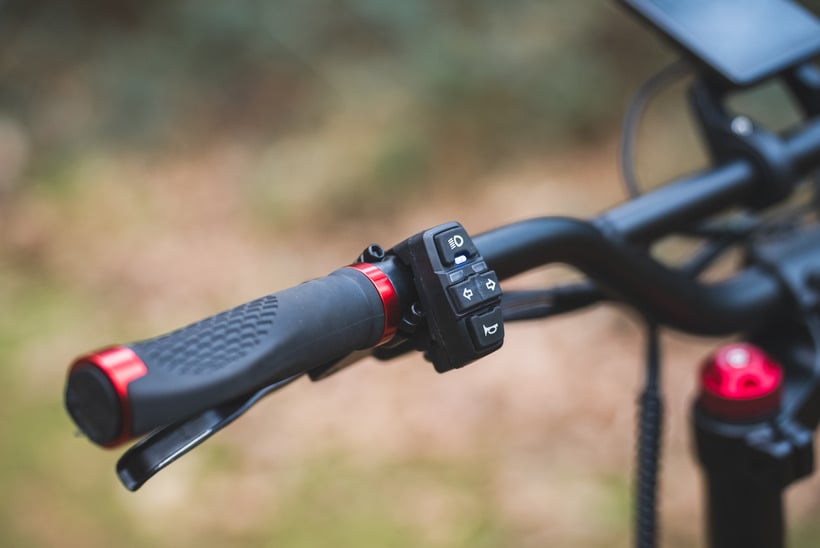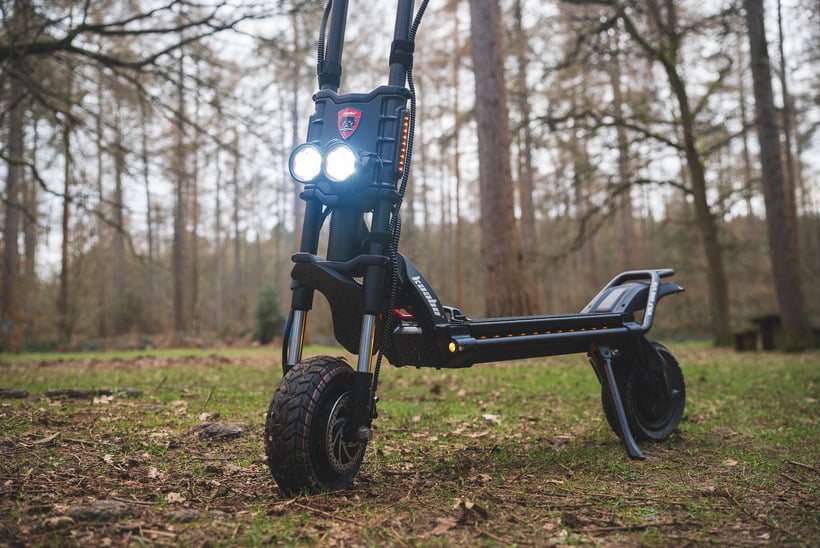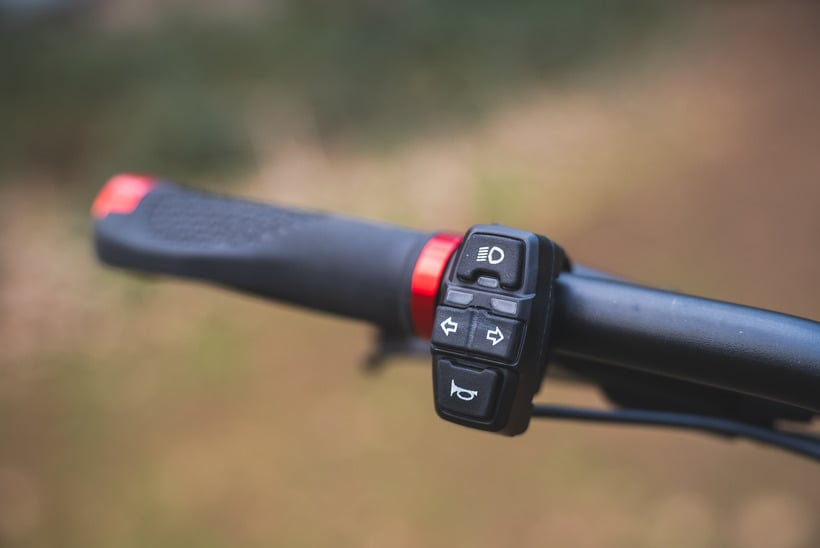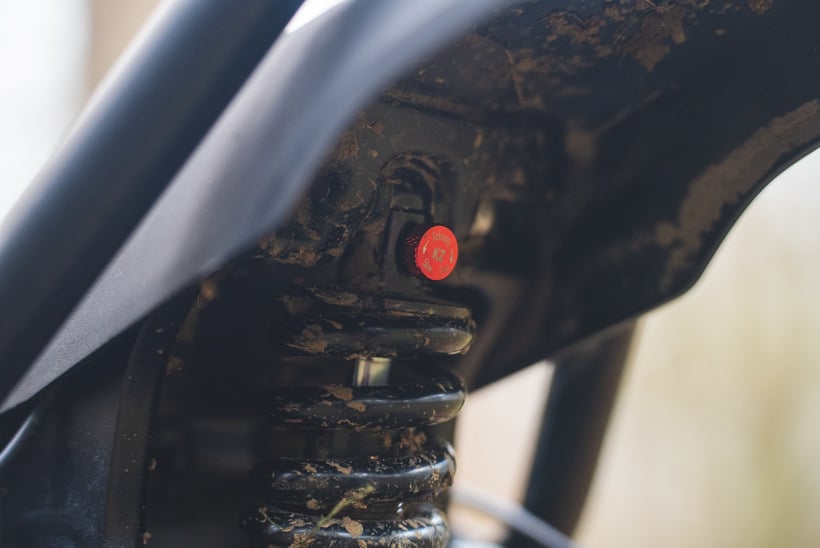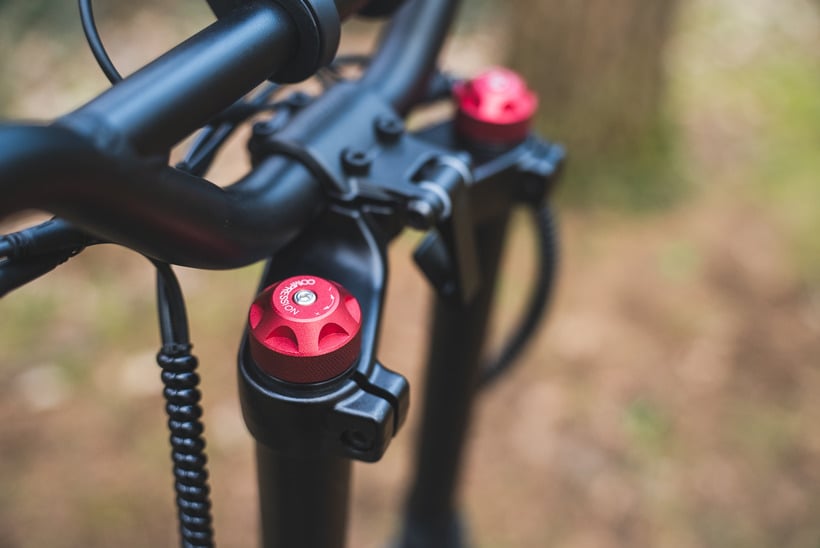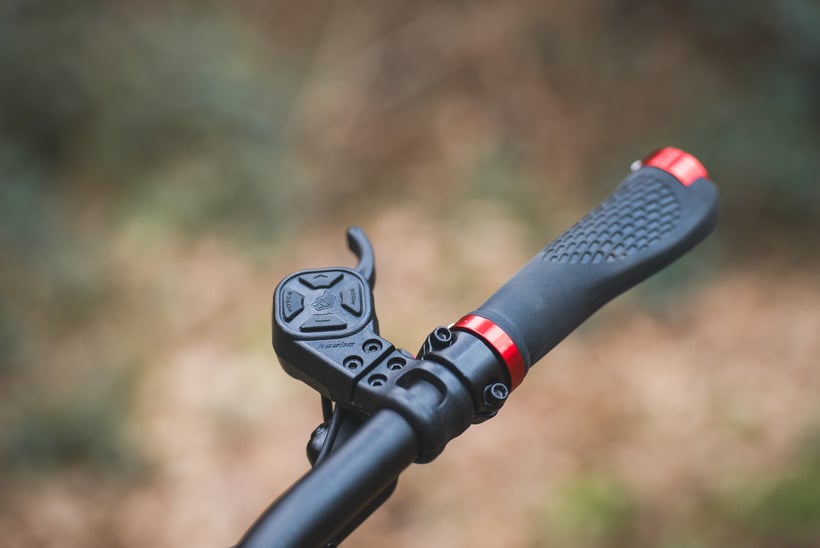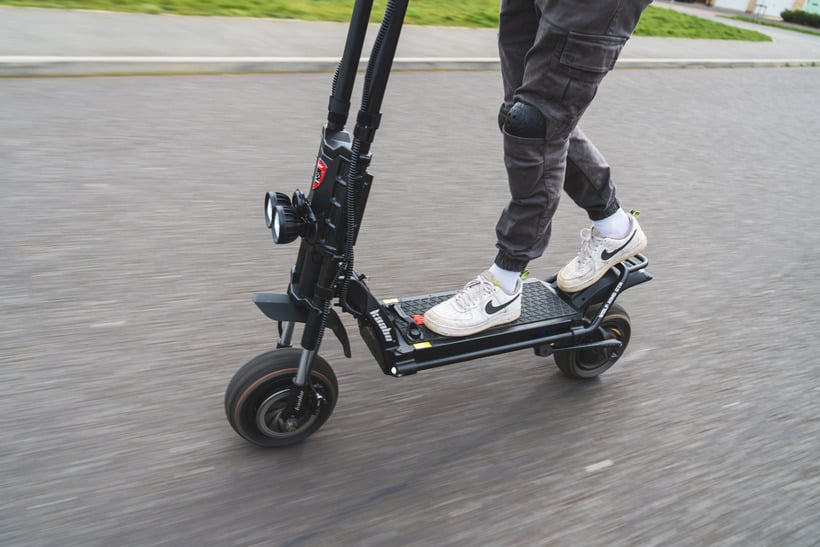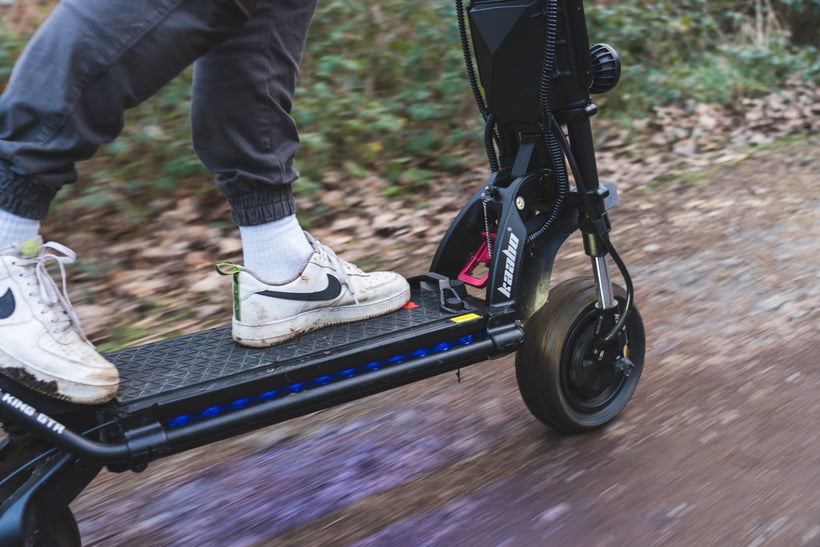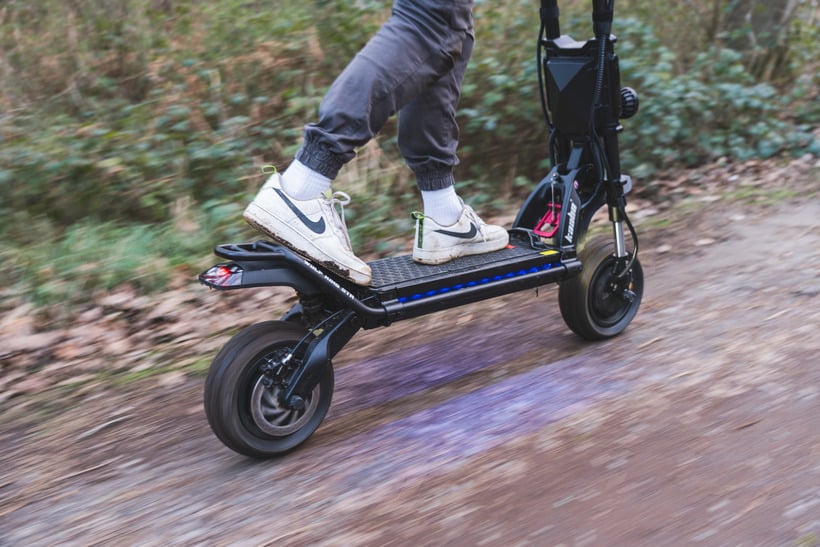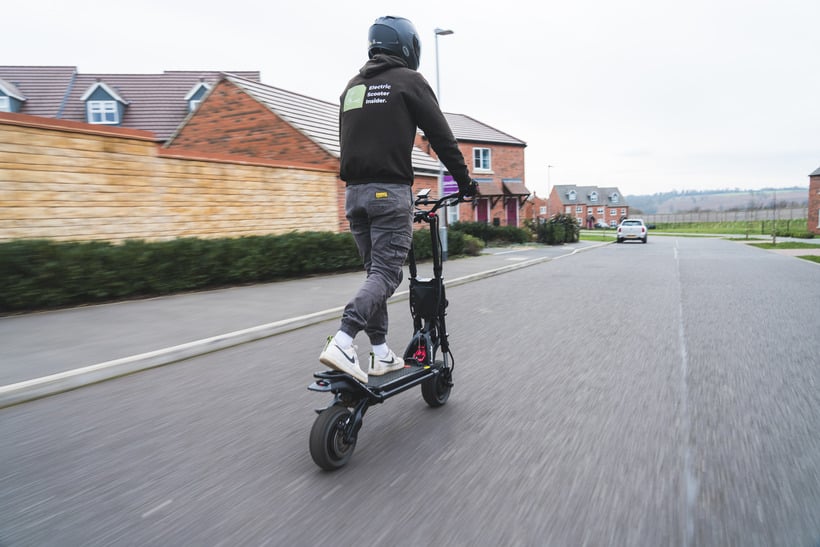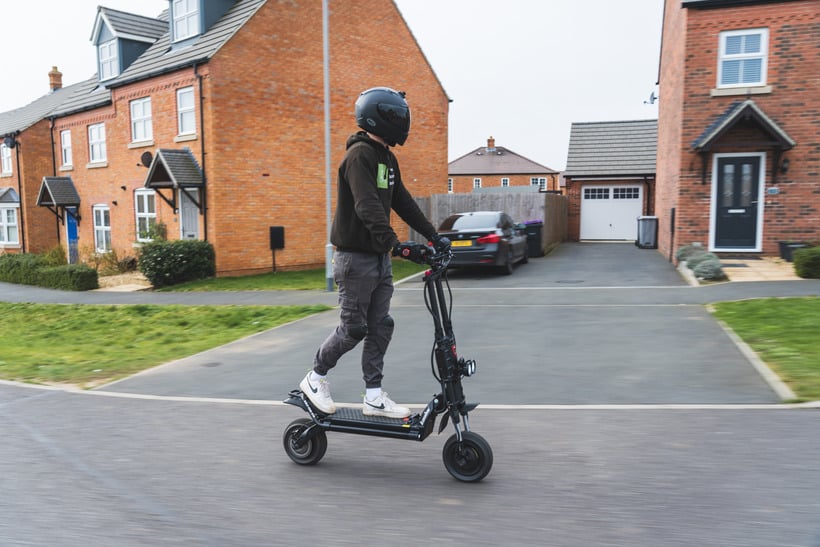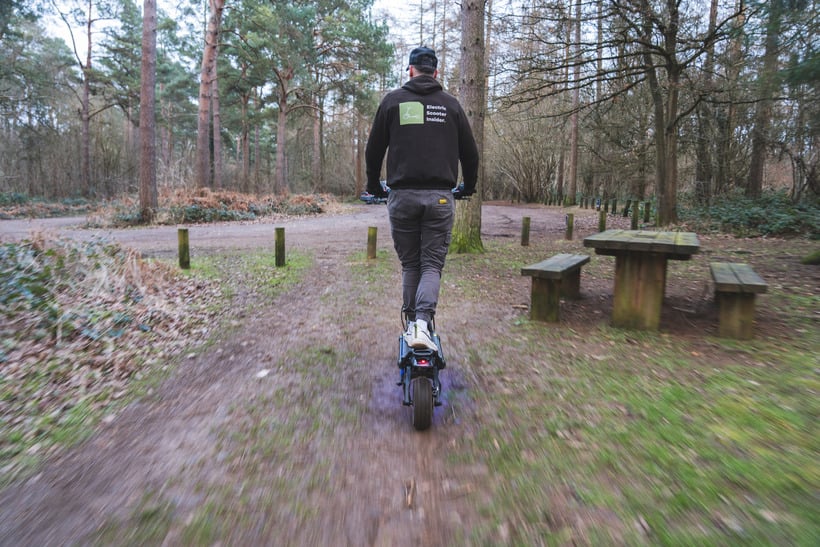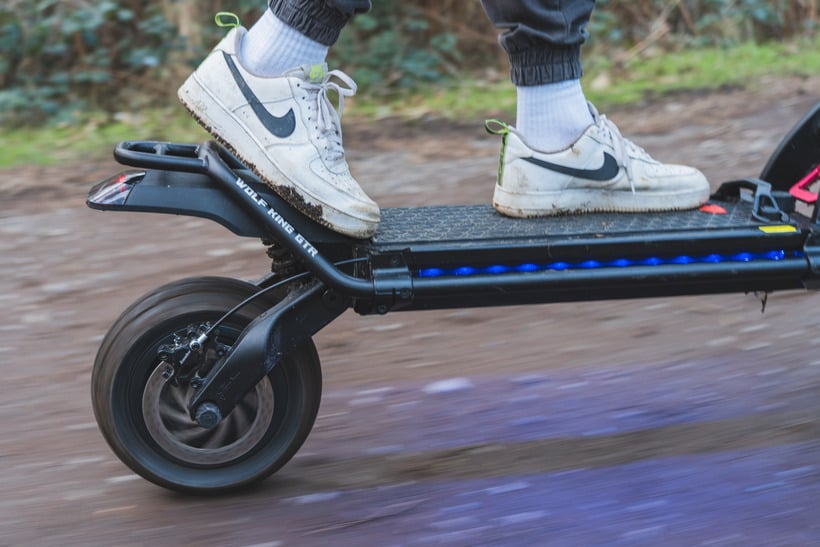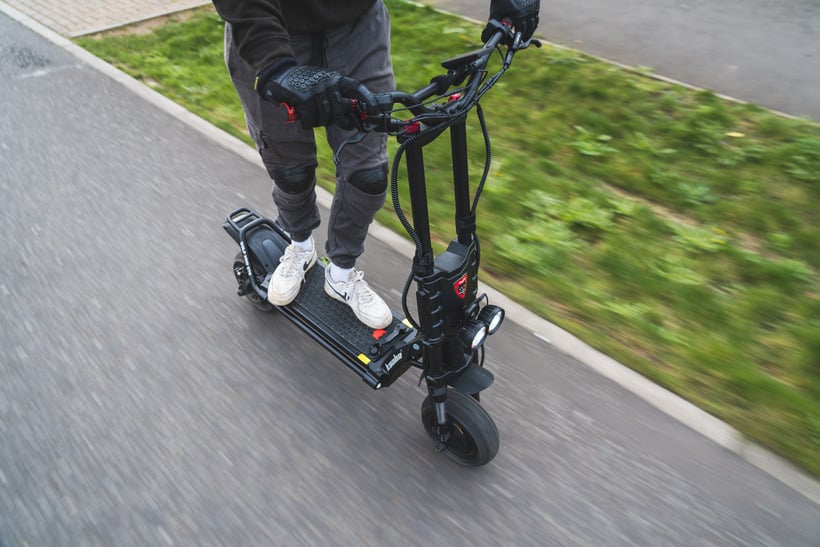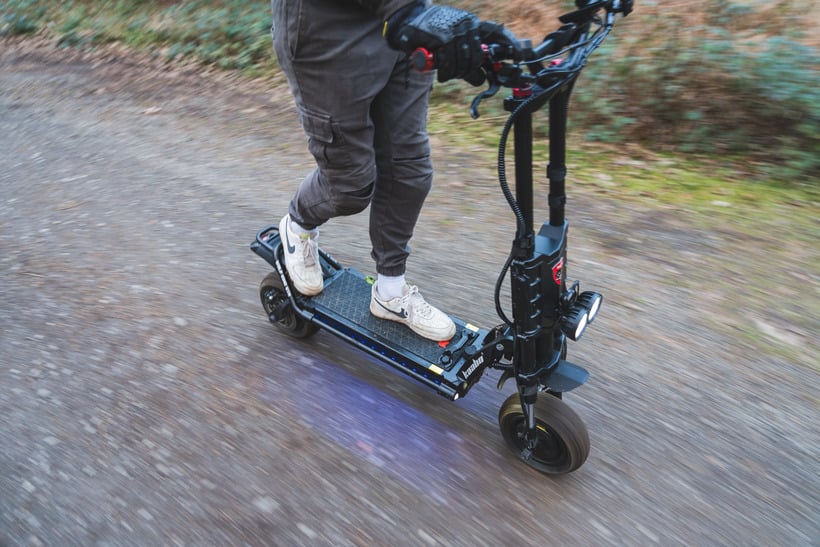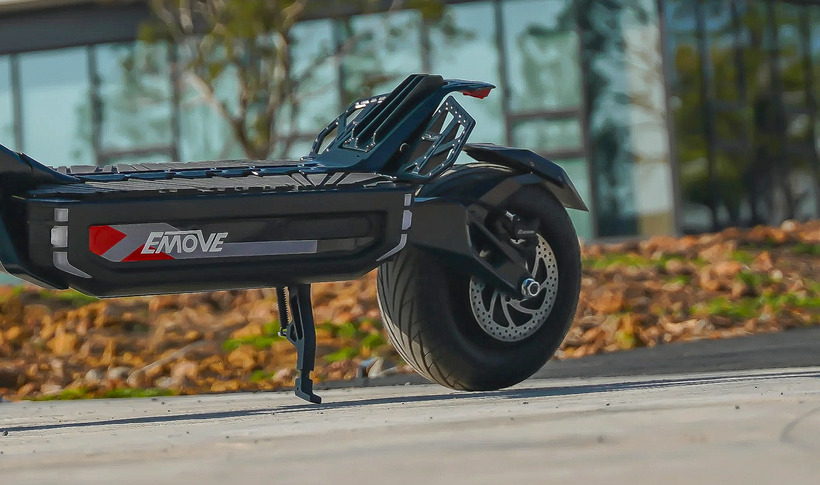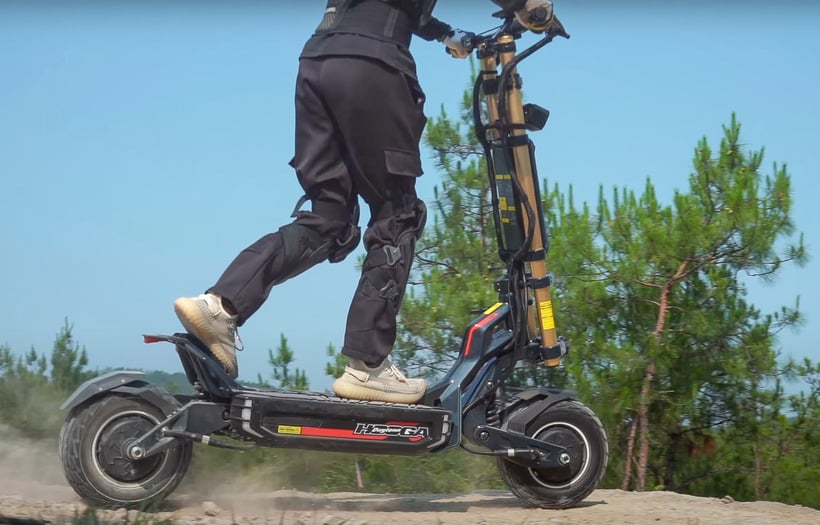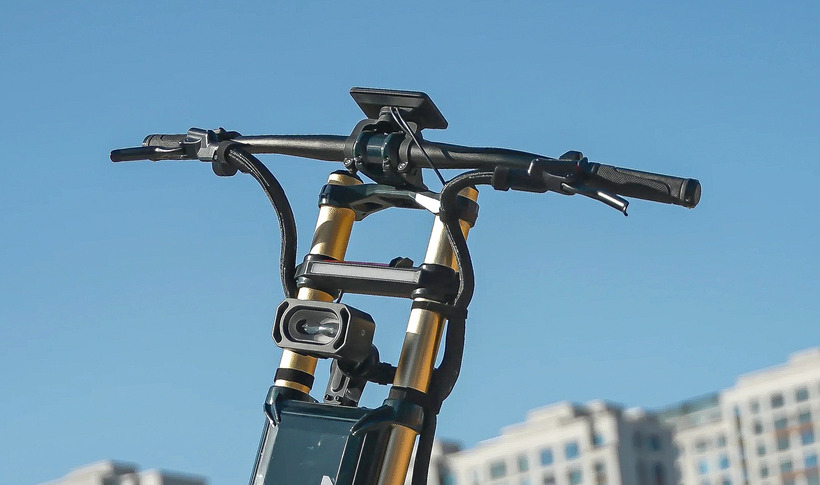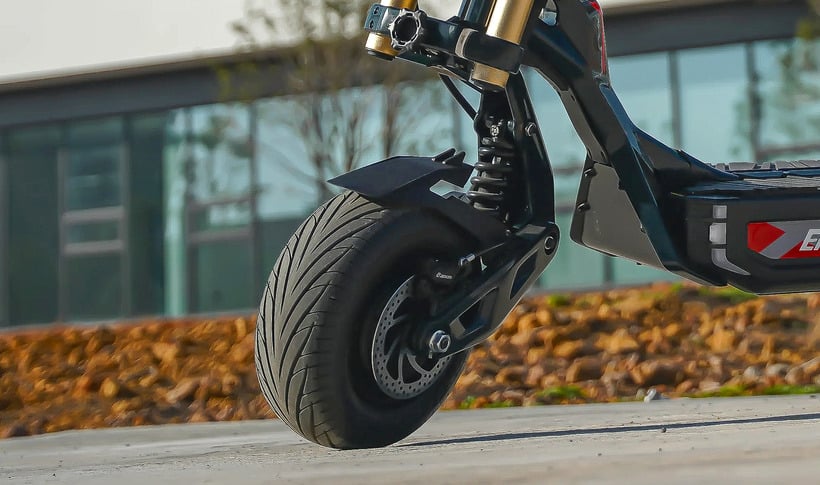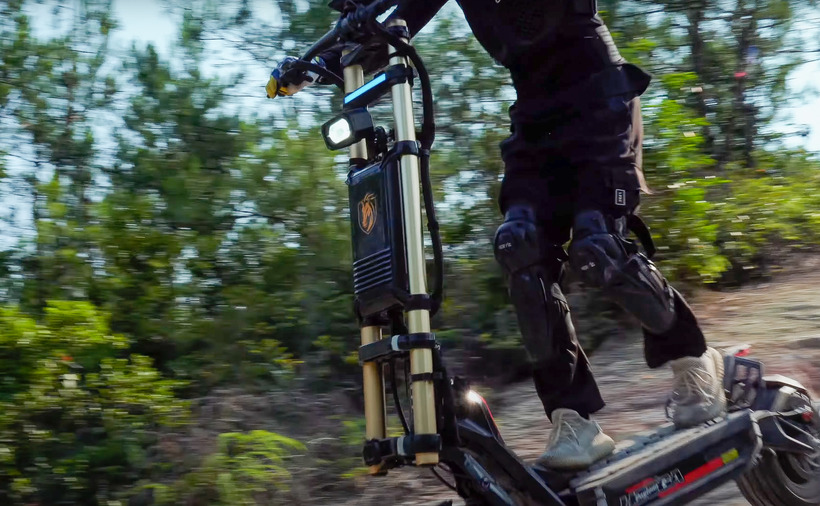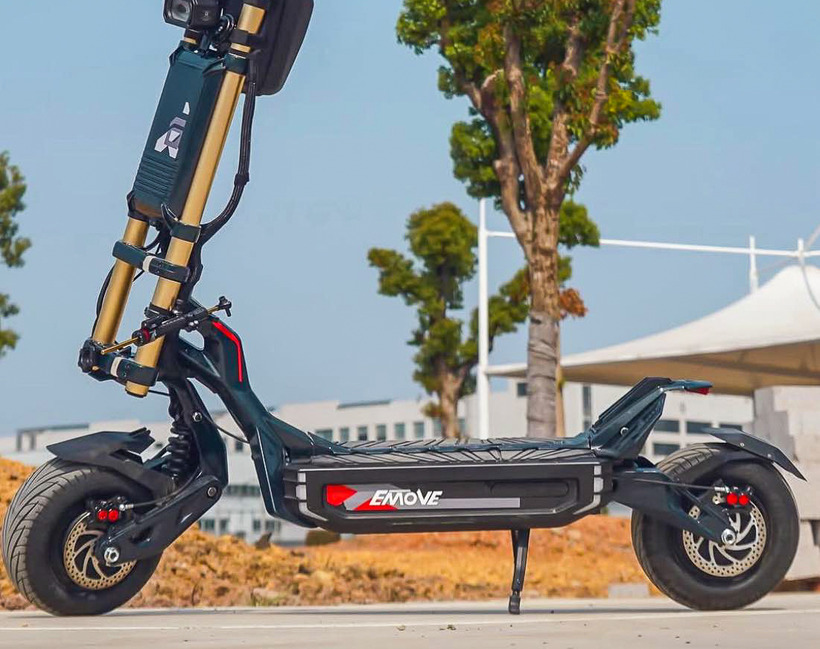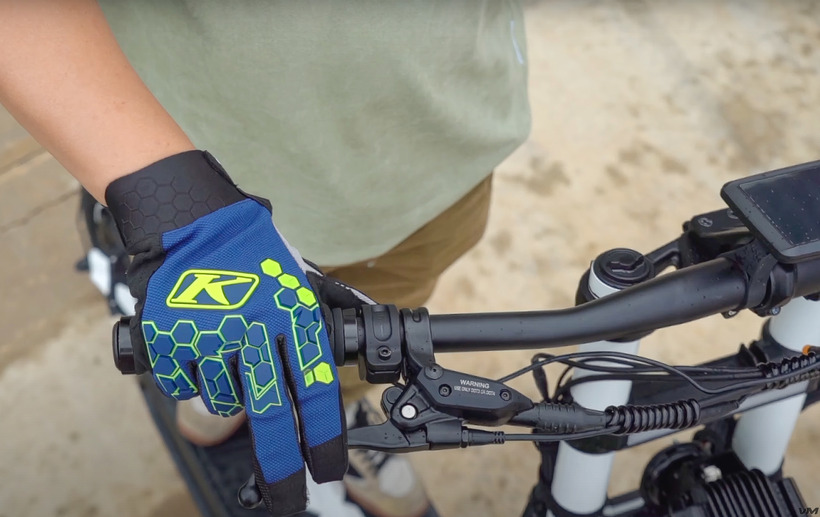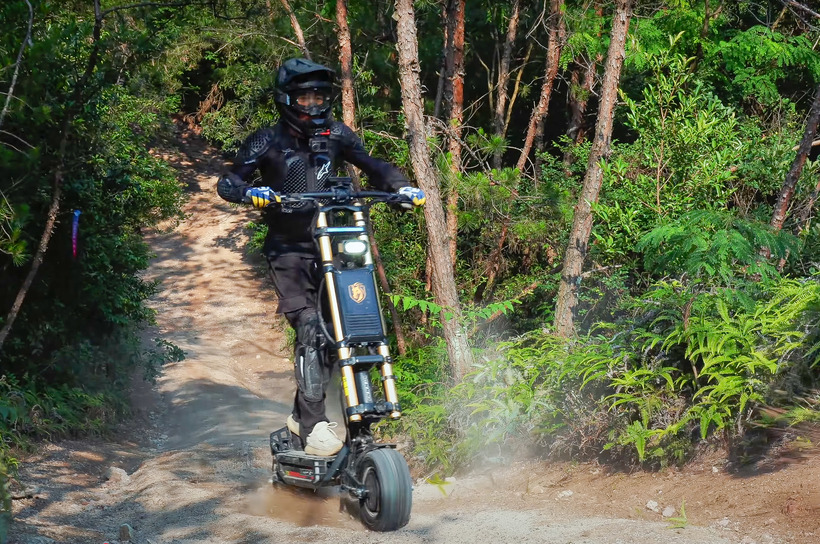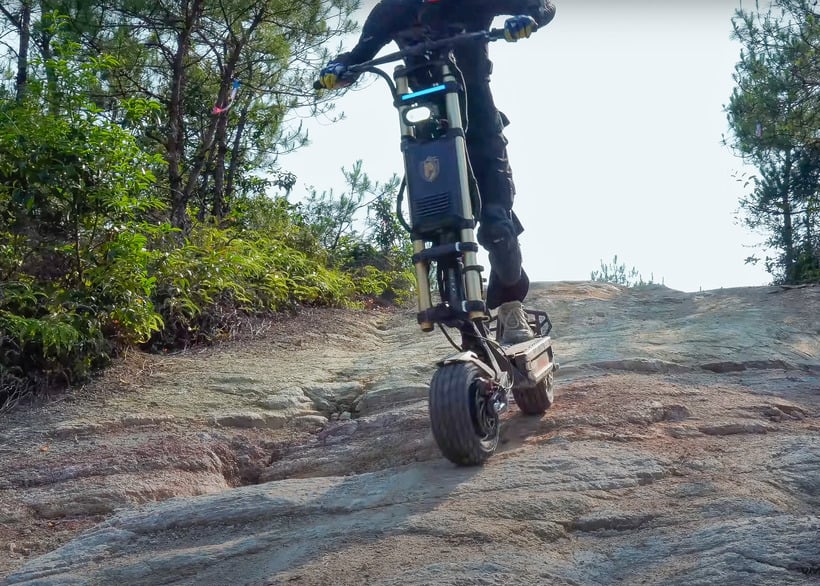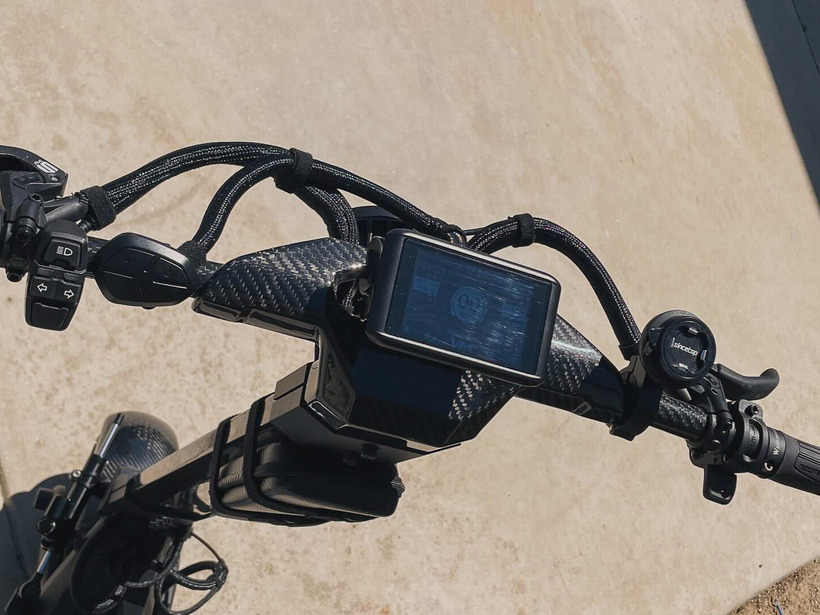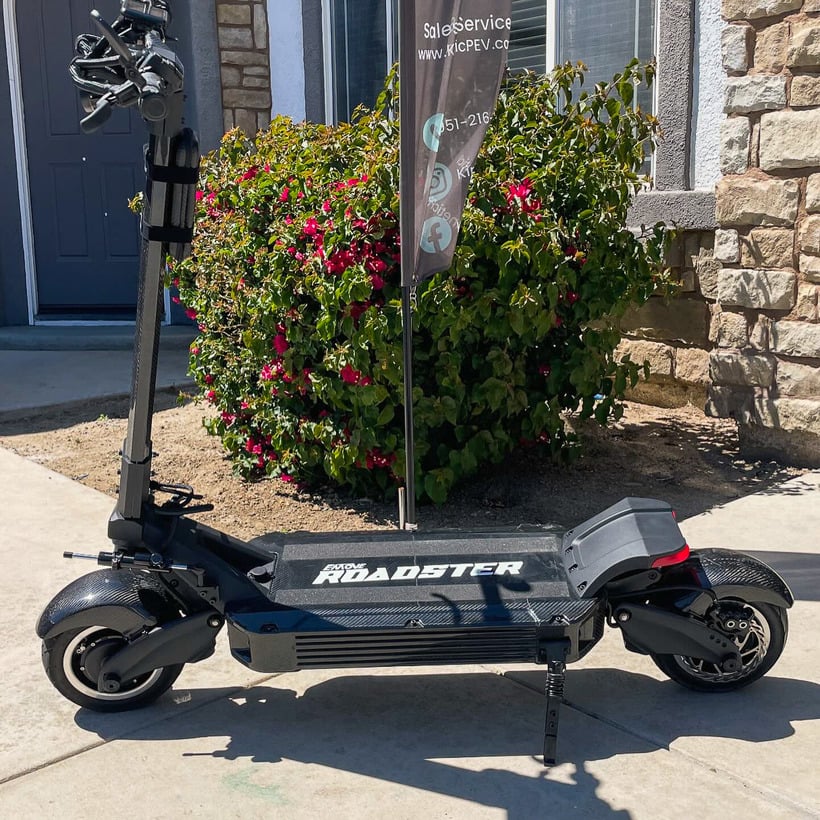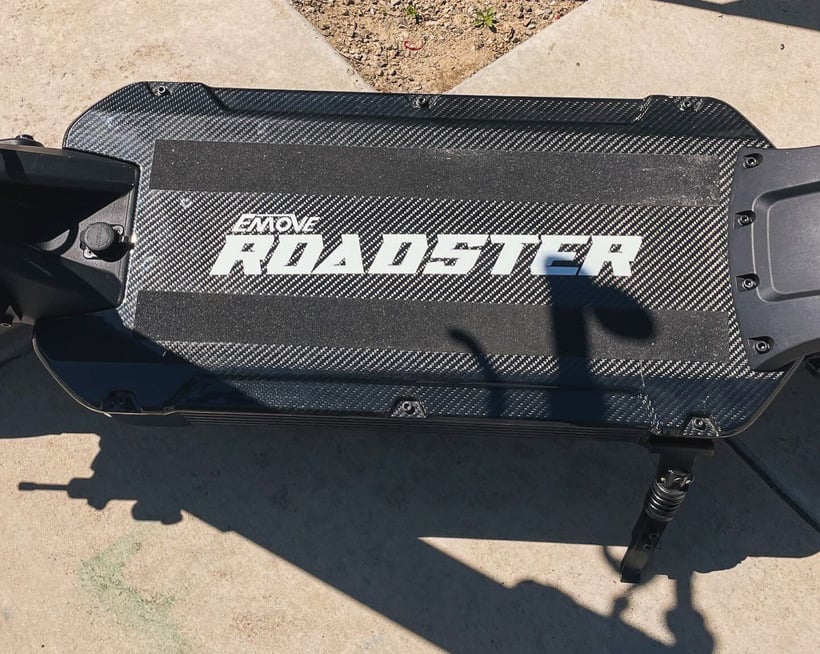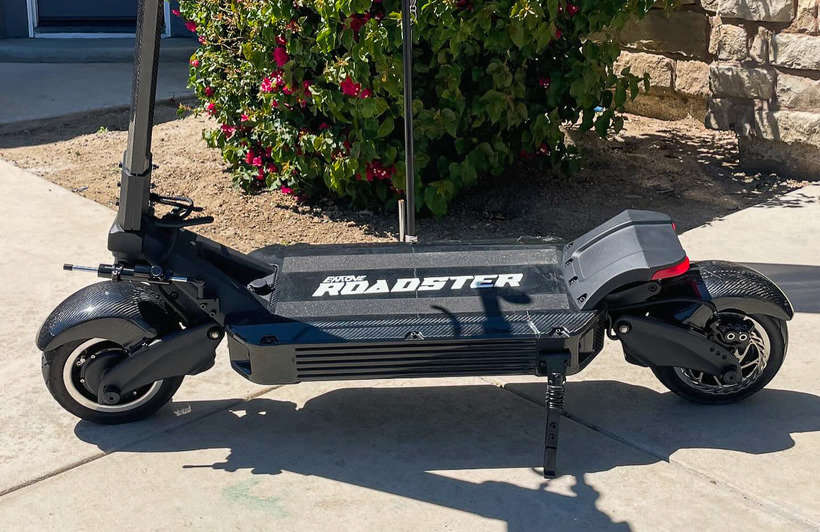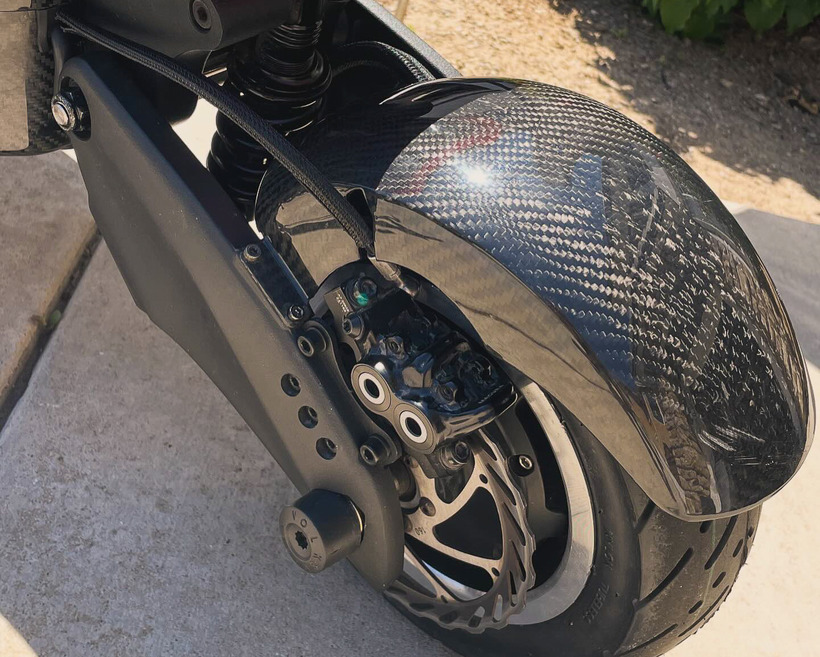Home » Best » Heavy Adults » Top Picks
Top Picks & Comparison: Best Electric Scooters For Heavy Adults (Quick List)
Quick List: Best Electric Scooters For Heavy Riders
I tested 44 heavy-duty electric scooters to find the 10 best models for heavy riders.
Best For 250-300 lbs:
- Best Under $600: VMAX VX5 Pro GT – Supports 265 lbs
- Best Under $800: VMAX VX2 Pro LT – Supports 287 lbs
- Best Under $1,000: Apollo Go – Supports 265 lbs
- Best Under $1,200: Apollo City – Supports 265 lbs
Best For 300-350 lbs:
- Best Under $2,000: VMAX VX4 GT – Supports 330 lbs
- Best Under $2,500: Apollo Phantom – Supports 300 lbs
- Best Under $3,000: Apollo Pro – Supports 330 lbs
- Best Under $4,000: Wolf King GTR – Supports 330 lbs
Best For 350-400 lbs:
- Best Under $5,000: Hooga Daytona – Supports 380 lbs
Best For 400-500 lbs:
- Best Under $6,000: EMOVE Roadster – Supports 500 lbs
Best Electric Scooters For Heavy Adults
Best Scooter Under $600 for 250–300 lb Riders

VMAX VX5 Pro GT
- Max Load: 265 lbs
- Unfolded (L x W x H): 43.7 x 21.9 x 46.9 in
Performance Report
Performance Report:
Tester: Josh Frisby (197 lbs, 6.1 ft)
- Top Speed: 18 mph
- Real Speed: 17.4 mph*
- 0-15 mph: 6.7 s*
- Max Range: 22 miles
- Real Range: 19 miles*
- Braking: 2.0 meters*
- Suspension: n/a
- Max Incline: 14 degrees
- Optimal Incline: 8 degrees*
- Weight: 36.8 lbs
- Load: 265 lbs
Pros & Cons
The Good:
- Competitive performance profile
- 11% faster acceleration compared to the average of its rivals
- Shortest stopping distance among its rivals
- Best design and build in its price class
- Wider than normal handlebars promote good handling
- Regenerative braking system recycles kinetic energy to recharge the battery on the go
- High quality UL2272-certified battery
- Grippy and nimble 8.5-inch tubed tires
- Immaculate cable management
- Mobile app allows for customized performance
- Slick folding mechanism
- 40.2-inch deck-to-handlebar height makes it suitable for tall riders up to 6’3”
- Protective IPX6 water-resistance rating
- Long fenders that prevent splashback
- Quiet motor
- Low maintenance
- 2-year warranty
The Bad:
- Display gets washed out in direct light
- The taillight is bright at night, but it doesn’t flash when you brake - it just glows a brighter red
Video Review
Best Scooter Under $800 for 250–300 lb Riders

VMAX VX2 Pro LT
- Max Load: 287 lbs
- Unfolded (L x W x H): 44.5 x 23.0 x 48.3 in
Performance Report
Performance Report:
Tester: Josh Frisby (190 lbs, 6.1 ft)
- Top Speed: 24 mph
- Real Speed: 24.5 mph*
- 0-15 mph: 3.8 s*
- Max Range: 22 miles
- Real Range: 19.9 miles*
- Braking: 3.0 meters*
- Suspension: n/a
- Max Incline: 15 degrees
- Optimal Incline: 9 degrees*
- Weight: 43.2 lbs
- Load: 287 lbs
Pros & Cons
The Good:
- Fastest acceleration among similarly priced single-motor scooters
- Strong brakes that use a regenerative system to recycle kinetic energy to recharge the battery on the go
- Exceptionally quiet motor
- Impeccable build quality
- Nimble tubeless tires
- Suitable for tall and heavy riders
- Bright lights with excellent turn signals that are visible from the front, rear, and sides
- Mobile app allows for customized performance
- Slick folding mechanism
- Tidy cable management
- Protective IPX6 water-resistance rating
- Long fenders that prevent splashback
- Low maintenance
- 2-year warranty
The Bad:
- Doesn’t have suspension
- Display gets washed out in direct light
- The taillight is bright at night, but it doesn’t flash when you brake - it just glows a brighter red
Video Review
Best Scooter Under $1,000 for 250–300 lb Riders

Apollo Go
- Max Load: 265 lbs
- Unfolded (L x W x H): 46.5 x 20.4 x 49.0 in
Performance Report
Performance Report:
Tester: Josh Frisby (197 lbs, 6.1 ft)
- Top Speed: 28 mph
- Real Speed: 25.5 mph*
- 0-15 mph: 3.8 s*
- Max Range: 30 miles
- Real Range: 17.6 miles*
- Braking: 3.1 meters*
- Suspension: 6/10*
- Max Incline: 25 degrees
- Optimal Incline: 12 degrees*
- Weight: 46 lbs
- Load: 265 lbs
Pros & Cons
The Good:
- Ultra-sleek design
- Premium build quality
- Packed full of useful features
- Cybertruck-inspired lights
- Handlebar integrated turn signals
- Well-designed geometry delivers intuitive control and handling
- Best-in-class cockpit ergonomics
- DOT Matrix display is extremely bright and easy to read from any angle
- Comes with a free QuadLock phone case accessory (saving you $30)
- Integrated mobile app for customized performance
- Stable and nimble thanks to its 14-degree rake angle
- Reliable self-healing tires
- A regenerative braking system recycles kinetic energy to recharge the battery by up to 10%
- A 40-inch deck-to-handlebar height and 265 lb load-bearing capacity make it well-suited to tall and heavy riders
- Impeccable cable management
- Extremely low maintenance
- Battery management system ensures long-term health
- Protective IP66 water-resistance rating
The Bad:
- The plastic caps that encapsulate the turn signals are prone to damage
- The taillight is dim during the day
- The clip-in, clip-out folding hook system is a little fiddly
- The handlebars are slightly narrow
Video Review
Photos
Best Scooter Under $1,200 for 250–300 lb Riders

Apollo City Pro
- Max Load: 265 lbs
- Unfolded (L x W x H): 47.2 x 26.4 x 50.5 in
Performance Report
Performance Report:
Tester: Josh Frisby (190 lbs, 6.1 ft)
- Top Speed: 32 mph
- Real Speed: 31.2 mph*
- 0-15 mph: 2.3 s*
- 0-25 mph: 6.1 s*
- Max Range: 43 miles
- Real Range: 27 miles*
- Braking: 2.1 meters*
- Suspension: 7.5/10*
- Max Incline: 20 degrees
- Optimal Incline: 13 degrees*
- Weight: 65 lbs
- Load: 265 lbs
Pros & Cons
The Good:
- Competitive performance profile
- Fast acceleration
- Smooth power delivery
- Sublime handling
- Sleek aesthetic
- Feature-rich
- Proprietary design ensures top-class build quality
- Tubeless, self-healing tires
- Shock-absorbing triple spring suspension
- Regen brake recharges the battery by up to 10%
- Intuitive folding mechanism
- Good lighting setup with the best turn signals that I’ve tested
- Battery management system ensures long-term performance
- Integrated mobile app for customized performance
- Fast charging
- 10,000 km warranty
- Low maintenance
- Suitable for tall and heavy riders
- High IP66 water-resistance rating
The Bad:
- The display could be brighter
- Similarly priced models go faster, but the Apollo City Pro’s overall package is superior
Video Review
Photos
Best Scooter Under $2,000 for 300–350 lb Riders

VMAX VX4 GT
- Max Load: 330 lbs
- Unfolded (L x W x H): 48.0 x 23.0 x 51.5 in
Performance Report
Performance Report:
Tester: Josh Frisby (197 lbs, 6.1 ft)
- Top Speed: 25 mph
- Real Speed: 25.8 mph*
- 0-15 mph: 3.2 s*
- 0-25 mph: 9.6 s*
- Max Range: 62 miles
- Real Range: 36.7 miles*
- Braking: 3.4 meters*
- Suspension: 6.5/10*
- Max Incline: 18 degrees
- Optimal Incline: 11 degrees*
- Weight: 63.9 lbs
- Load: 330 lbs
Pros & Cons
The Good:
- Long real-world tested range
- Zippy acceleration
- Quiet motor
- Smooth front and rear suspension
- Versatile hybrid tubeless tires
- Great handling
- Excellent build quality
- Regenerative braking system that recycles kinetic energy to recharge the battery on the go
- Immaculate cable management
- Spacious dimensions
- Suitable for tall and heavy riders (up to 6’4” and 330 lbs)
- Bright turn signals ensure 360-degree visibility
- Display remains visible under direct sunlight
- Long fenders prevent splashback
- Protective IPX6 water-resistance rating
- Low maintenance
- 2-year warranty
The Bad:
- While the folding lever is simple to operate, the same can’t be said for how the latch on the back of the handlebars hooks to the kickplate. It’s difficult to connect the two, and they have a habit of becoming unhooked. This makes the scooter cumbersome to maneuver when folded
- Installing the handlebars is fiddly - there was a lot of extra slack in the thick wires and a very narrow hole to stick them through
- The button pad to control the settings, turn signals, and riding modes is well positioned but would benefit from a more responsive design - with gloves on it was hard to tell if I had pressed the turn signal or riding mode button
- The taillight is bright at night, but it doesn’t flash when you brake - it just glows a brighter red
Video Review
Best Scooter Under $2,500 for 300–350 lb Riders
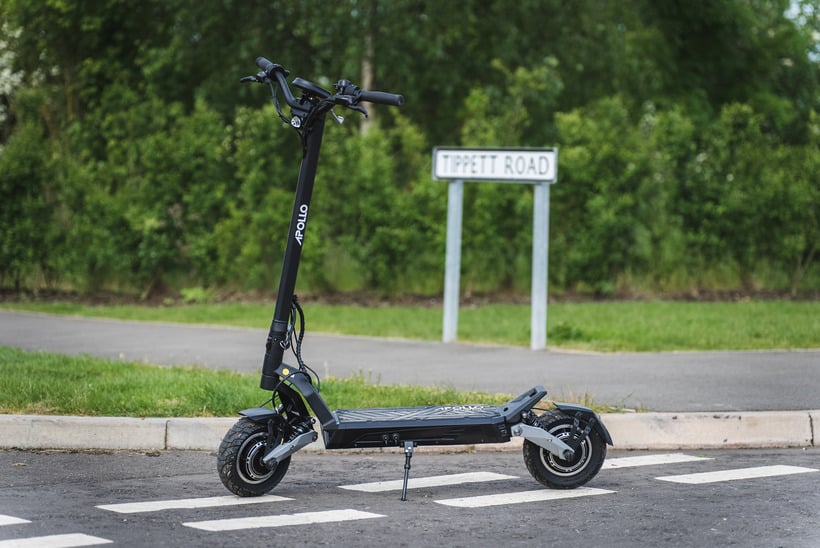
Apollo Phantom
- Max Load: 300 lbs
- Unfolded (L x W x H): 49.0 x 27.0 x 51.0 in
Performance Report
Performance Report:
Tester: Josh Frisby (190 lbs, 6.1 ft)
- Top Speed: 41 mph
- Real Speed: 41 mph*
- 0-15 mph: 2.3 s*
- 0-25 mph: 4.5 s*
- 0-30 mph: 7.0 s*
- Max Range: 40 miles
- Real Range: 29 miles*
- Braking: 2.1 meters*
- Suspension: 7.5/10*
- Max Incline: 25 degrees
- Optimal Incline: 15 degrees*
- Weight: 77 lbs
- Load: 300 lbs
Pros & Cons
The Good:
- New MACH1 controller unleashes high performance
- Supremely smooth throttle response
- Rapid acceleration
- Ludo mode boosts torque and top speed
- First-ever performance scooter to feature a regenerative brake paddle
- Supreme handling
- Quadruple springs are perfectly calibrated
- Mobile app lets you customize performance settings
- Great for tall and heavy riders
- Ergonomic cockpit
- Excellent lighting rig
- Sharp and responsive hydraulic brakes
- IP54 water resistance rating
The Bad:
- The rubber that sits around the plastic casing of the regen and throttle paddles is poorly-fitted
- Similarly-priced scooters offer more raw power, but some don’t match up to Apollo’s end-to-end customer experience
Video Review
Photos
Best Scooter Under $3,000 for 300–350 lb Riders
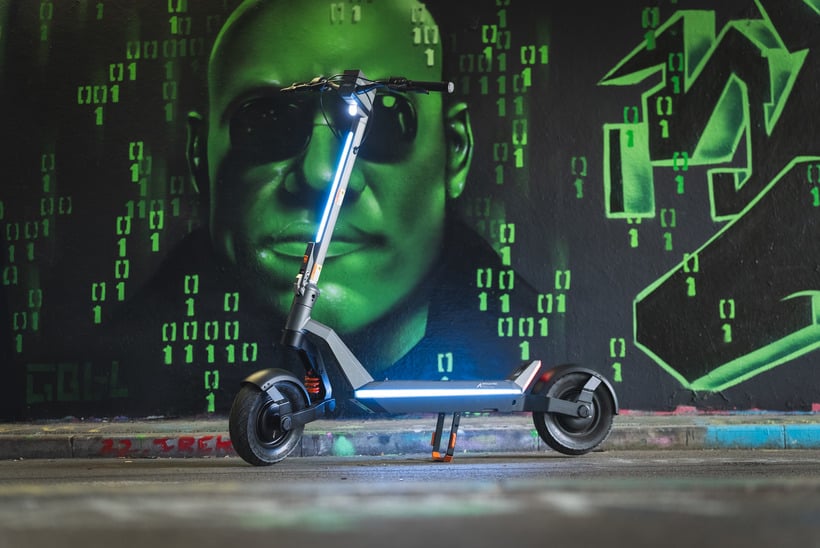
Apollo Pro
- Max Load: 330 lbs
- Unfolded (L x W x H): 55.1 x 28.0 x 53.0 in
Performance Report
Performance Report:
Tester: Josh Frisby (190 lbs, 6.1 ft)
- Top Speed: 44 mph
- Real Speed: 44 mph*
- 0-15 mph: 2.1 s*
- 0-25 mph: 4.3 s*
- 0-30 mph: 6.3 s*
- 0-35 mph: 9.3 s*
- Max Range: 63 miles
- Real Range: 39 miles*
- Braking: 2.3 meters*
- Suspension: 7/10*
- Max Incline: 30 degrees
- Optimal Incline: 18 degrees*
- Weight: 93 lbs
- Load: 330 lbs
Pros & Cons
The Good:
- Red Dot Design Award winner
- Industry-leading build quality
- Looks like a Tesla Cybertruck
- Futuristic 360-degree dynamic lighting rig
- Competitive speed, acceleration, range, and braking performance
- AG geometry promises intuitive control and best-in-class handling
- Integrated IoT gives you access to 24/7 GPS tracking so you can flag your scooter lost or stolen and activate its kill switch
- Regen brakes recharge your battery up to 10%
- DOT Matrix display is extremely bright and easy to read from any angle
- QuadLock phone mount supports wireless charging and allows you to use the app on your phone as the primary display
- Mobile app lets you customize performance settings
- Built-in Bluetooth speaker
- 12-inch self-healing tires
- Well suited to tall and heavy riders
- Low-maintenance
- IP66 water-resistance rating
The Bad:
- Some scooters within its price class go faster and further. But, none can compete with the Pro’s integration of tech, unique features, and reliable, low-maintenance build
- Suspension system could be more plush
Video Review
Best Scooter Under $4,000 for 300–350 lb Riders

Wolf King GTR
- Max Load: 330 lbs
- Unfolded (L x W x H): 50.9 x 29.5 x 53.0 in
Performance Report
Performance Report:
Tester: Josh Frisby (197 lbs, 6.1 ft)
- Top Speed: 65 mph
- Real Speed: 65.8 mph**
- 0-15 mph: 1.6 s*
- 0-25 mph: 2.8 s*
- 0-30 mph: 3.4 s*
- 0-35 mph: 4.2 s*
- 0-40 mph: 5.2 s*
- Max Range: 112 miles
- Real Range: 42.8 miles*
- Braking: 3.0 meters*
- Suspension: 8.5/10*
- Max Incline: 50 degrees
- Optimal Incline: 30 degrees*
- Weight: 137 lbs
- Load: 330 lbs
*Based on my tests and assessments
**Based on third-party tests
Pros & Cons
The Good:
- Fastest scooter on the market
- Acceleration is the quickest that I’ve ever tested
- Powerful 2-in-1 100A Sine Wave controller (peaks at 160A)
- Has traction control
- A well-balanced frame, reliable dual stem, and ultra-wide handlebars make it extremely stable when ripping top speeds
- Zoom hydraulic brake calipers and thick rotors ensure responsive stopping power
- Shock absorption of the GTR is far better than the original GT thanks to the new adjustable hydraulic shocks
- Versatile self-healing tires
- Long real-world range
- Removable battery makes charging easy
- Best hill climber that I’ve tested
- Huge deck and extended kickplate allow for plenty of room
- The most ground clearance of any scooter
- Ideal for heavy riders
- Bright and easy-to-read TFT display
- Super bright dual headlights and deck-embedded LEDs
- Turn signals are visible from all angles
- IPX5 water resistance rating
The Bad:
- Extremely heavy
- The folding mechanism is clunky and the most difficult to use out of all of the scooters that I’ve tested
- While the removable battery is a useful feature, the connector is a little difficult to attach and detach due to a lack of space
- The smoked taillight is hard to see in daylight, and it doesn't flash when you brake (instead, it glows brighter)
Video Review
Best Scooter Under $5,000 for 350–400 lb Riders
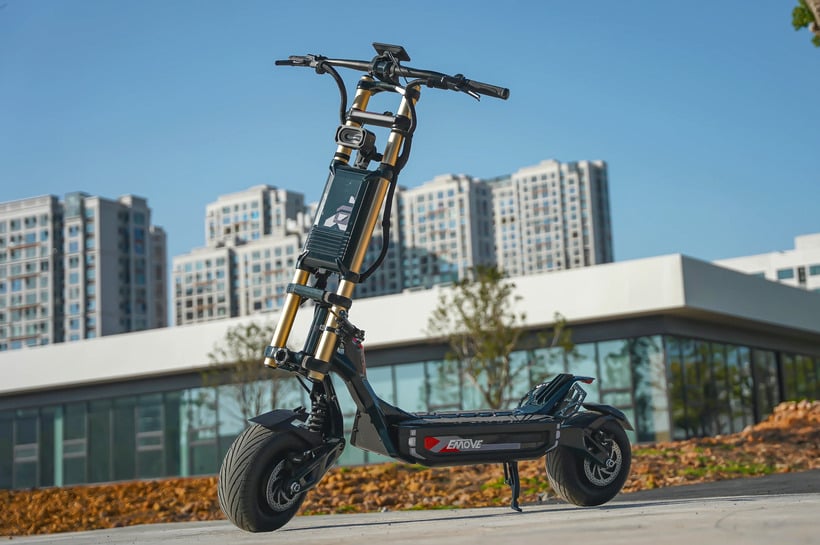
Hooga Daytona
- Max Load: 380 lbs
- Unfolded (L x W x H): 59.6 x 31.8 x 57.0 in
Performance Report
Performance Report:
Tester: Third Party
- Top Speed: 80 mph
- Real Speed: 70 mph**
- 0-15 mph: 1.7 s*
- 0-25 mph: 2.9 s*
- 0-30 mph: 3.5 s*
- 0-35 mph: 4.3 s*
- 0-40 mph: 5.3 s*
- Max Range: 80 miles
- Real Range: 48.9 miles*
- Braking: 3.0 meters*
- Suspension: 8.5/10*
- Max Incline: 45 degrees
- Optimal Incline: 30 degrees*
- Weight: 152 lbs
- Load: 380 lbs
*Based on my calculations of similar scooter test data
Pros & Cons
The Good:
- Extreme power output (10,000W peak)
- High-caliber 72V 60A controllers (same class as the EMOVE Roadster)
- Purpose-built for bigger riders
- Huge deck and ultra-wide handlebars
- Extremely stable
- Built-in steering damper for wobble resistance at high speeds
- Robust dual-stem inspires confidence under load
- Super ergonomic throttle (thumb/trigger hybrid)
- Extremely long real-world range
- First scooter with motorcycle-grade 4-piston brakes
- Fully adjustable hydraulic suspension
- Large 13-inch self-healing tires provide comfort and puncture resistance
- IPX5 water-resistance rating for wet-weather riding
The Bad:
- Expensive
- Extremely heavy
- Overkill for lighter riders (better alternatives exist)
- Limited practicality (huge frame makes it cumbersome to move, store, and transport)
Best Scooter Under $6,000 for 400-500 lb Riders
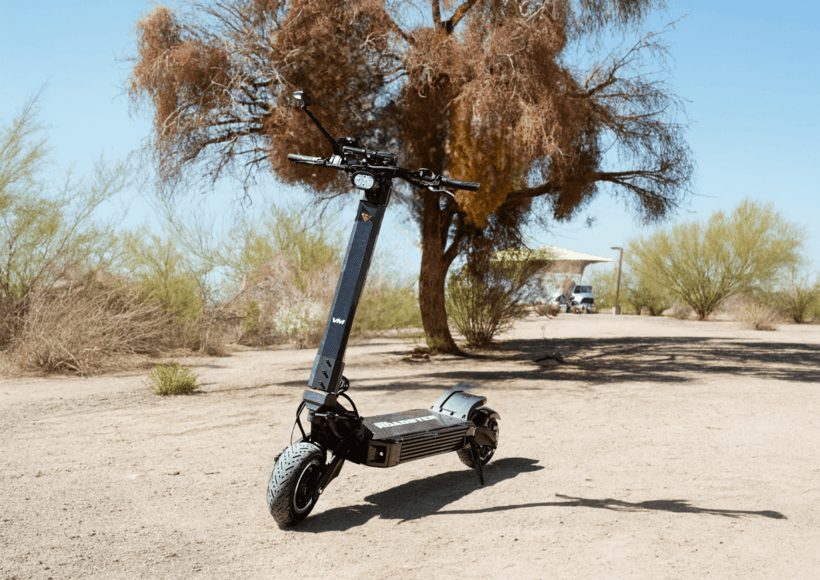
EMOVE Roadster
- Max Load: 500 lbs
- Unfolded (L x W x H): 56.2 x 27.4 x 49.6 in
Performance Report
Performance Report:
Tester: Third Party
- Top Speed: 80 mph
- Real Speed: 72.1 mph**
- 0-15 mph: 1.5 s*
- 0-25 mph: 2.7 s*
- 0-30 mph: 3.1 s*
- 0-35 mph: 4.1 s*
- 0-40 mph: 5.1 s*
- Max Range: 74 miles
- Real Range: 54.7 miles*
- Braking: 2.7 meters*
- Suspension: 8.5/10*
- Max Incline: 50 degrees
- Optimal Incline: 30 degrees*
- Weight: 143 lbs
- Load: 500 lbs
*Based on my calculations of similar scooter test data
**Based on third party test data
Pros & Cons
The Good:
- Extremely fast and rapid acceleration
- Massive peak power (15,456W)
- Highest weight capacity in the industry
- Extremely long real-world range
- Removable battery makes charging easier
- Ultra-strong carbon-fiber chassis reinforced with forged steel components
- Non-folding stem ensures unmatched rigidity
- Built-in steering damper for wobble resistance at high speeds
- Wide and stable platform
- Top-tier Magura 4-piston braking system
- Adjustable hydraulic suspension for dialing in rebound rates
- Tubeless seal-healing tires
- IPX5 water-resistance rating for wet-weather riding
The Bad:
- Extremely expensive
- Very heavy and not practical to move around
- Non-folding design makes it difficult to store and transport
- Overkill for lighter riders
- Too powerful for beginners, recommended only for experienced riders
Compare Heavy-Duty Electric Scooters
VMAX VX5 Pro | VMAX VX2 Pro | Apollo Go | Apollo City Pro | VMAX VX4 | Apollo Phantom | Apollo Pro | Wolf King GTR | Hooga Daytona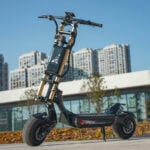 | EMOVE Roadster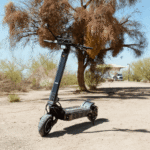 |
|
|---|---|---|---|---|---|---|---|---|---|---|
| Where to Buy | VMAX | VMAX | Apollo | Apollo | VMAX | Apollo | Apollo | Kaabo | Voro | Voro |
| Price | $549 | $799 | $1,099 | $1,299 | $1,449 | $2,199 | $2,449 | $3,499 | $3,695 | $5,795 |
| Weight Category | 250-300 lbs | 250-300 lbs | 250-300 lbs | 250-300 lbs | 300-350 lbs | 300-350 lbs | 300-350 lbs | 300-350 lbs | 350-400 lbs | 400-500 lbs |
| Best Under | Best Under $600 | Best Under $800 | Best Under $1,000 | Best Under $1,200 | Best Under $2,000 | Best Under $2,500 | Best Under $3,000 | Best Under $4,000 | Best Under $5,000 | Best Under $6,000 |
| Review | Review | Review | Review | Review | Review | Review | Review | Review | Review | Review |
| Performance | ||||||||||
| Top Speed | 18 mph | 24 mph | 28 mph | 32 mph | 25 mph | 41 mph | 44 mph | 65.8 mph | 70 mph | 72.1 mph |
| 0-15 MPH | 6.7 s | 3.8 s | 3.8 s | 2.3 s | 3.2 s | 2.3 s | 2.1 s | 1.6 s | 1.7 s | 1.5 s |
| 0-25 MPH | n/a | n/a | No data | 6.1 s | 9.6 s | 4.5 s | 4.3 s | 2.8 s | 2.9 s | 2.7 s |
| Max Range | 22 miles | 22 miles | 30 miles | 43 miles | 62 miles | 40 miles | 63 miles | 112 miles | 80 miles | 74 miles |
| Tested Range | 19 miles | 19.9 miles | 17.6 miles | 27 miles | 36.7 miles | 29 miles | 39 miles | 42.8 miles | 48.9 miles | 54.7 miles |
| Braking | 2.0 meters | 3.0 meters | 3.1 meters | 2.1 meters | 3.4 meters | 2.1 meters | 2.3 meters | 3.0 meters | 3.0 meters | 2.7 meters |
| Suspension | n/a | n/a | 6/10 | 7.5/10 | 6.5/10 | 7.5/10 | 7/10 | 8.5/10 | 8.5/10 | 8.5/10 |
| Max Incline | 14 degrees | 15 degrees | 25 degrees | 20 degrees | 18 degrees | 25 degrees | 30 degrees | 50 degrees | 45 degrees | 50 degrees |
| Optimal Incline | 8 degrees | 9 degrees | 12 degrees | 13 degrees | 11 degrees | 15 degrees | 18 degrees | 30 degrees | 30 degrees | 30 degrees |
| Suitability | ||||||||||
| Max Load | 265 lbs | 287 lbs | 265 lbs | 265 lbs | 330 lbs | 300 lbs | 330 lbs | 330 lbs | 380 lbs | 500 lbs |
| Dimension (L) | 43.7 in | 44.5 in | 46.5 in | 47.2 v | 48.0 in | 49.0 in | 55.1 in | 50.9 in | 59.6 in | 56.2 in |
| Dimension (W) | 21.9 in | 23.0 in | 20.4 in | 24.8 in | 23.0 in | 27.0 in | 28.0 in | 29.5 in | 31.8 in | 27.4 in |
| Dimension (H) | 46.9 in | 48.3 in | 49.0 in | 50.5 in | 51.5 in | 51.0 in | 53.0 in | 53.0 in | 57.0 in | 49.6 in |
| Specs | ||||||||||
| Motor | 36V 400W | 48V 500W | 36V 350W (x2) | 48V 500W (x2) | 48V 500W | 52V 1200W (x2) | 52V 1200W (x2) | 72V 2000W (x2) | 72V 2000W (x2) | 84V 2000W (x2) |
| Throttle | Thumb | Thumb | Thumb | Thumb | Thumb | Thumb | Thumb | Finger | Finger | Thumb |
| Battery | 36V 10.4Ah FST | 48V 16Ah FST | 36V 15Ah FST | 48V 20Ah FST | 48V 23.2Ah FST | 52V 23.4Ah FST | 52V 30Ah Samsung | 72V 35Ah LG | 72V 35Ah LG | 84V 50Ah Samsung |
| Charge Time | 5 hours | 8.5 hours | 7.5 hours | 4.5 hours | 12 hours | 12 hours | 6 hours | 12 hours | 10 hours | 6 hours |
| Brakes | Drum, Regen | Drum, Regen | Drum, Regen | Drums (x2), Regen | Drum, Regen | Discs (x2), Electronic | Drums (x2), Regen | Hydraulic Discs (x2), Electronic | Hydraulic Discs (x2), Electronic | Hydraulic Discs (x2), Electronic |
| Suspension | None | None | Spring, Rubber Block | Triple Springs, Swingarms | Hydraulic Fork, Rubber Block, Swingarms | Quad Springs, Swingarms | Adjust. Hydraulic Spring, Rubber Cartridge | Adjust. Hydraulic Fork, Adjust. Hydraulic Spring, Swingarms | Adjust. Hydraulic Shocks, Swingarms | Adjust. Hydraulic Shocks, Swingarms |
| Tire Size | 9 in | 10 in | 9 in | 10 in | 10 in | 10 in | 12 in | 12 in | 13 in | 11 in |
| Tire Type | Air (Tubeless) | Air (Tubeless) | Air (Tubeless, Self-Healing) | Air (Tubeless, Self-Healing) | Air (Tubeless) | Air (Inner-Tube) | Air (Tubeless, Self-Healing) | Air (Tubeless, Self-Healing) | Air (Tubeless, Self-Healing) | Air (Tubeless, Self-Healing) |
| Weight | 36.8 lbs | 45 lbs | 46 lbs | 65 lbs | 63.9 lbs | 77 lbs | 93 lbs | 137 lbs | 152 lbs | 143 lbs |
| Foldability | Folds at Stem | Folds at Stem | Folds at Stem | Folds at Stem | Folds at Stem | Folds at Stem | Folds at Neck | Folds at Neck | Folds at Stem | Doesn't Fold |
| IP Rating | IPX6 | IPX6 | IP66 | IP66 | IPX6 | IP54 | IP66 | IPX5 | IPX5 | IPX5 |
| Lights | Headlight, Taillight, Turn Signals | Headlight, Taillight, Turn Signals | Headlight, Taillight, Turn Signals | Headlight, Taillight, Turn Signals | Headlight, Taillight, Turn Signals | Headlight, Taillight, Turn Signals | Headlight, Stem, Deck, Taillight, Customizable RGBs, Turn Signals | Dual Headlights, Taillight, Deck, Turn Signals | Headlight, Taillight, Deck, Turn Signals | Headlight, Taillight, Deck, Turn Signals |
| Terrain | Street | Street | Street | Street | Street, Off-Road | Street, Off-Road | Street | Street, Off-Road | Street, Off-Road | Street, Off-Road |
How Did I Test the Scooters?
Test Criteria
To find the 10 best electric scooters for heavy riders, I shortlisted 44 heavy-duty models and tested each across their maximum load-bearing capacities, dimensions, ride quality, motor power, battery power, and build quality.
Maximum & Optimal Load
Throughout the guide, you’ll see a lot of references to ‘load’ – that is, how much rider weight a scooter can support. This figure is included in each scooter’s spec sheet as a maximum. However, the specs that go alongside the load rating (i.e. top speed, mileage, etc) are based on tests that the manufacturers have completed with riders that weigh just 165-175 lbs. As a result, these specs can be a little deceptive as they don’t reflect the performance of the scooter at its maximum load.
Even if you fall within the manufacturer-quoted load capacity, you may not achieve the same performance as a lighter rider.
To account for this, I reported on how each scooter performed under my 190 lb weight. I then extrapolated the data to assess the optimal load-bearing capacity – that is, how much rider weight a scooter can support before performance begins to wane. Based on my tests, I found that this typically equates to 85% of the maximum load.
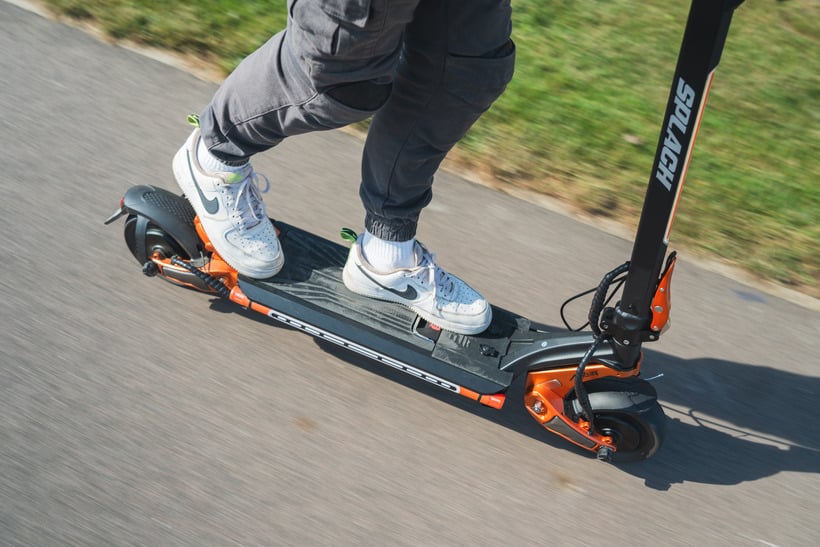
How I Test Suitability For Riders of Different Weights & Heights
Dimensions
An electric scooter’s suitability for bigger riders is dependent on its dimensions. To address this, I took several measurements.
Firstly, I measured the width of the handlebars. Based on my many years of testing, I’ve found a direct correlation between handlebar width and control (the wider the bars, the greater the control). Importantly, my assessment of width was made in relation to each scooter’s power, as well as the practicality for bigger riders (i.e. do they provide enough space so that you don’t feel cramped).

Secondly, I reported on the size of each scooter’s deck and kickplate to accurately assess the amount of space that’s usable. I also measured ground clearance to make recommendations on how each scooter could be ridden (i.e. in some cases, heavier riders can cause suspension systems to sag thereby reducing clearance and limiting their ability to roll over curbs, forest tracks, etc).
The last measurement that I made was the distance between the deck and the handlebars. This was used to identify the maximum rider height that each scooter could be comfortability ridden at (i.e. if it’s too short, you’re forced to crouch over and have less control).
Ride Quality
Ride quality is an extremely important area of assessment since it’s the key indicator of whether an electric scooter is enjoyable to ride. With this in mind, I garnered insights into how each scooter felt – including their handling and comfort.
Aside from my hands-on tests and reports on each scooter’s dimensions, I also measured the angle at which the steering columns were positioned to a vertical axis through the front axles (otherwise known as the rake angle). The smaller the angle, the less effort required to turn the handlebars, but the less stable the scooter. Conversely, a larger rake angle required more effort to turn but made the scooter more stable. During my assessments, I made sure to select the scooters that hit the sweet spot between the two to maintain both stability and maneuverability.

Then, to assess comfort, I placed particular focus on each scooter’s ability to soak up shocks. The heavier the rider, the more pronounced that bumps and vibrations feel. Consequently, a decent suspension setup is required to ensure the utmost comfort. Now, there’s an element of subjectivity here, but my years of experience give me an accurate feel for what’s good and bad.
Using a shock absorption scale from 1 to 10 – where 1 is extremely stiff and 10 is extremely soft – I assessed the performance of each scooter’s springs, swingarms, and bushings. Through this process, I gauged the amount of travel in the suspension, rebound and compression rates, and whether there was any bottoming out. I also reported on the adjustability of the suspension systems, as well as the ability to add preload (i.e. tightening the springs to prevent them from bottoming out – the more preload added, the greater the force needed to compress the springs).

Motor Power (Acceleration)
The power of a motor is determined by its voltage and watts.
Voltage signifies the intensity at which electricity is being pushed through a motor. Typically, electric scooter motors are rated at either 36V, 48V, 52V, 60V, 72V, or, in rare cases, 84V. The higher the voltage, the greater the torque and acceleration.
Watts, on the other hand, are units of measurement that determine the size of a motor. This indicates the amount of power that the motor can produce. The higher the watts, the greater the top speed.
While the weight of bigger riders doesn’t affect top speed, it can slow your acceleration as a result of the increased rolling and air resistance.
To account for this, I tested each scooter’s acceleration and picked the top-performing models relative to their price.
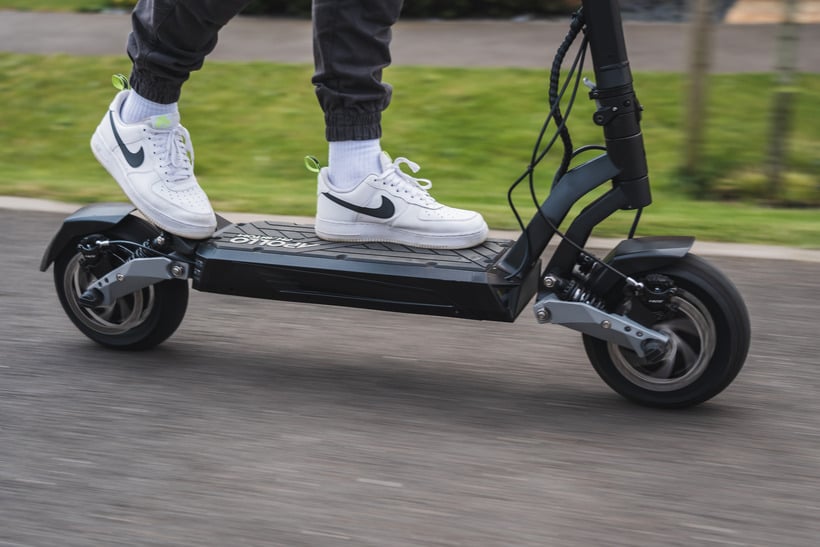
To establish accurate results, I conducted multiple tests across different intervals (i.e. 0-15 mph, 0-25 mph, etc). For each interval, I conducted 3x two-way directional runs on a flat, dry road, and then averaged the data (in seconds). To ensure consistency across each scooter, zero-start modes were enabled (where possible), the performance settings were dialed up to the max, the tires were pumped up to their recommended PSI, and the batteries were fully charged.
It’s important to note that the results from my tests should be viewed as an indicator of performance since they may differ depending on your profile (i.e. if you’re heavier than me, you’ll accelerate slower). The comparative acceleration data, however, serves as a useful foundation for benchmarking performance.
Battery Power (Range)
The increased weight of heavier riders directly impacts the efficiency of an electric scooter’s battery. The higher the load, the lower the range. For scooters to perform as intended, the batteries have to overcompensate for the extra weight.
Although manufacturers list maximum range figures, these are often based on a 165 lb rider, flat terrain, and riding in the slowest setting. To give a more accurate insight into performance, I reported on how each performs under real-world conditions, taking into account my weight of 190 lbs, periods of fast acceleration, cruising, and multiple stops.

It’s important to note that the results from my tests should be viewed as an indicator of performance since they may differ depending on your profile (i.e. if you’re heavier than me, you’ll get less range). The comparative range data, however, serves as a useful foundation for benchmarking performance.
Aside from these reports, I noted the size and quality of the batteries, since they influence a scooter’s range credentials. I also reported on each scooter’s battery management system by assessing how their protection features ensured healthy and safe operation (i.e. protection against over-voltage, low-voltage, over-discharge, over-current, and over-temperature).
Build Quality
It may sound like a case of stating the obvious, but the build quality of an electric scooter is crucial – especially as bigger riders exert greater pressures and forces that can leave weaknesses ruthlessly exposed.
To assess each scooter I reported on their craftsmanship, durability, and reliability.

To do this, I assessed the materials used (i.e. for the frame and consumables), how the parts were designed (i.e. were they OEM or proprietary, forged or cast, manufactured using one-piece CNC or welded together), and how they were assembled (i.e. did each part fit seamlessly with the next to achieve a desired outcome or did it have a clunky Frankenstein feel).
I also tested the rigidity of each scooter’s folding joint to assess stem wobble. For example, when I tested the Unagi Voyager – a scooter made from carbon fiber and with a one-click folding mechanism – I noticed that after braking and pulling back on the handlebars repeatedly that the stem began to wobble back and forth.
As part of my selection process, I only chose scooters that felt rock-solid.








